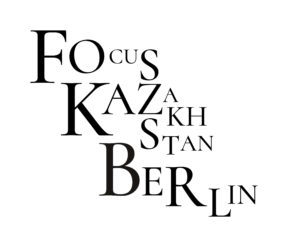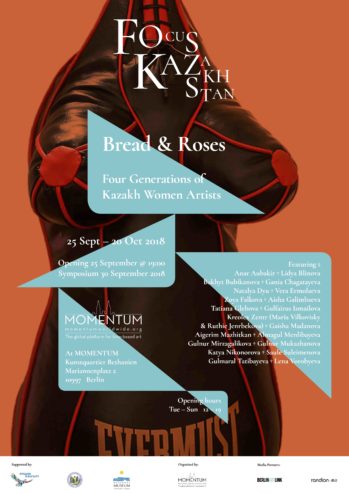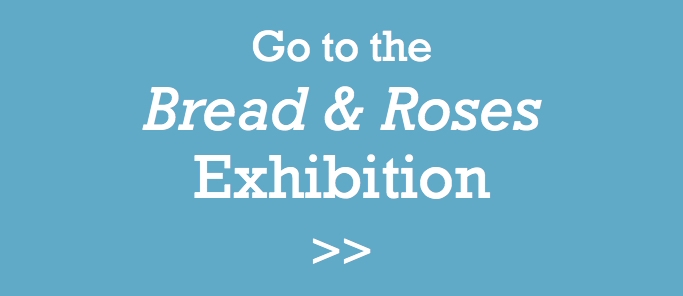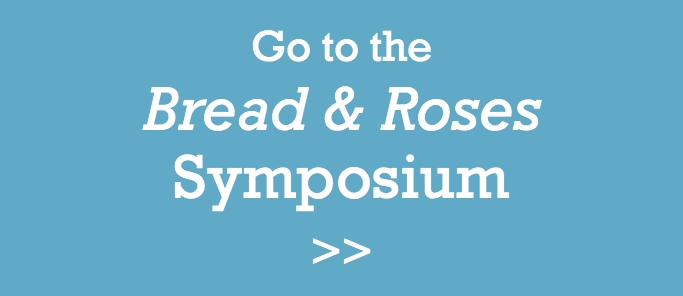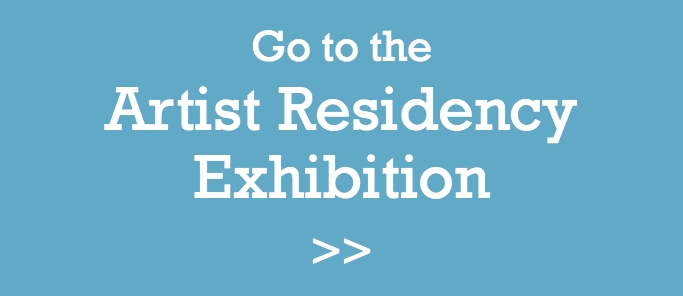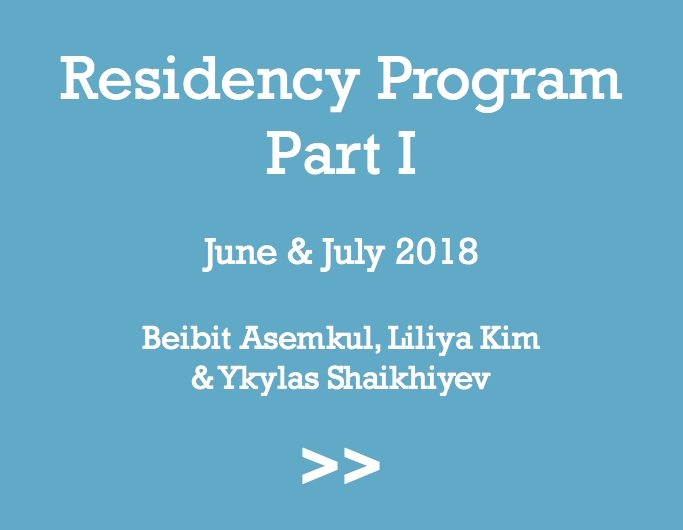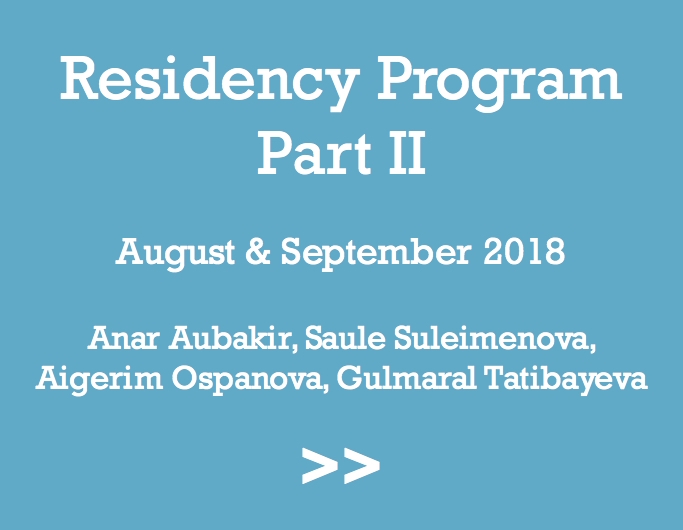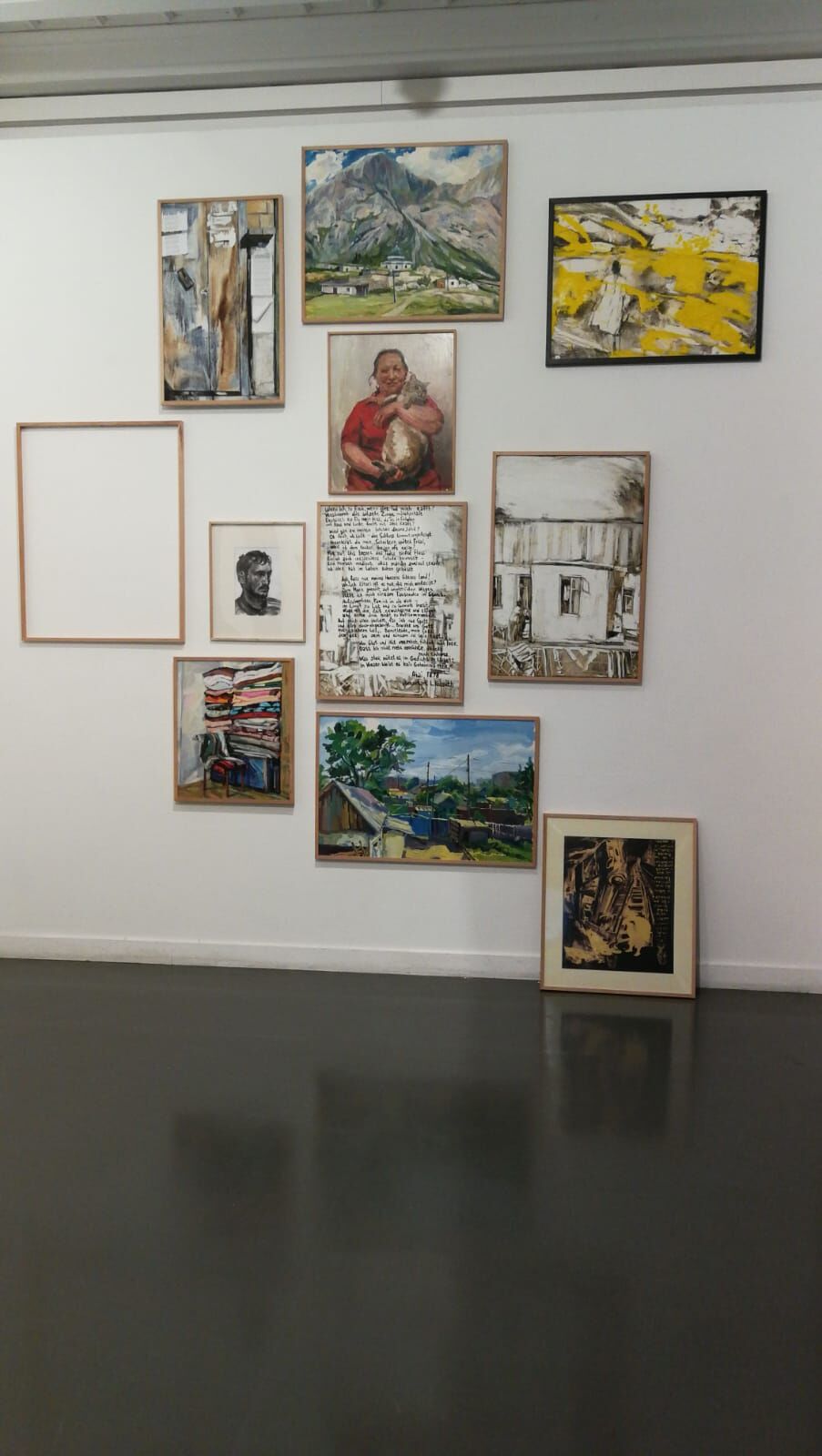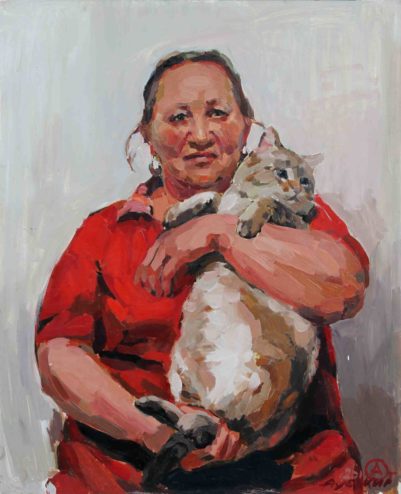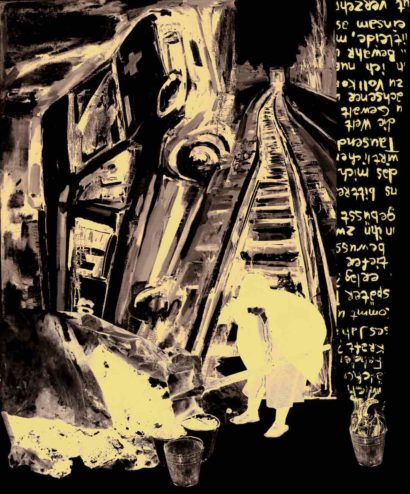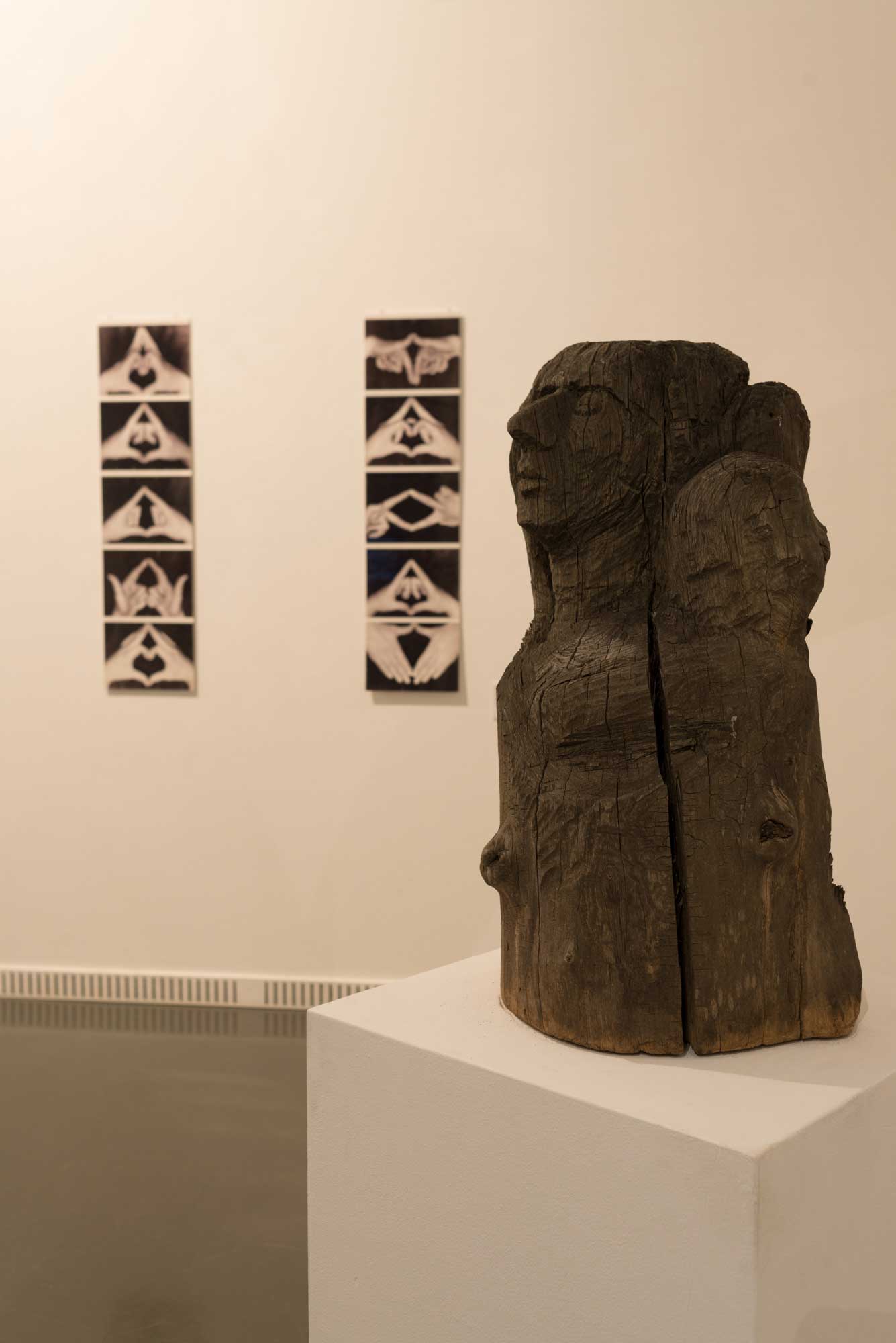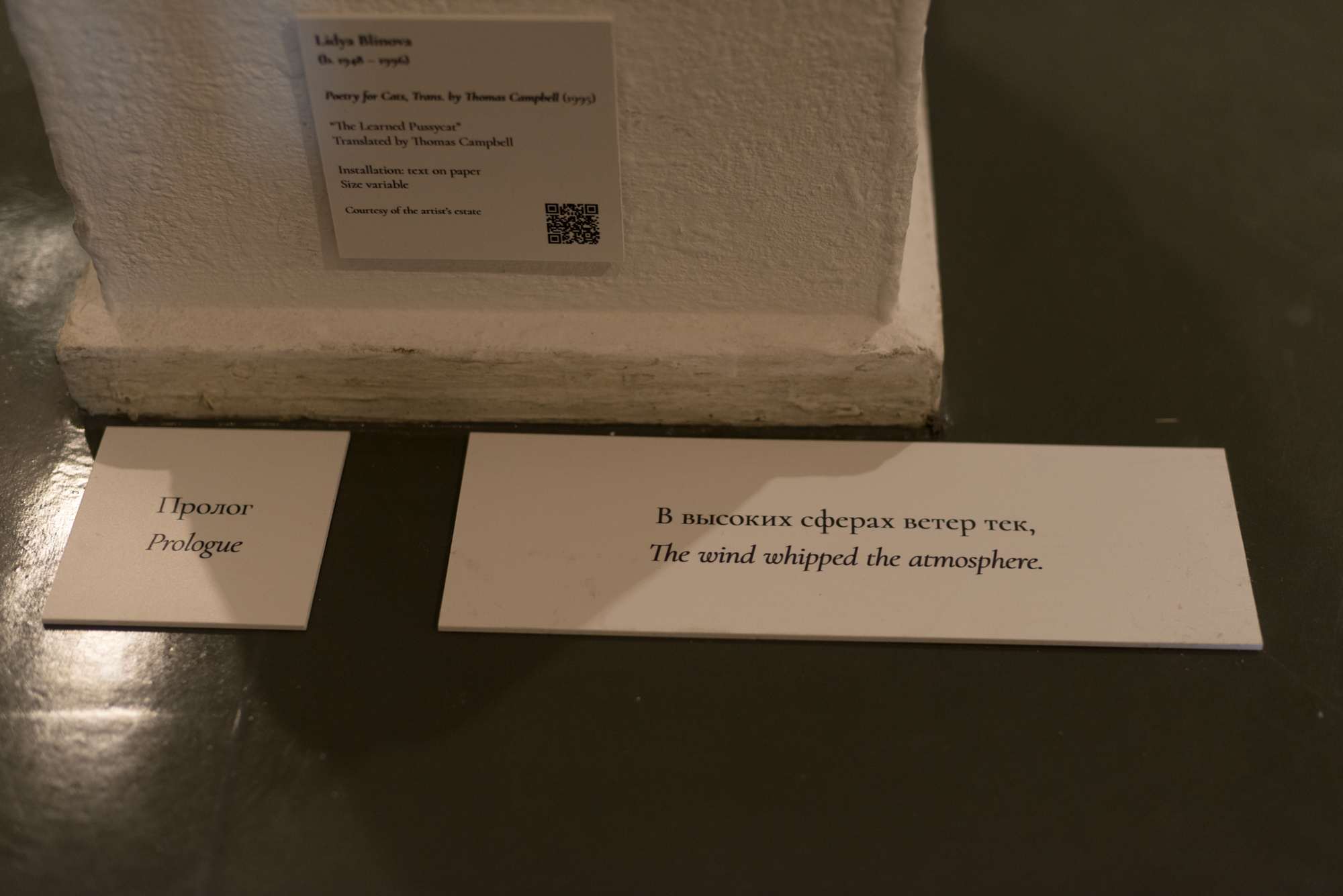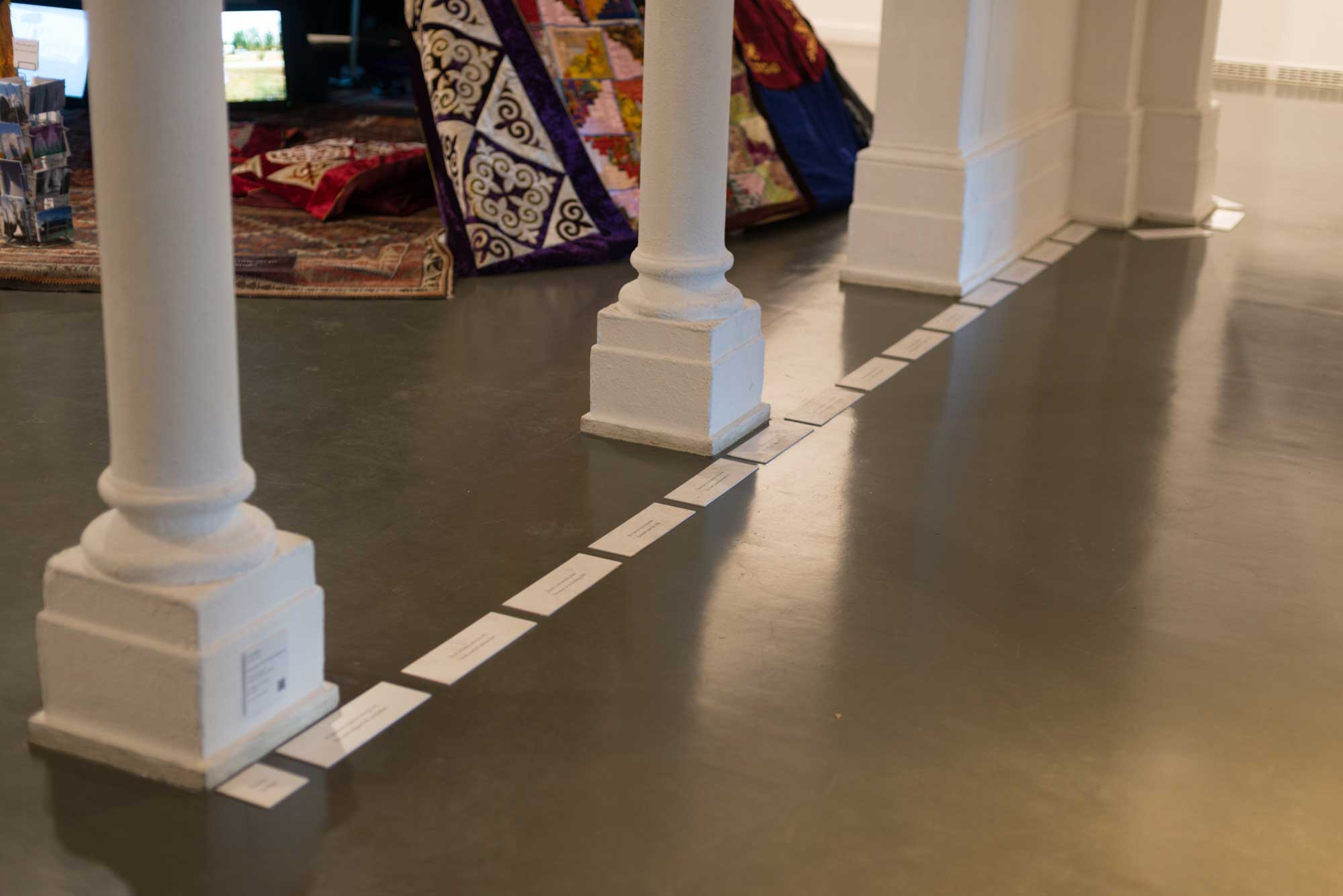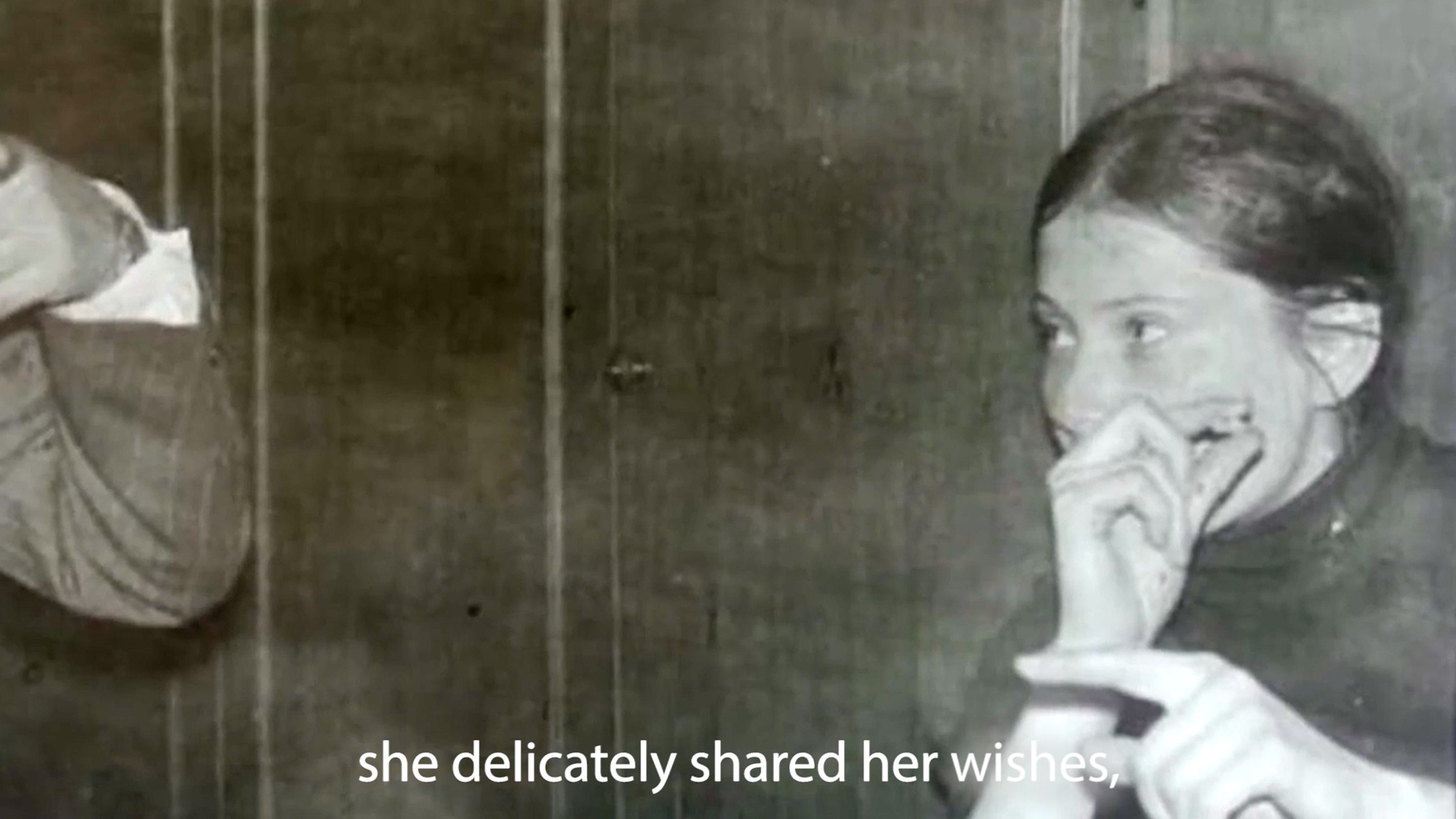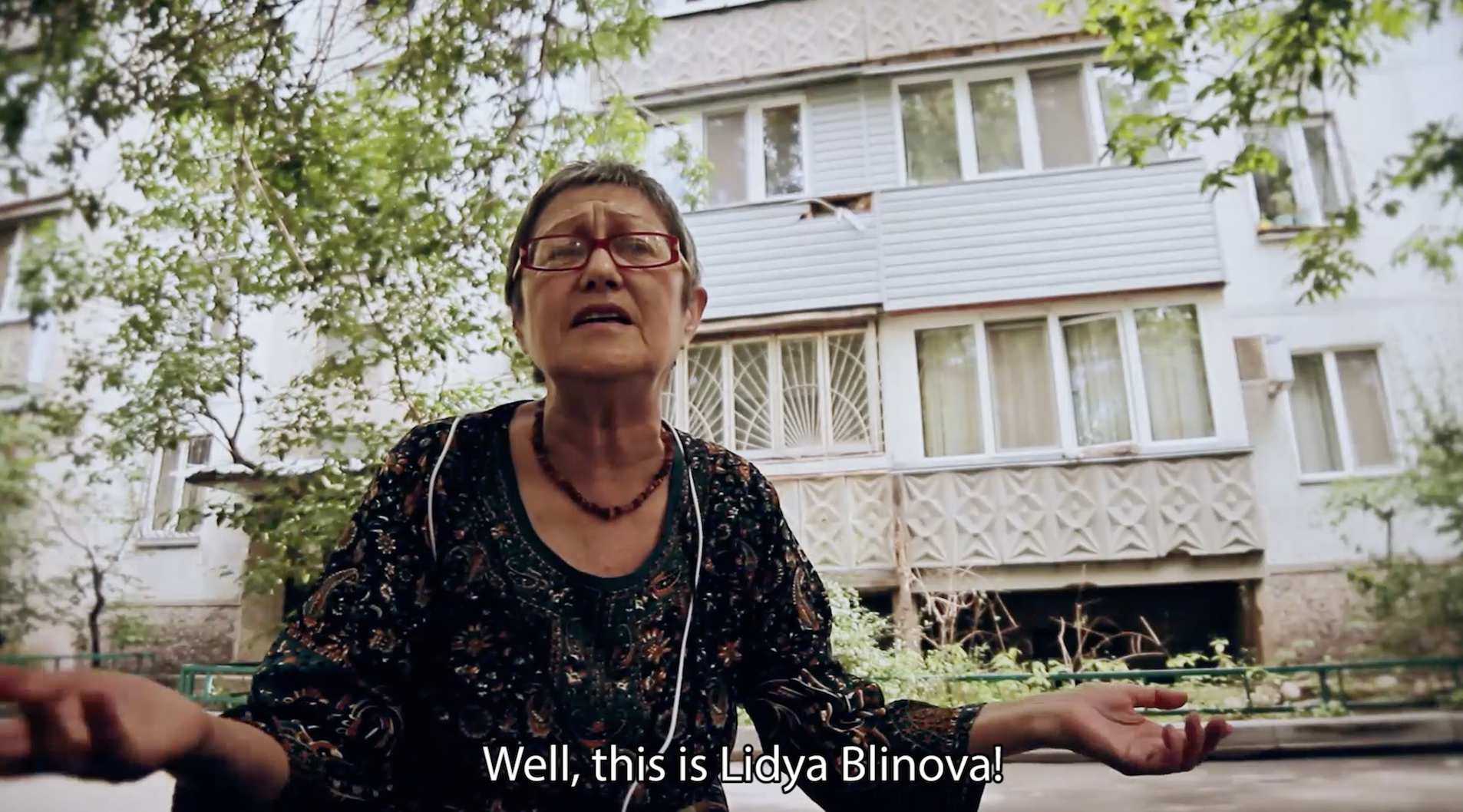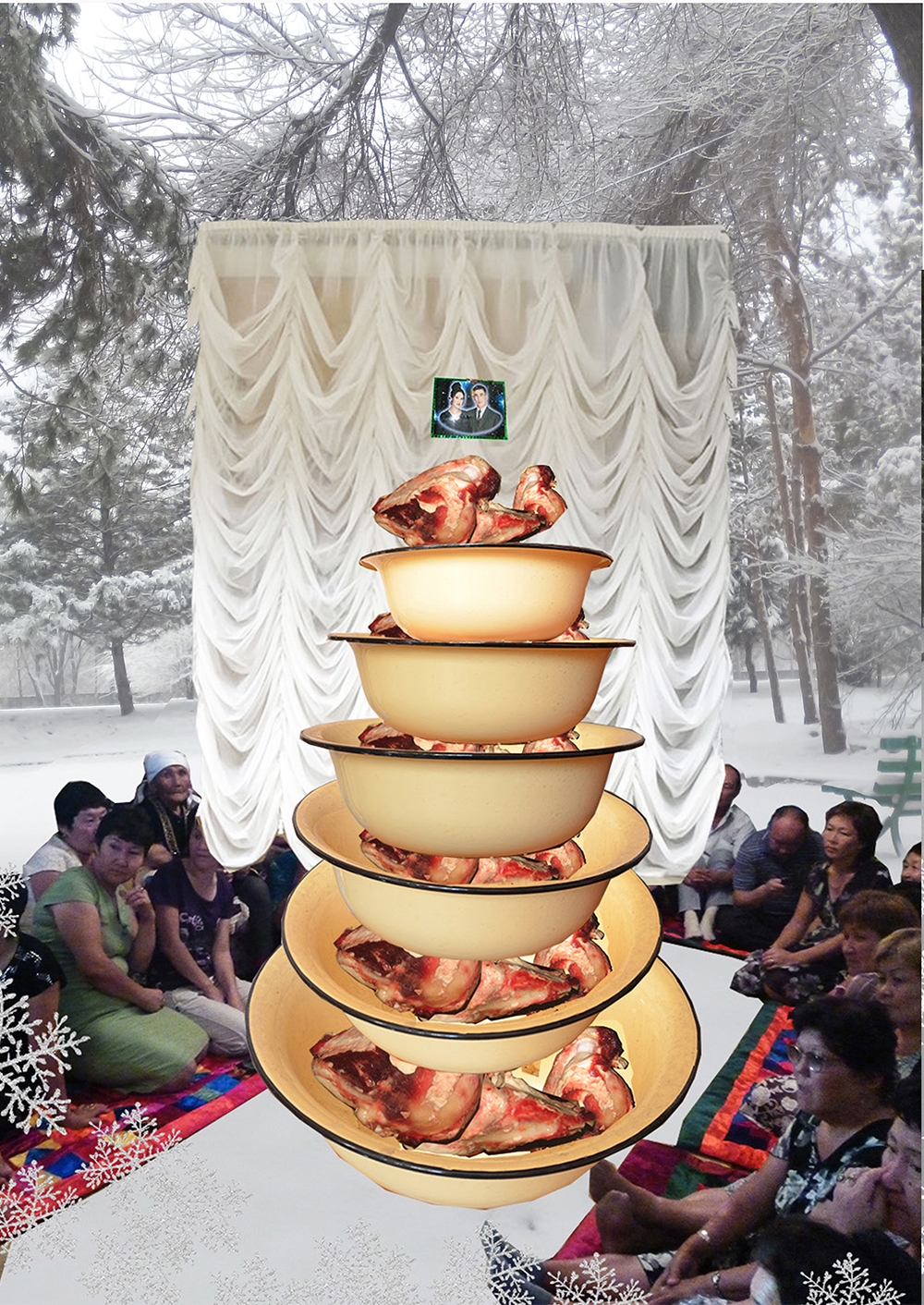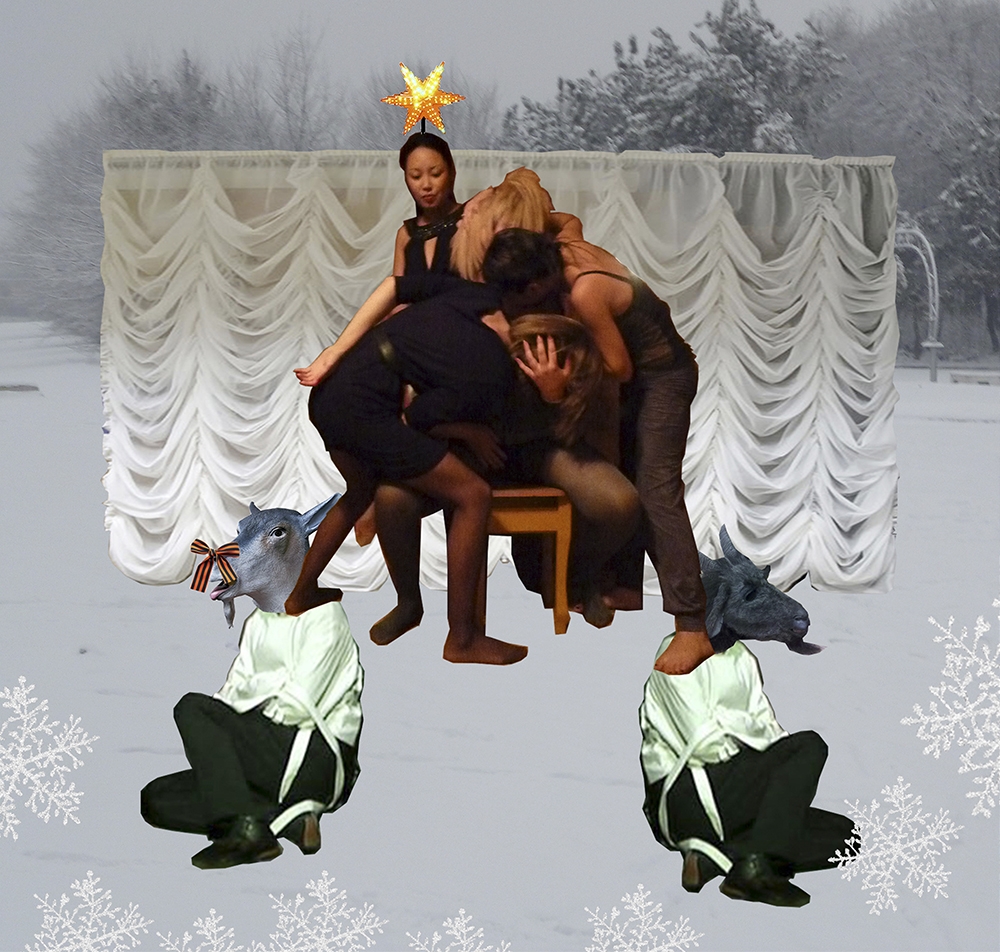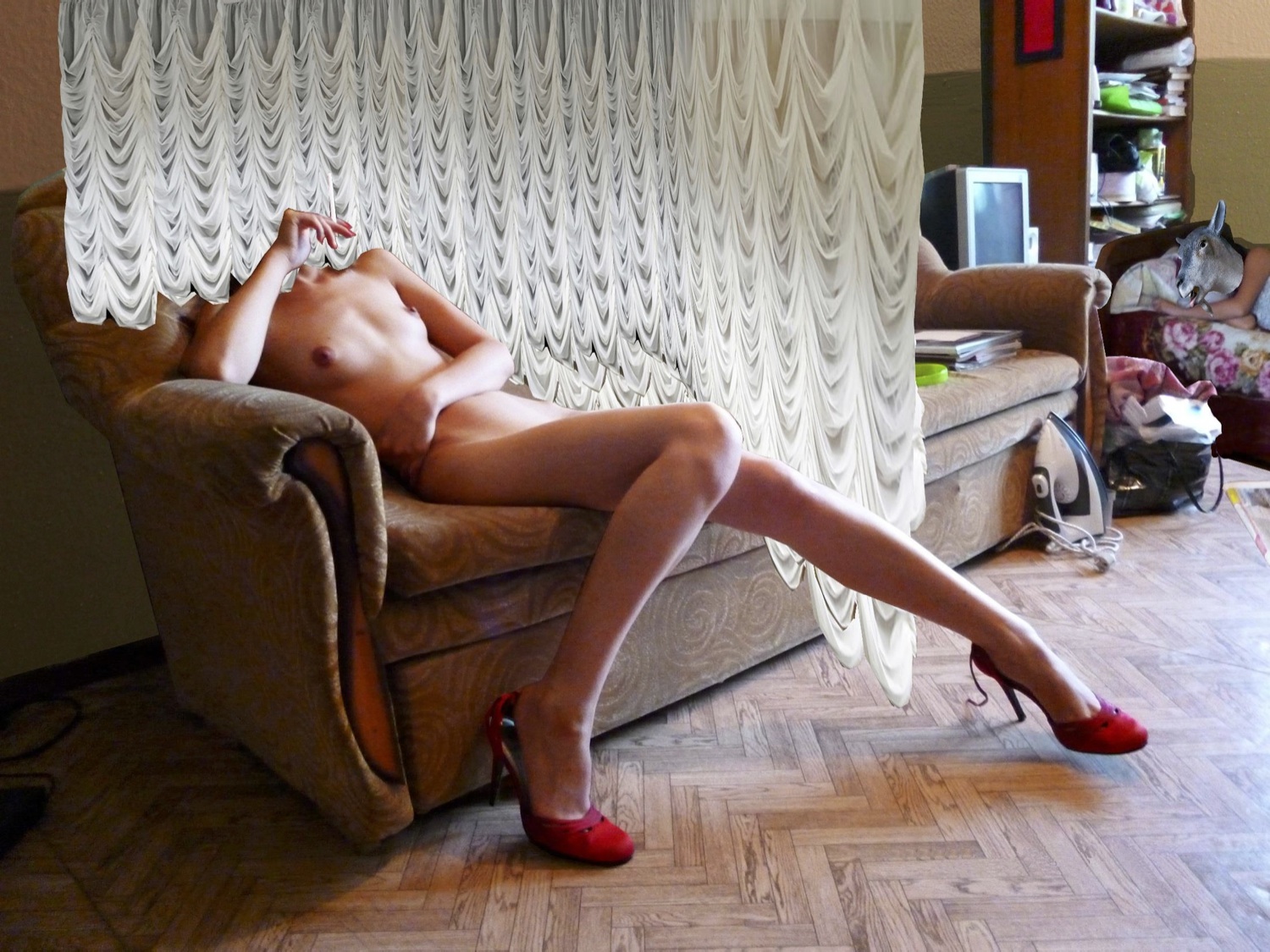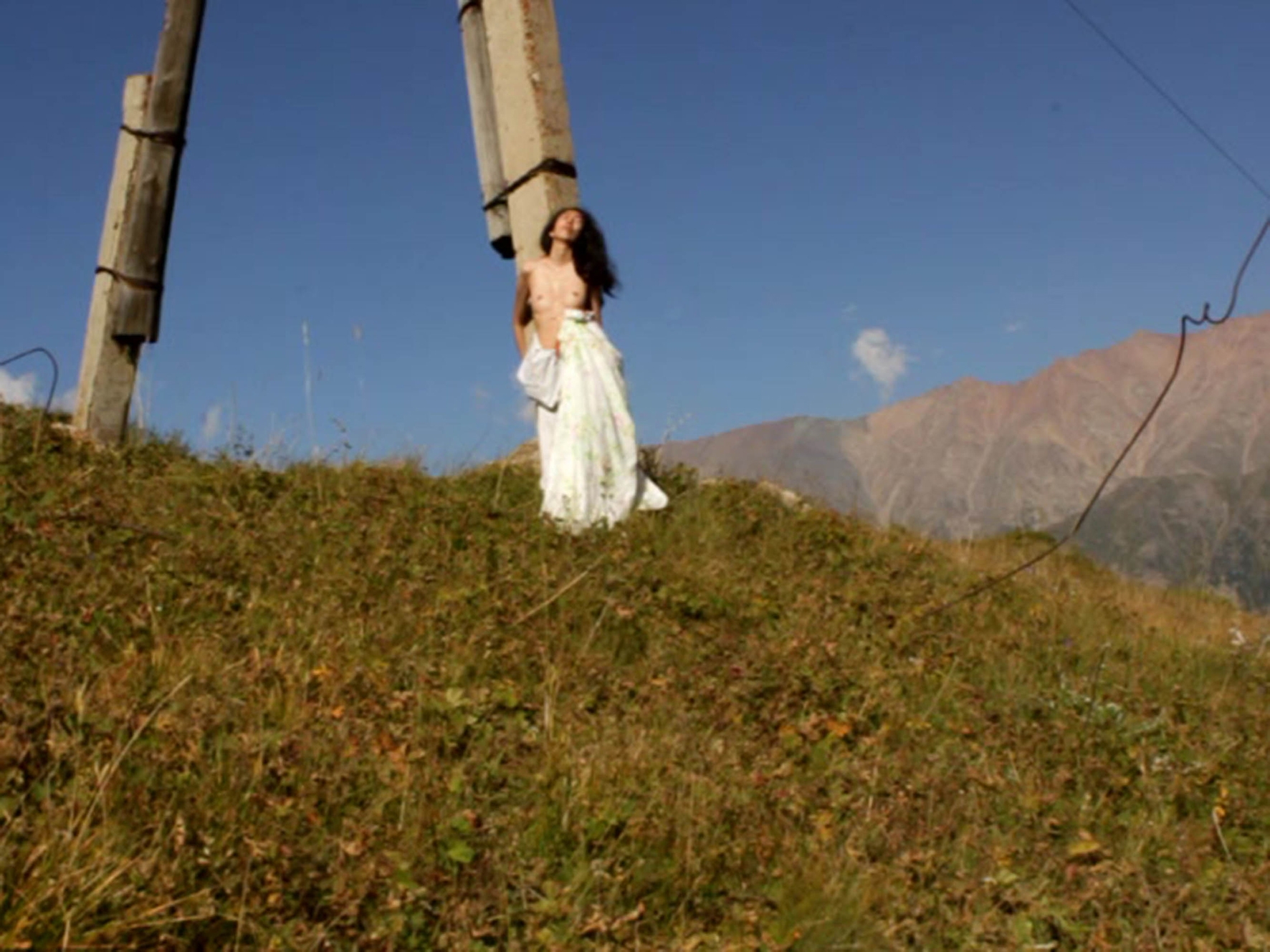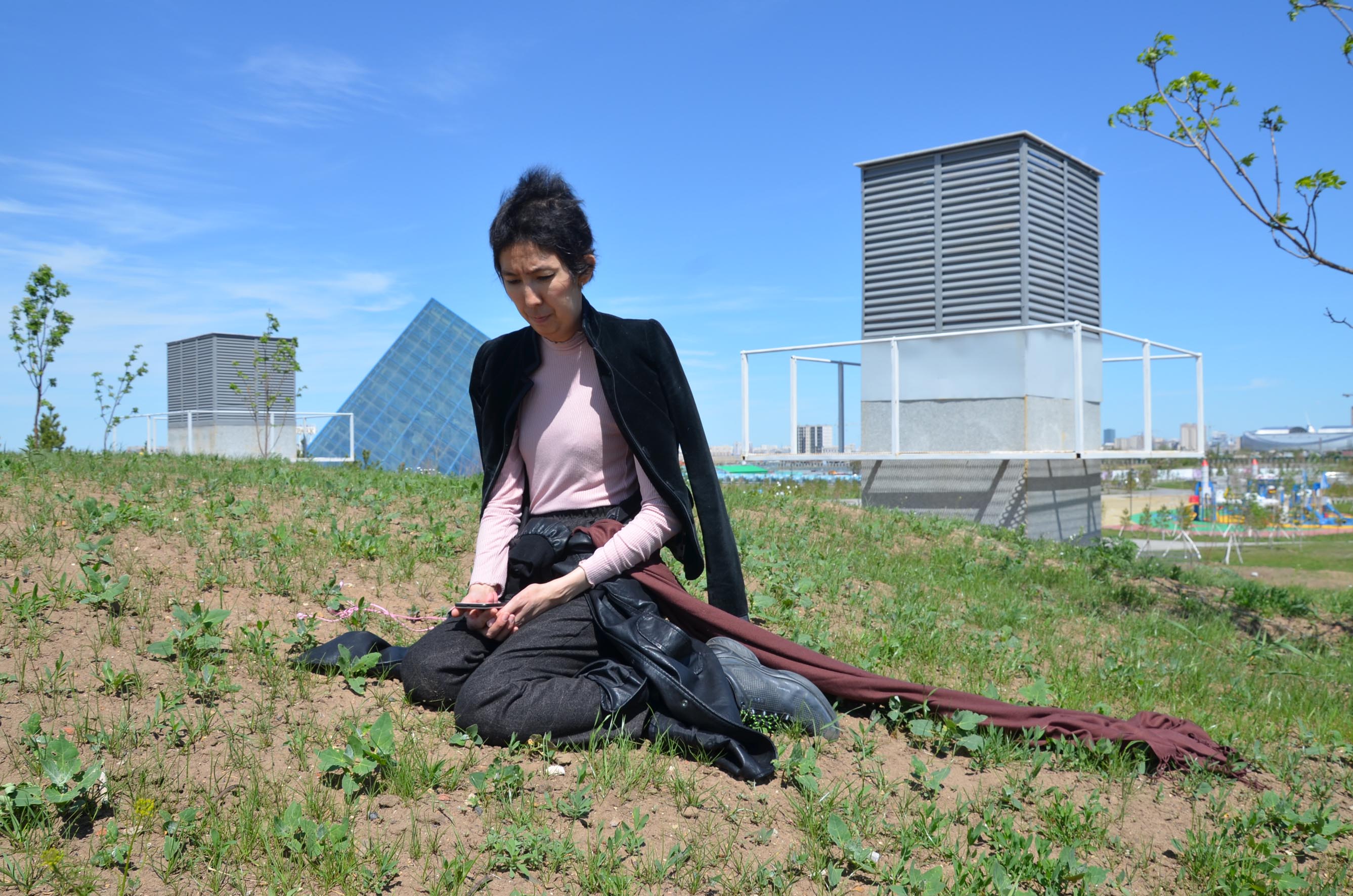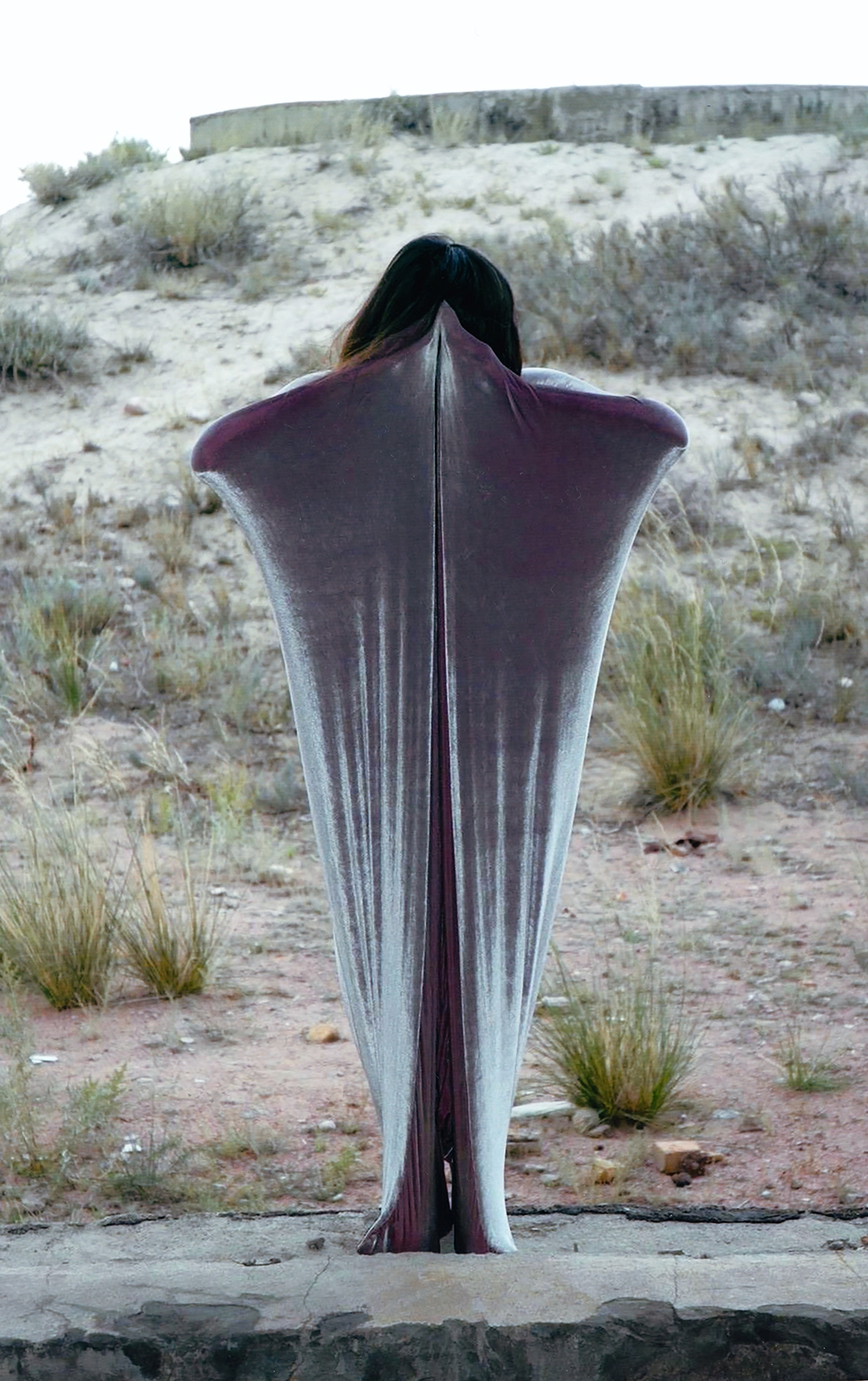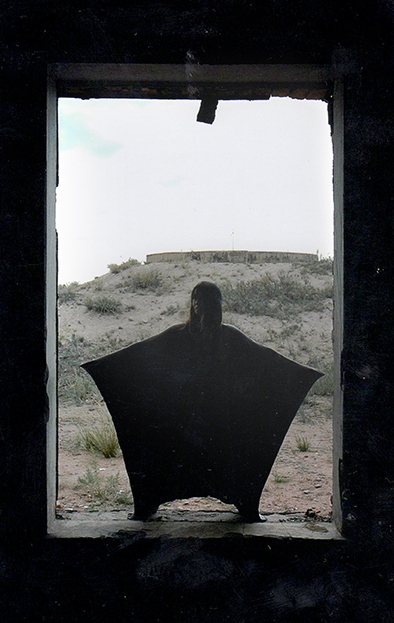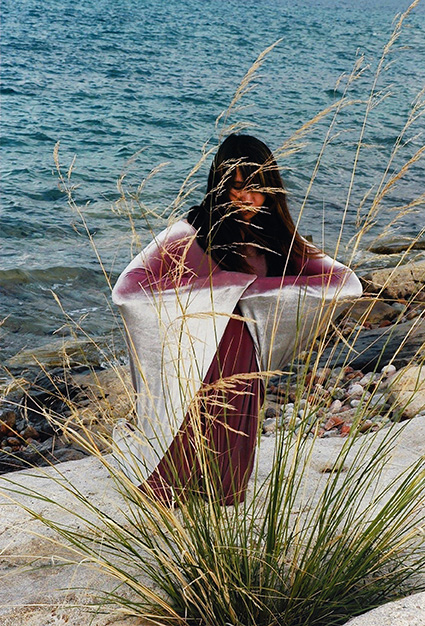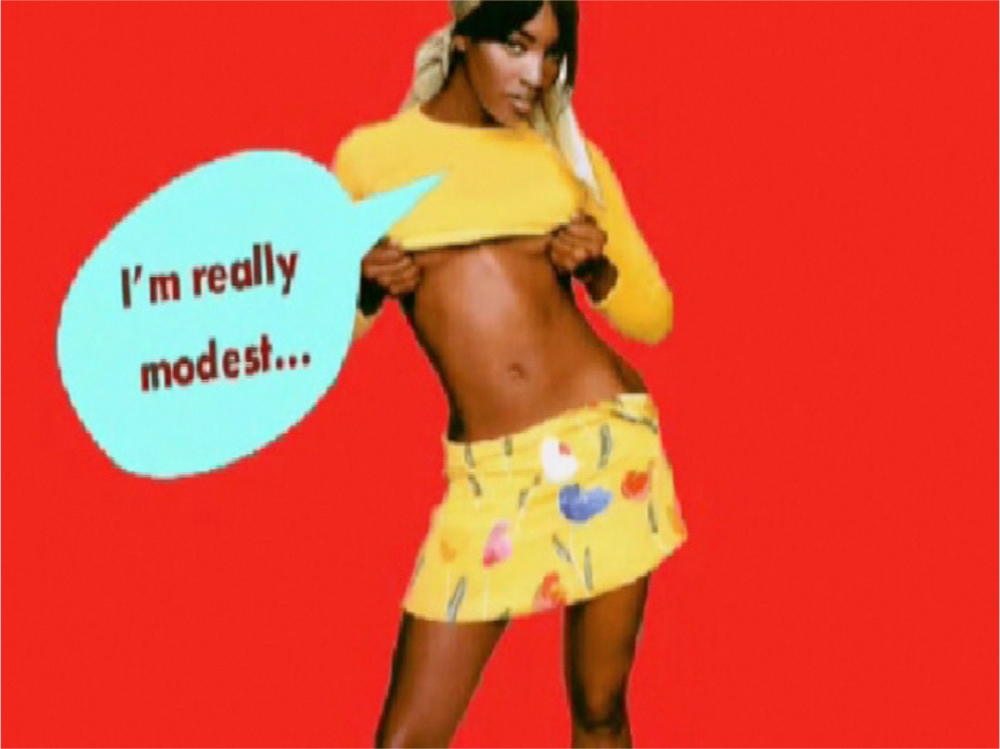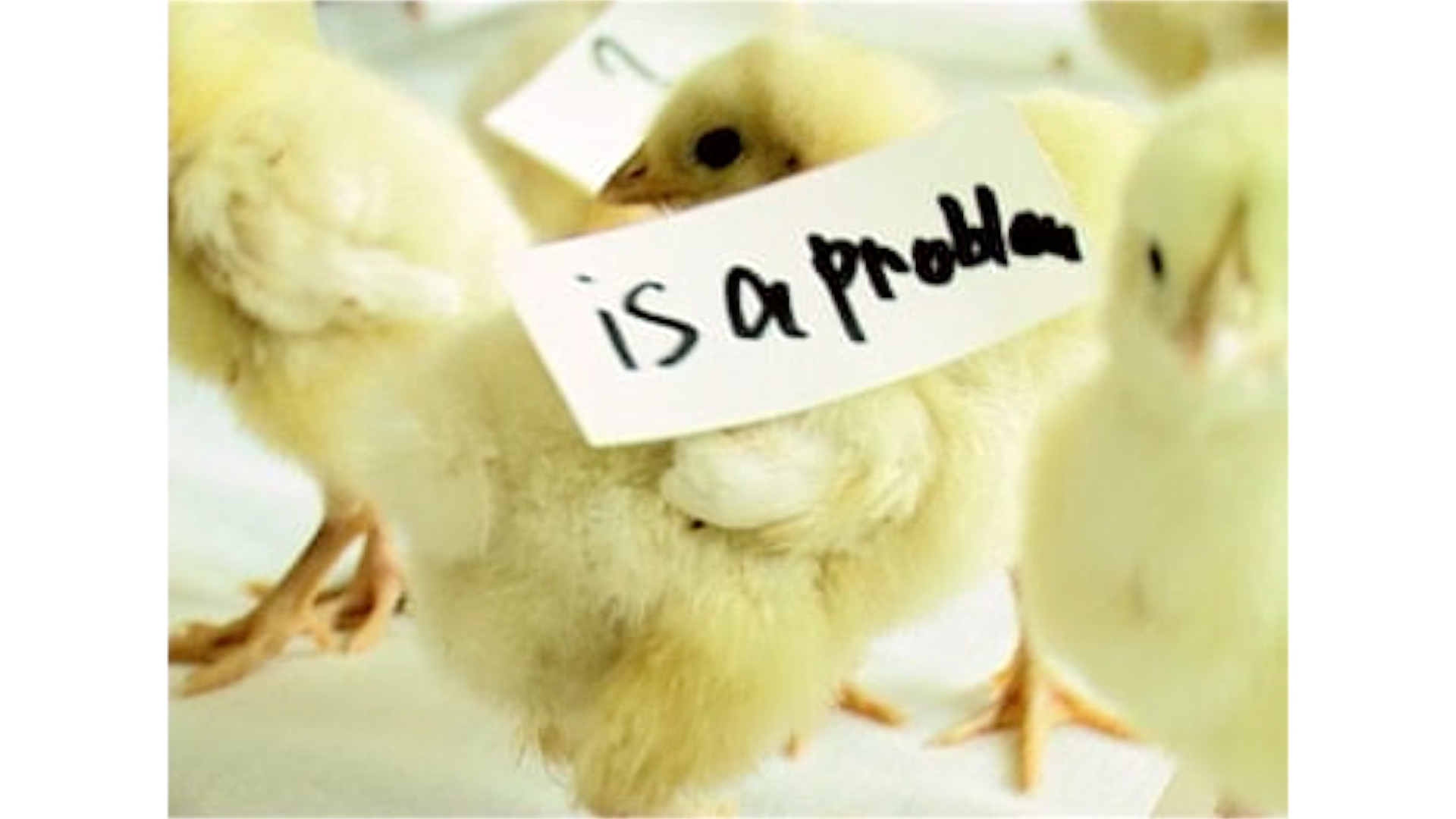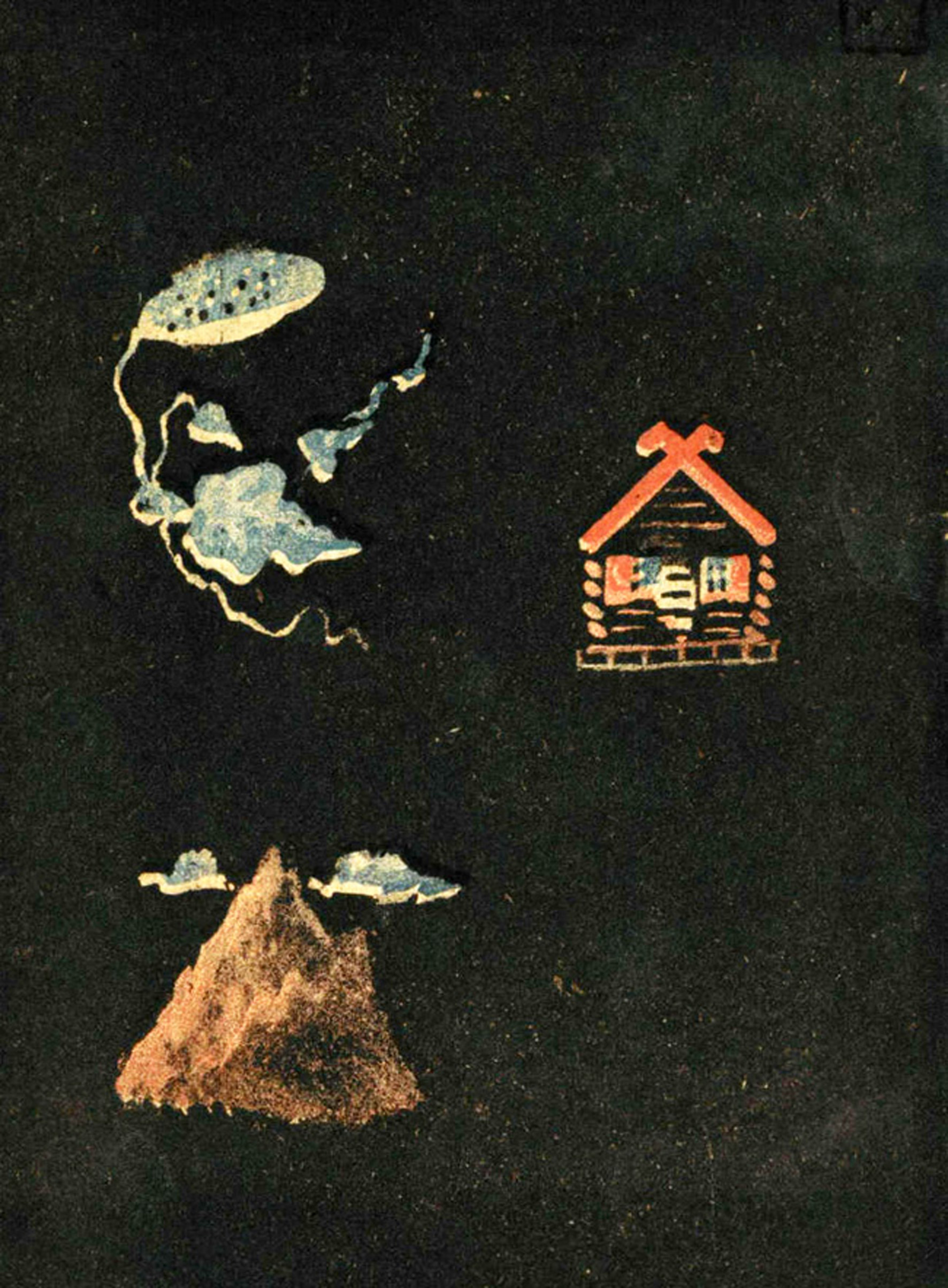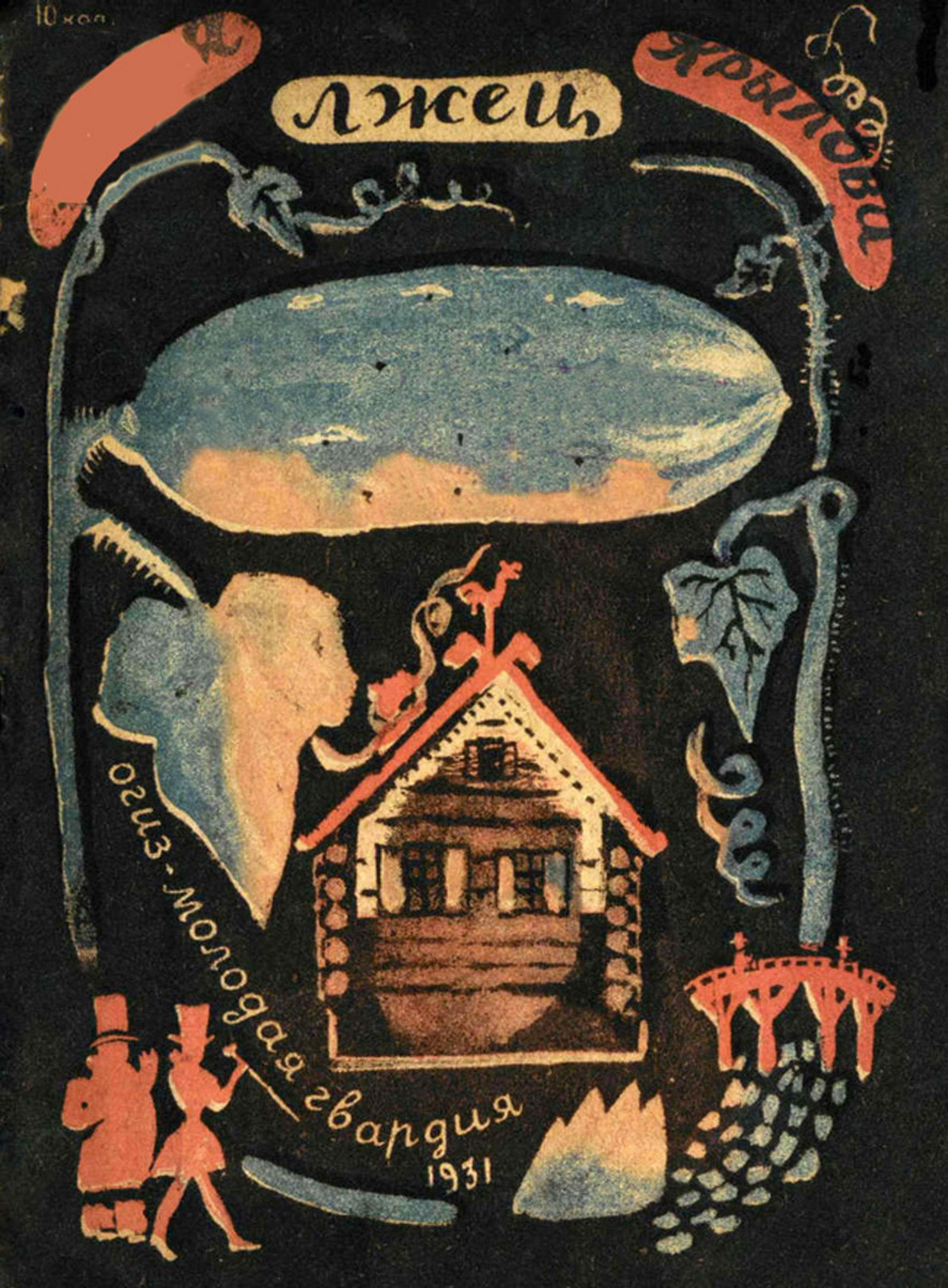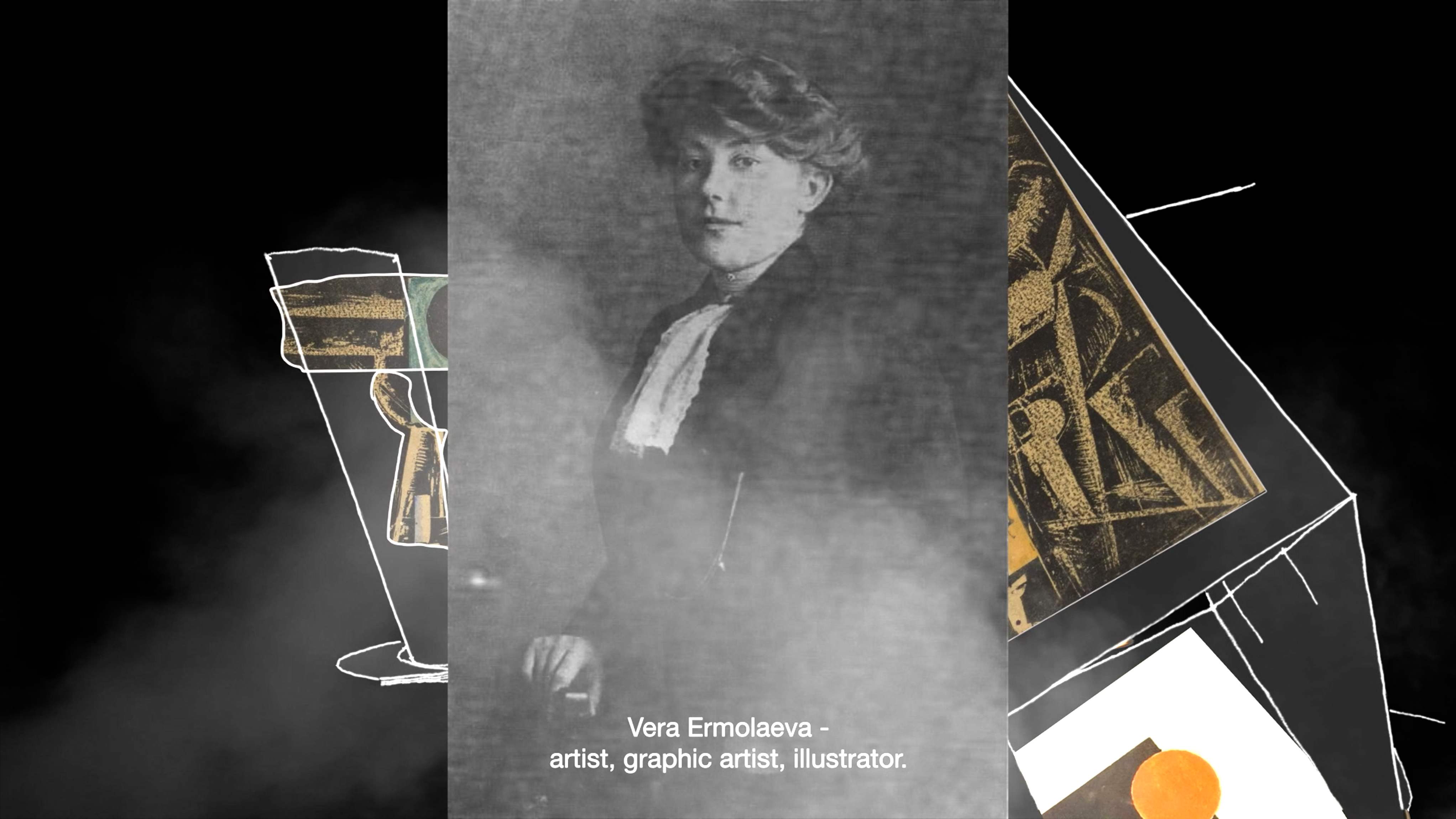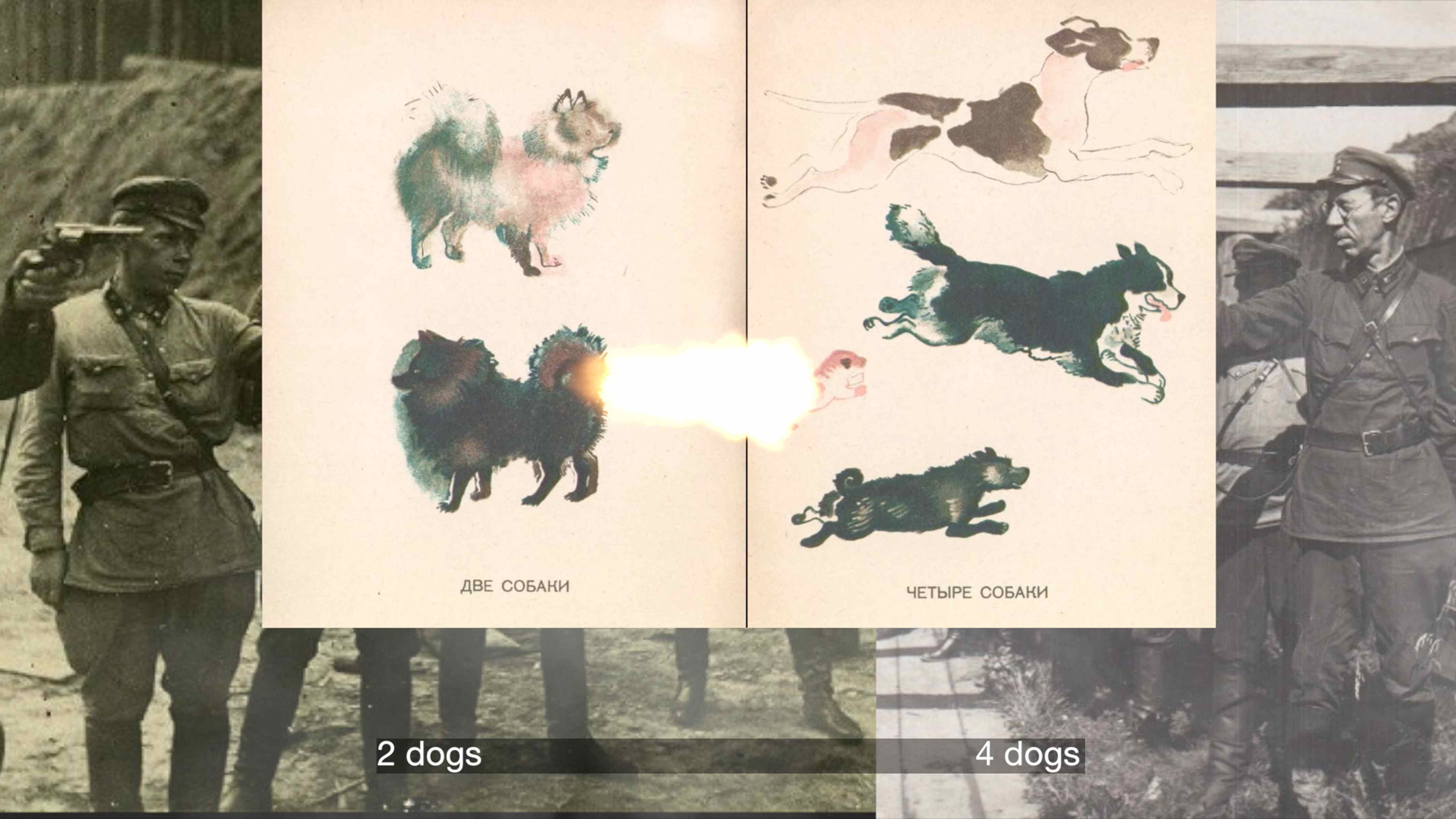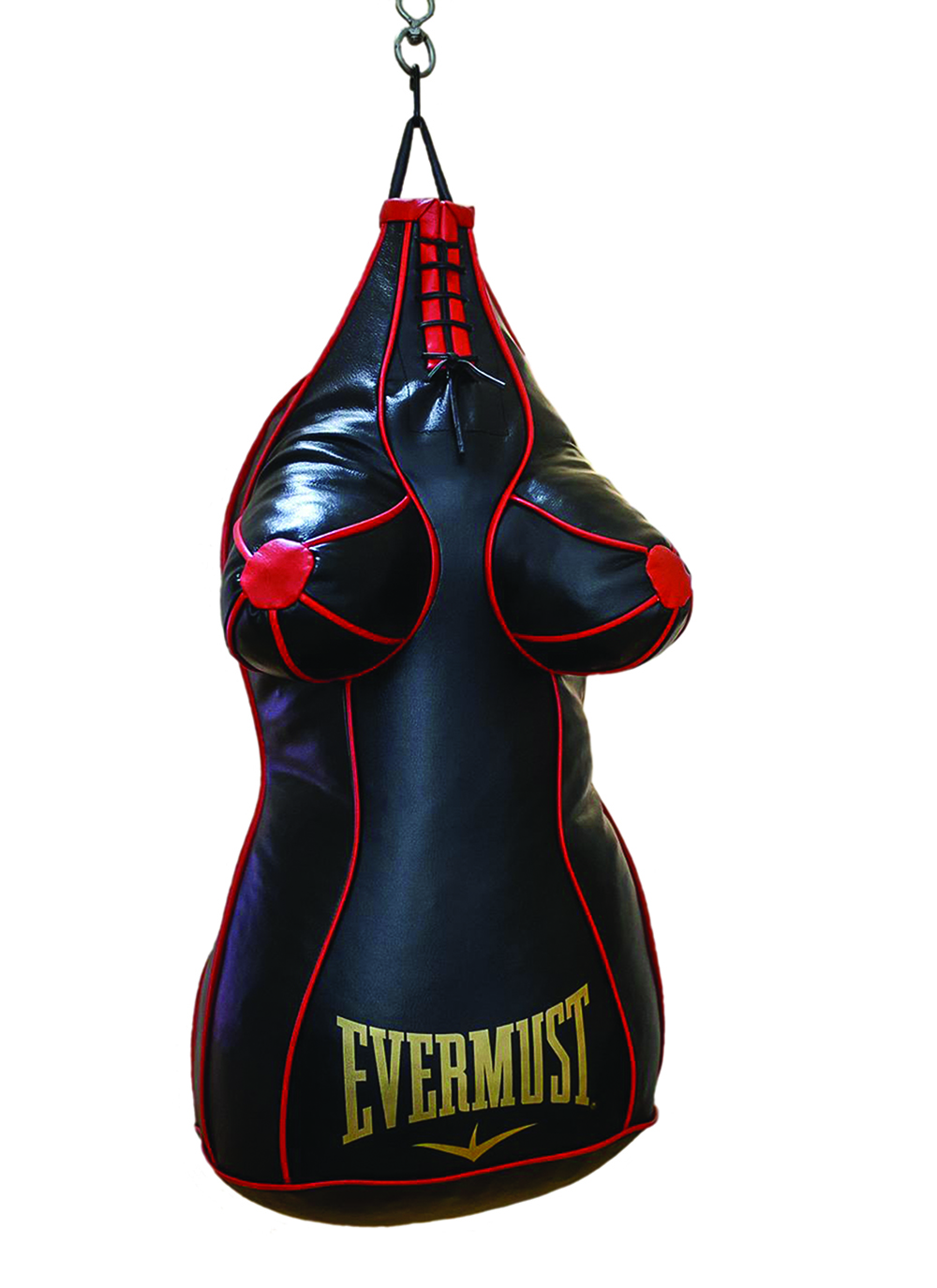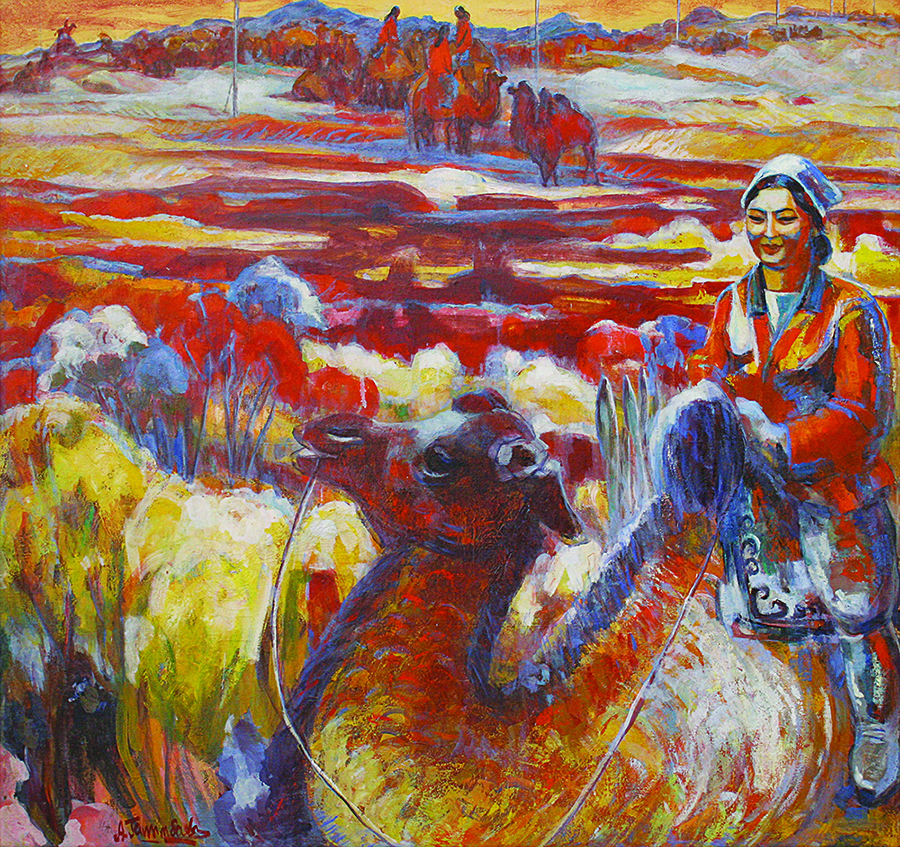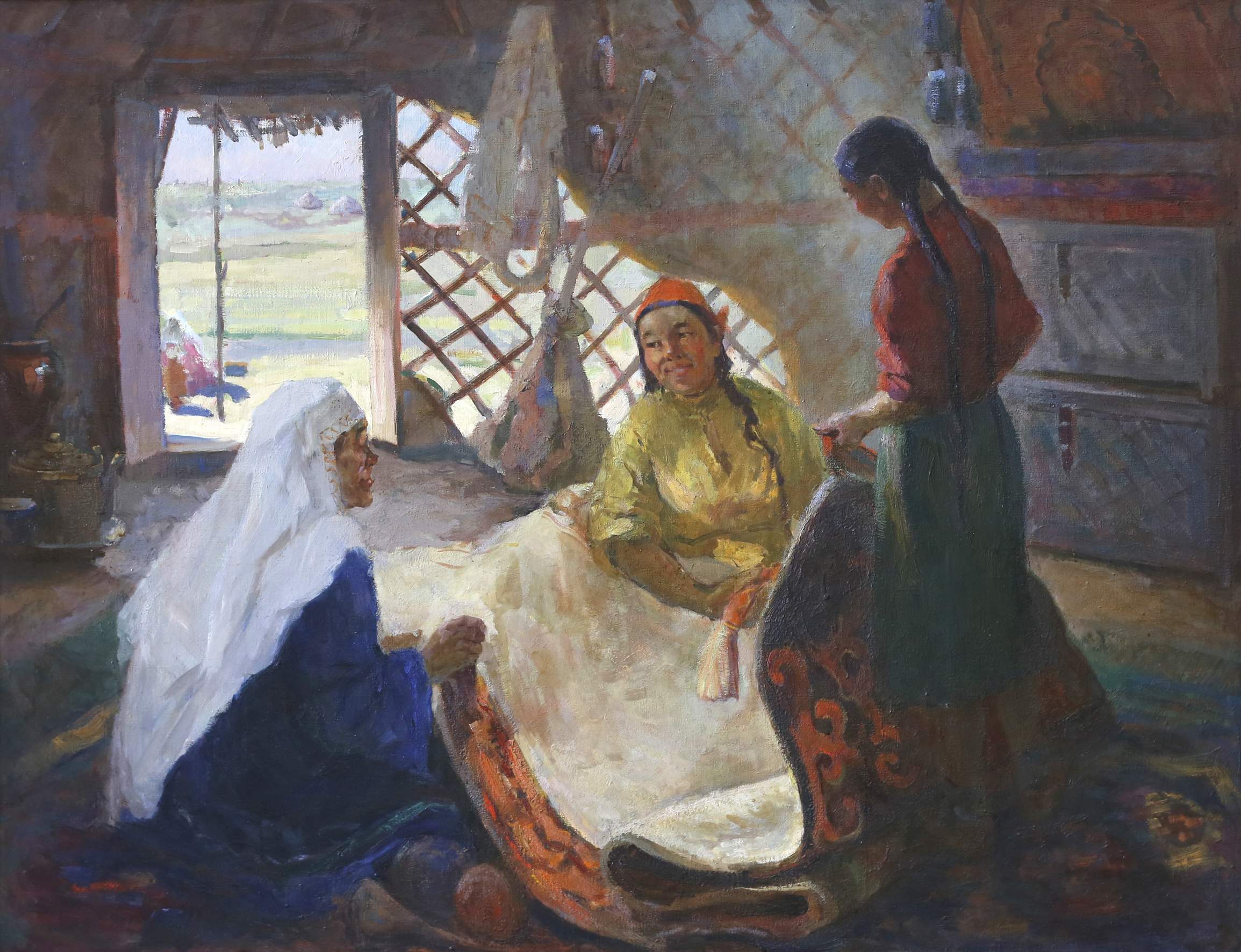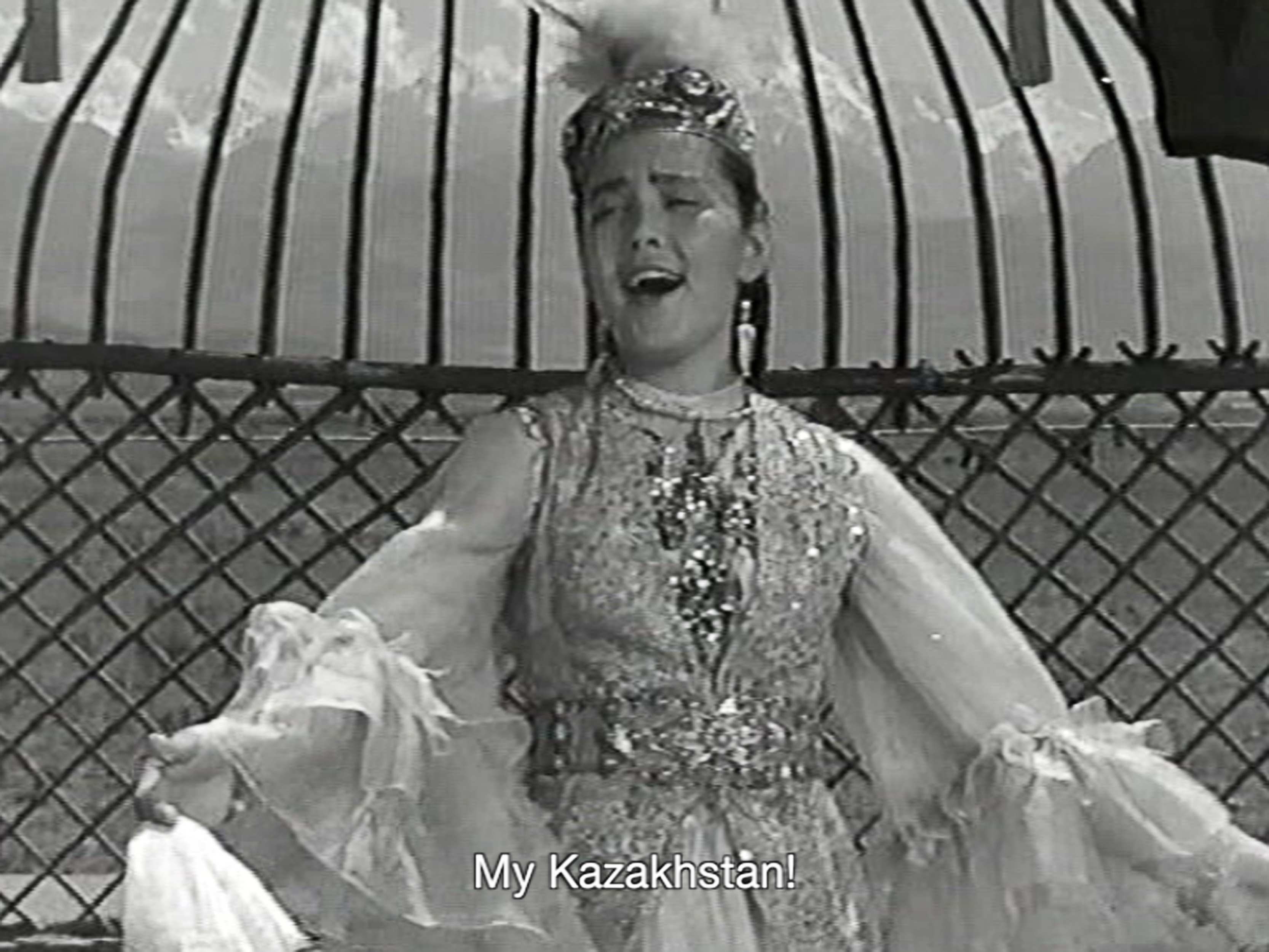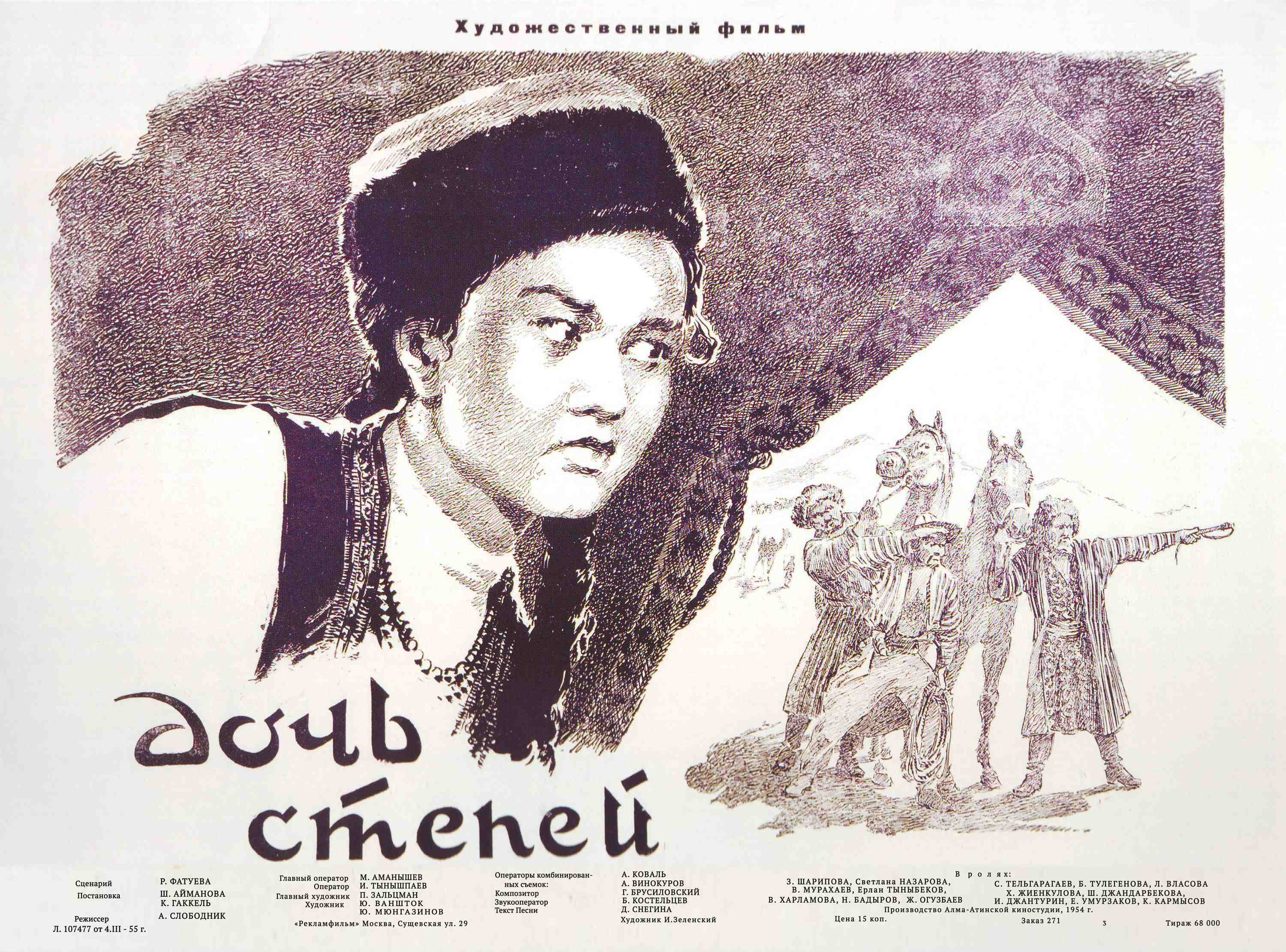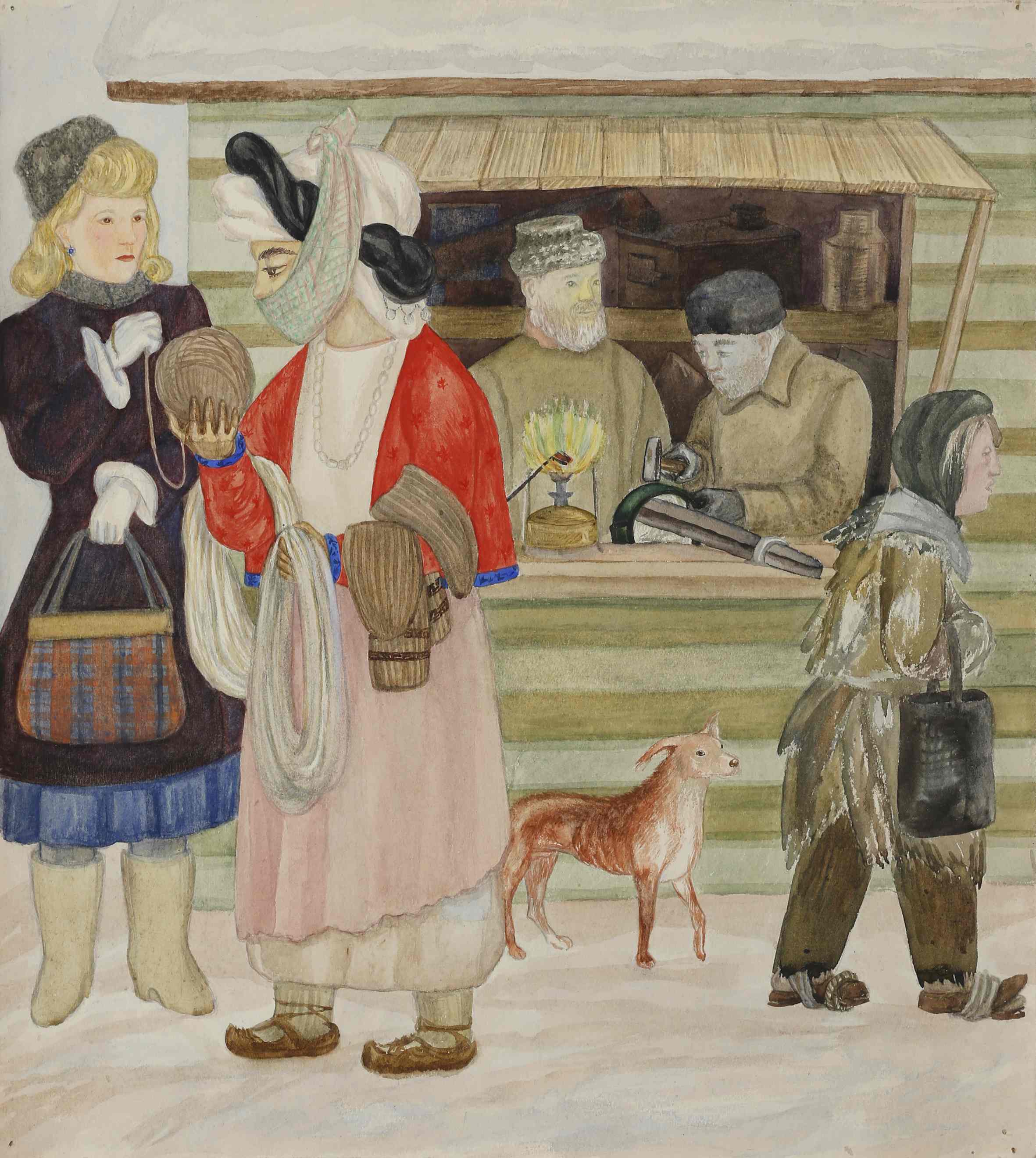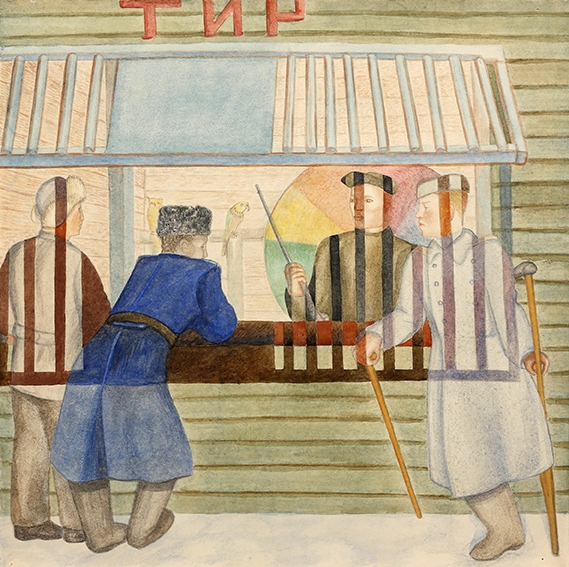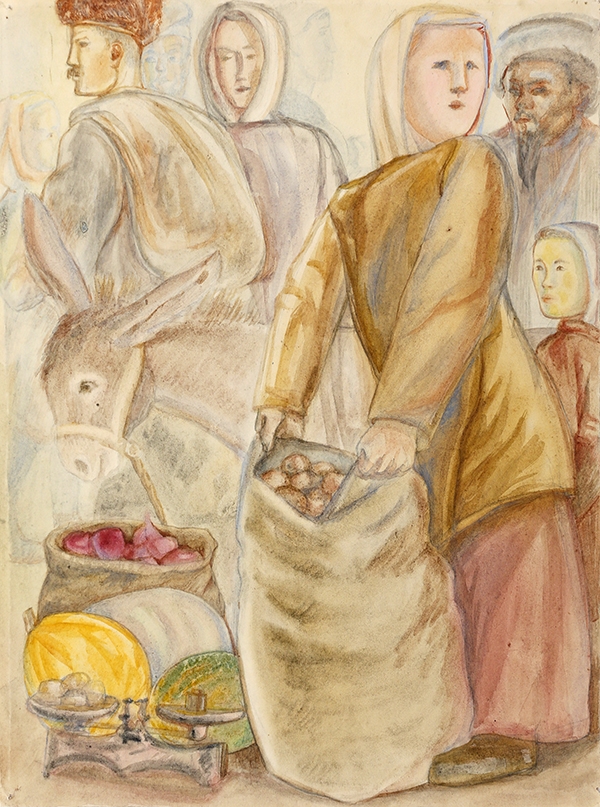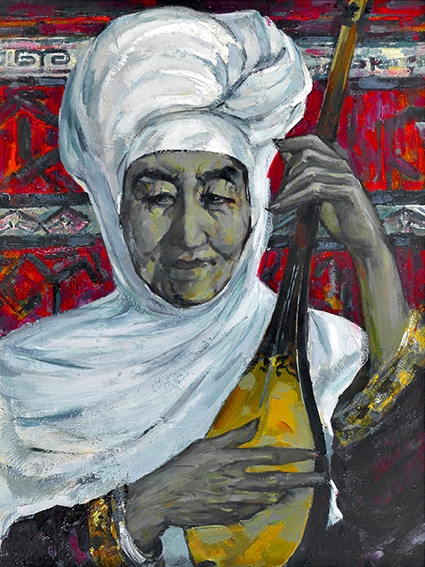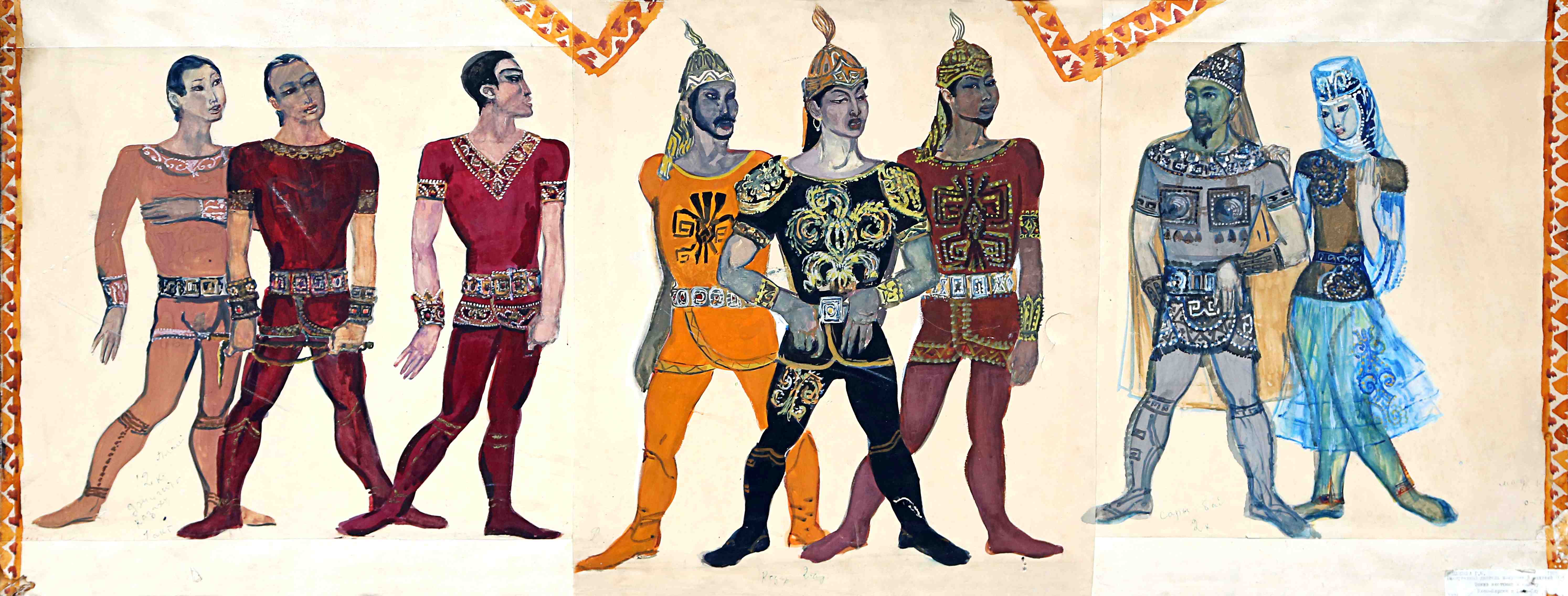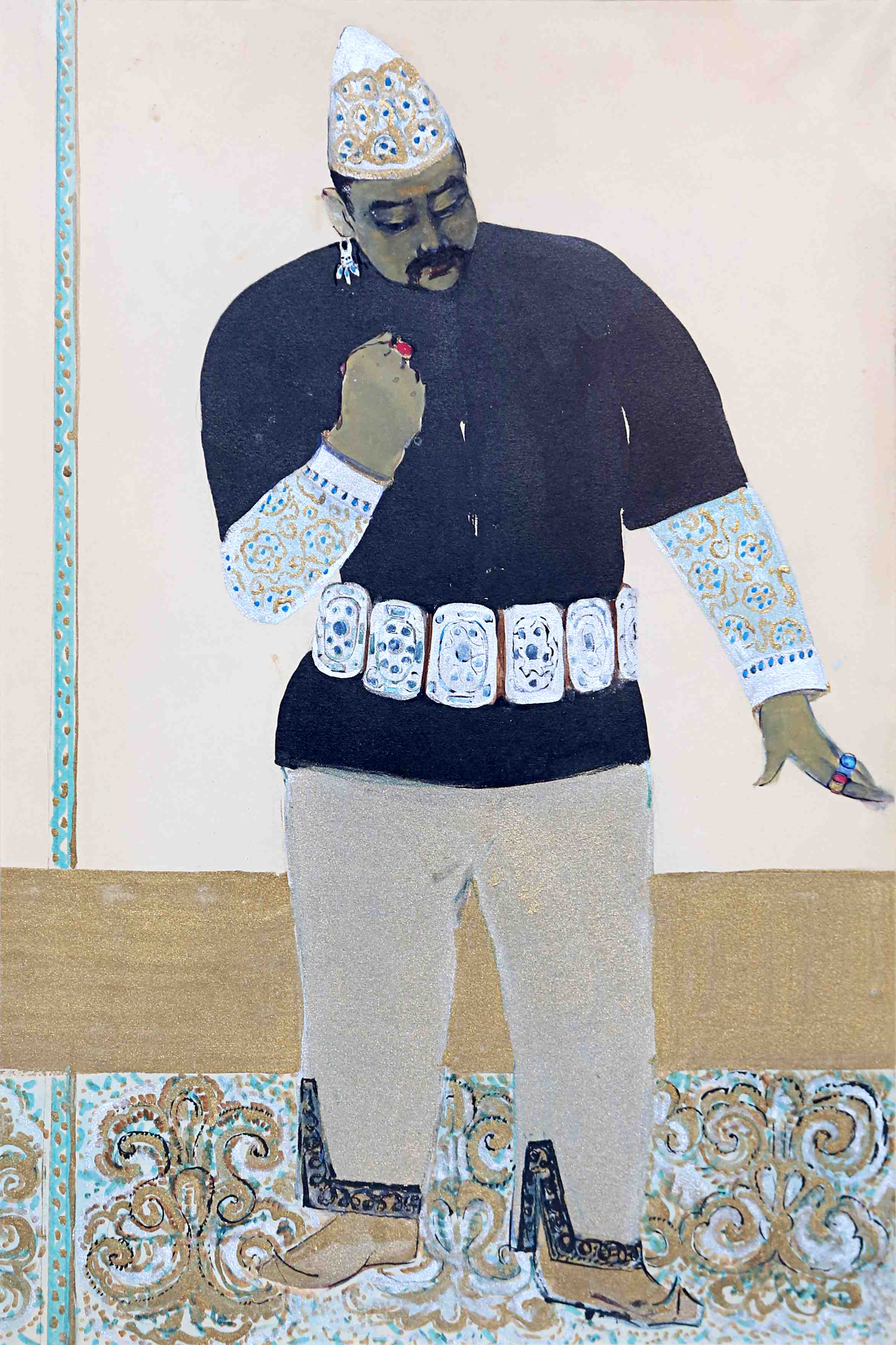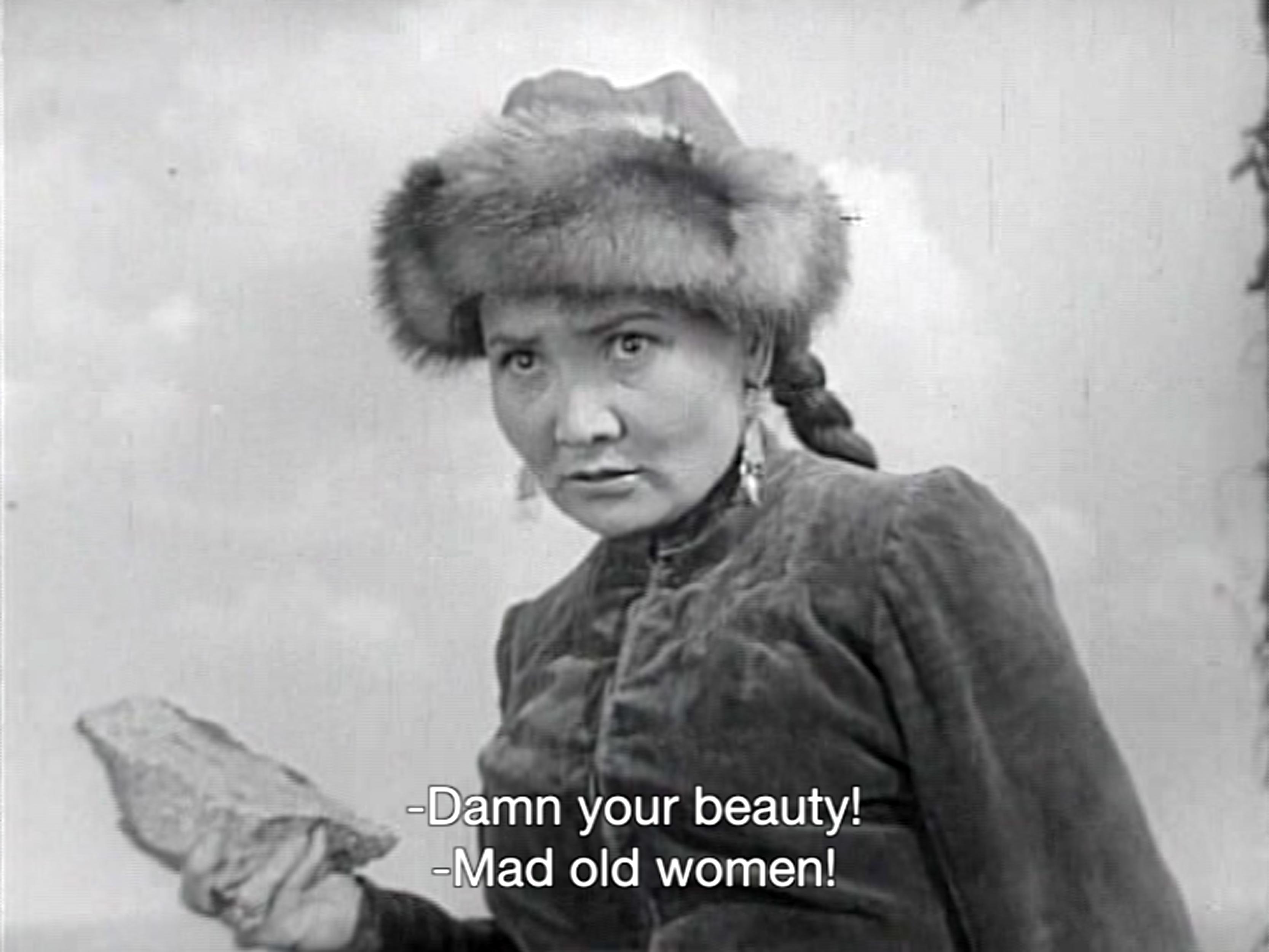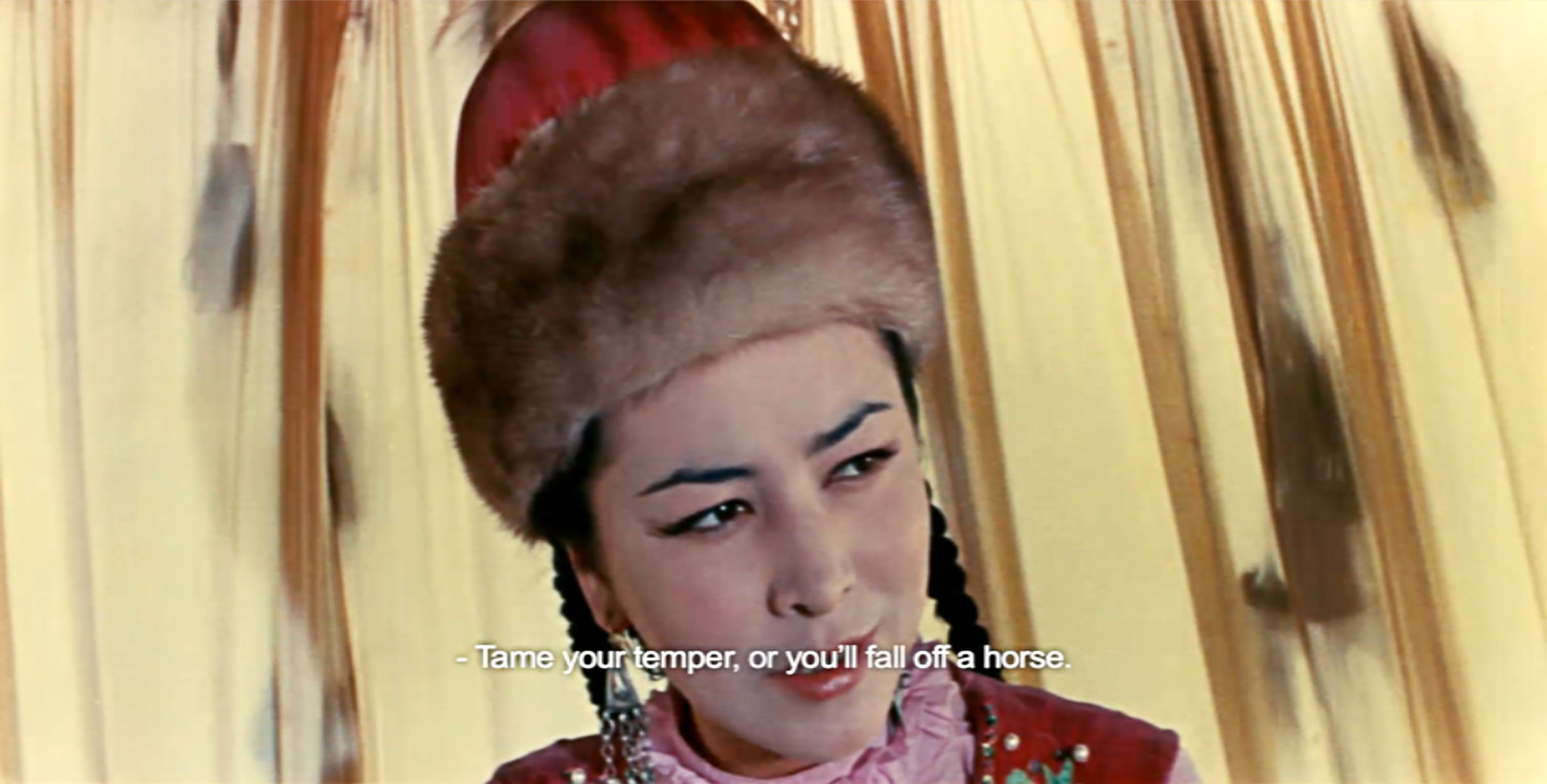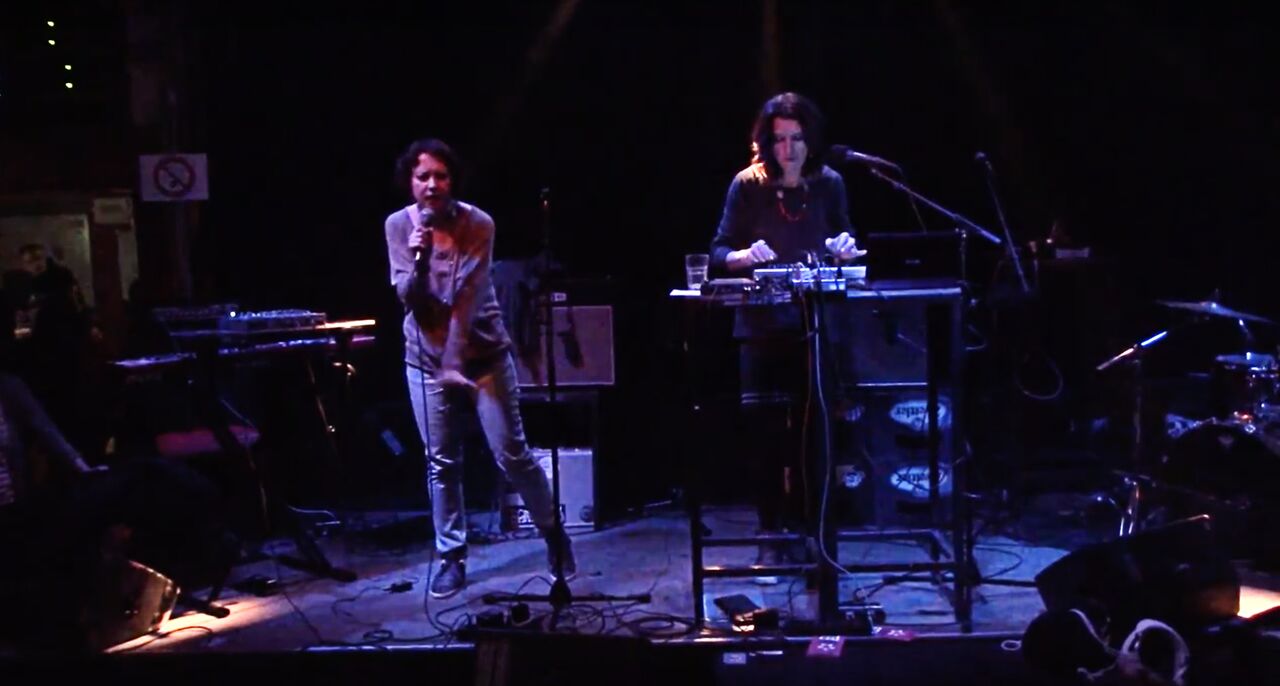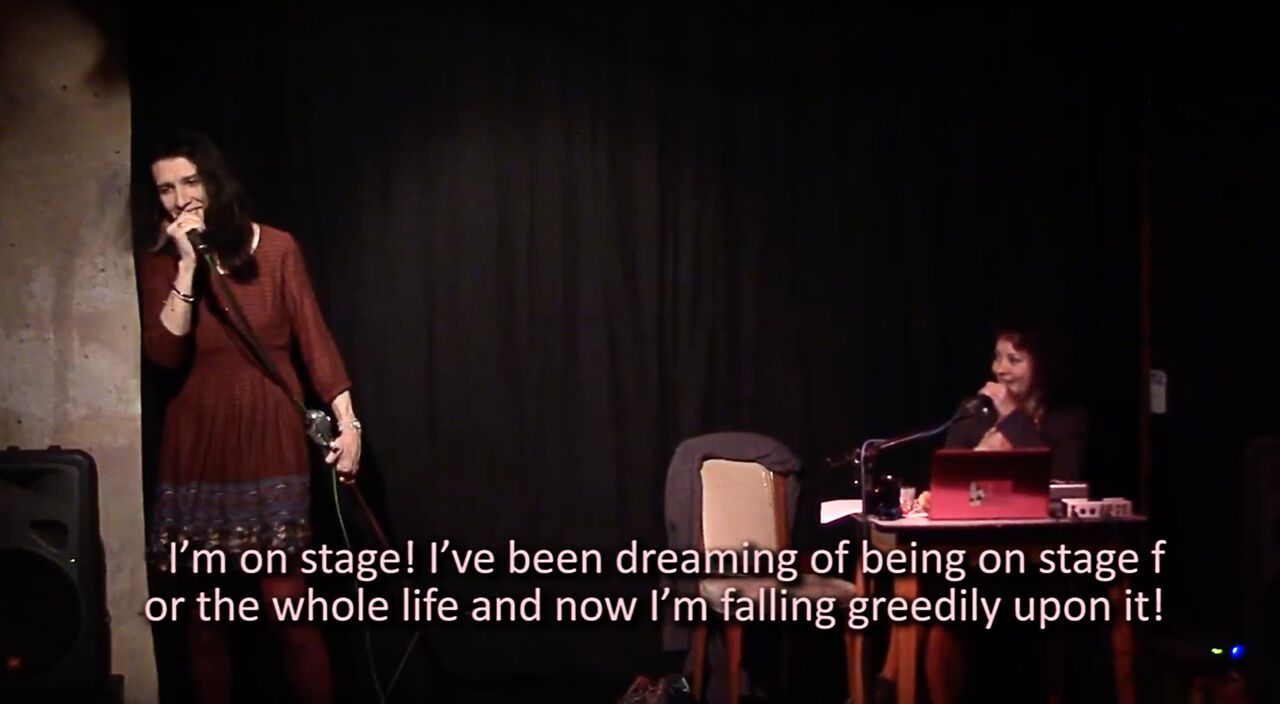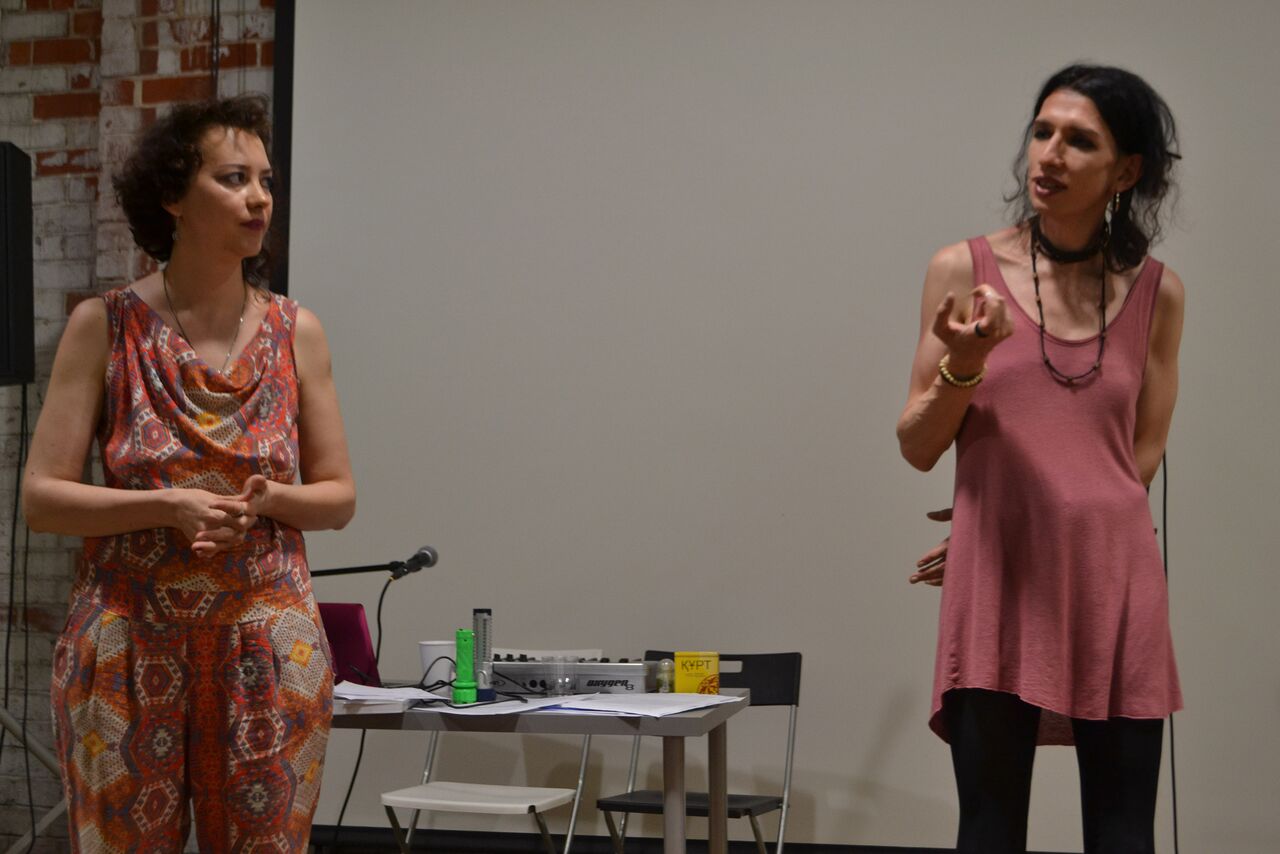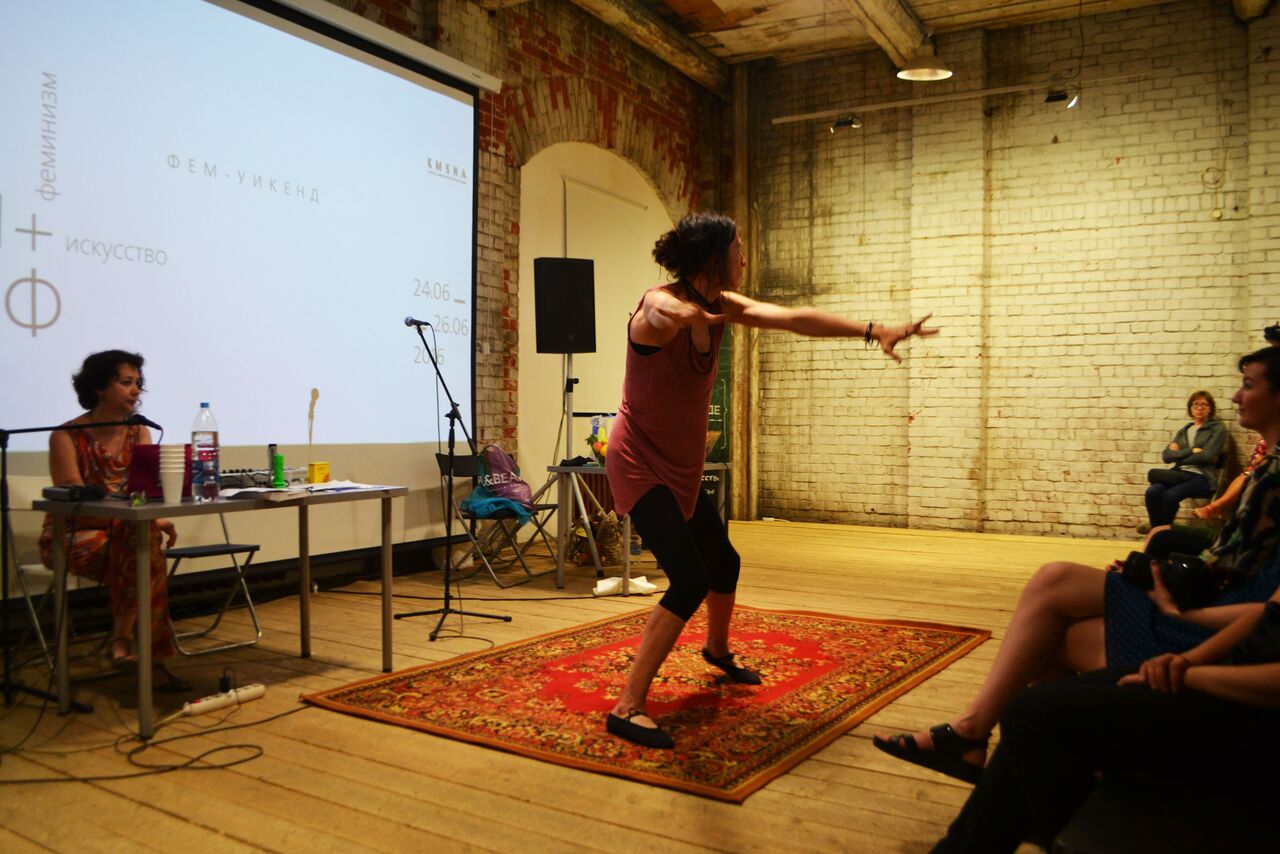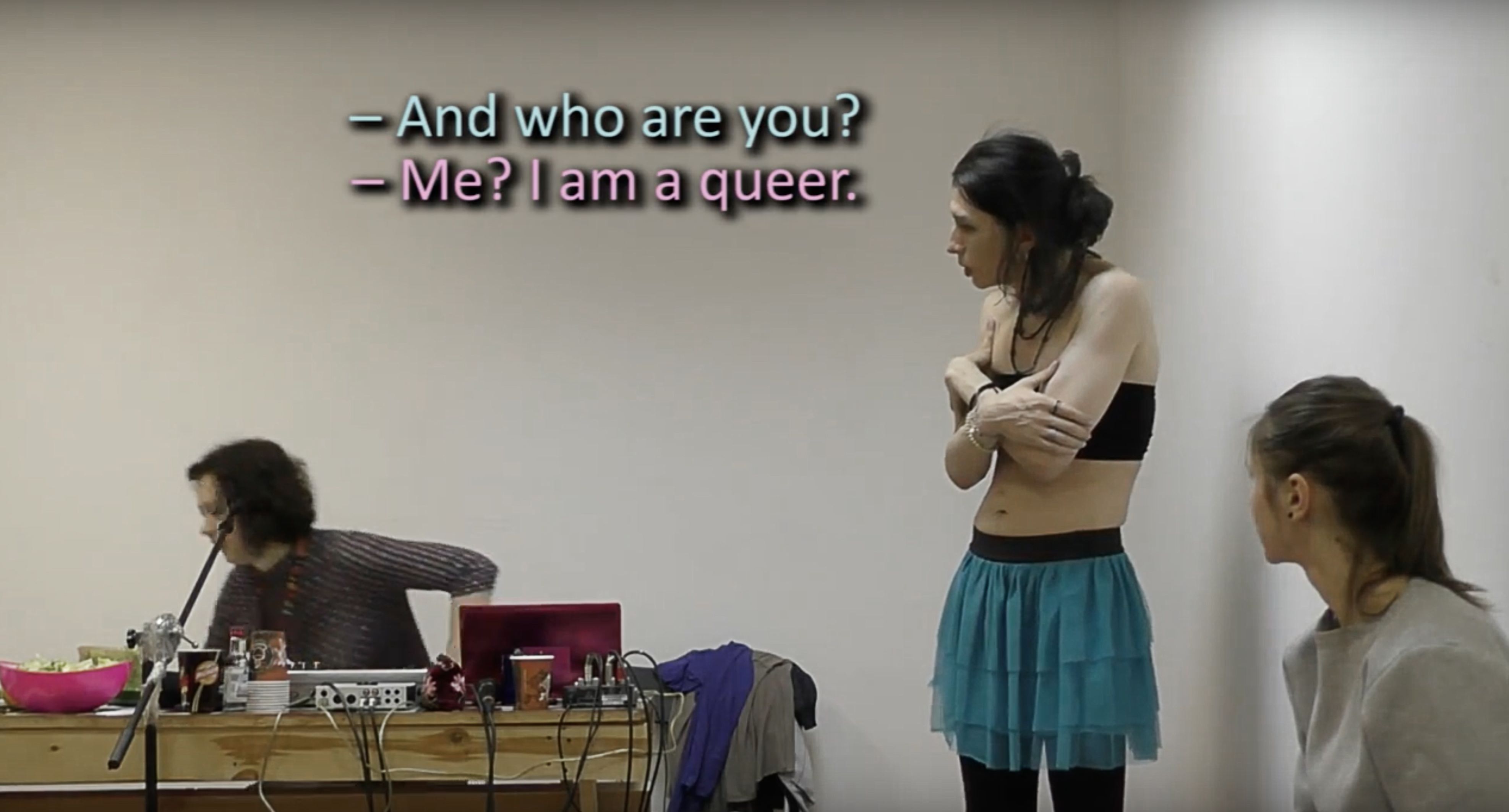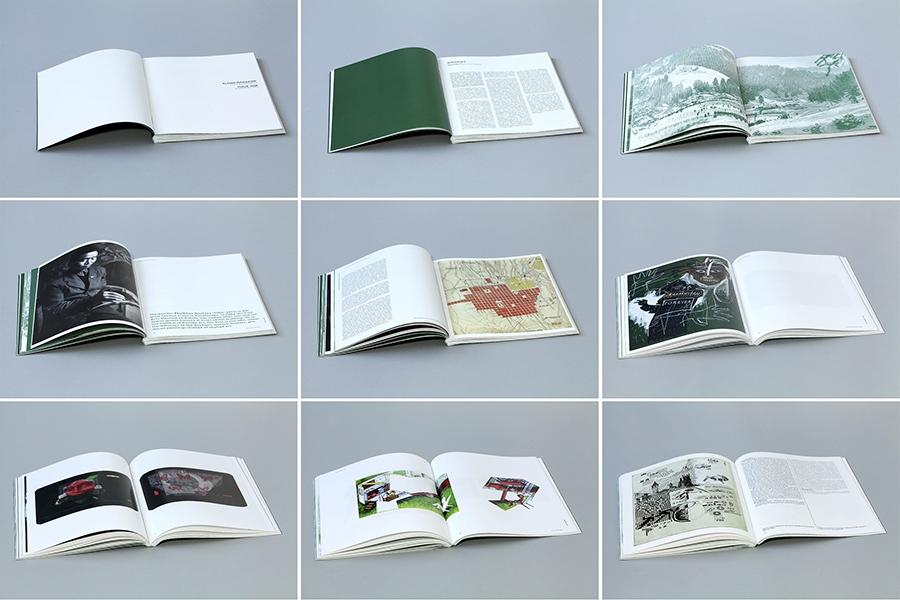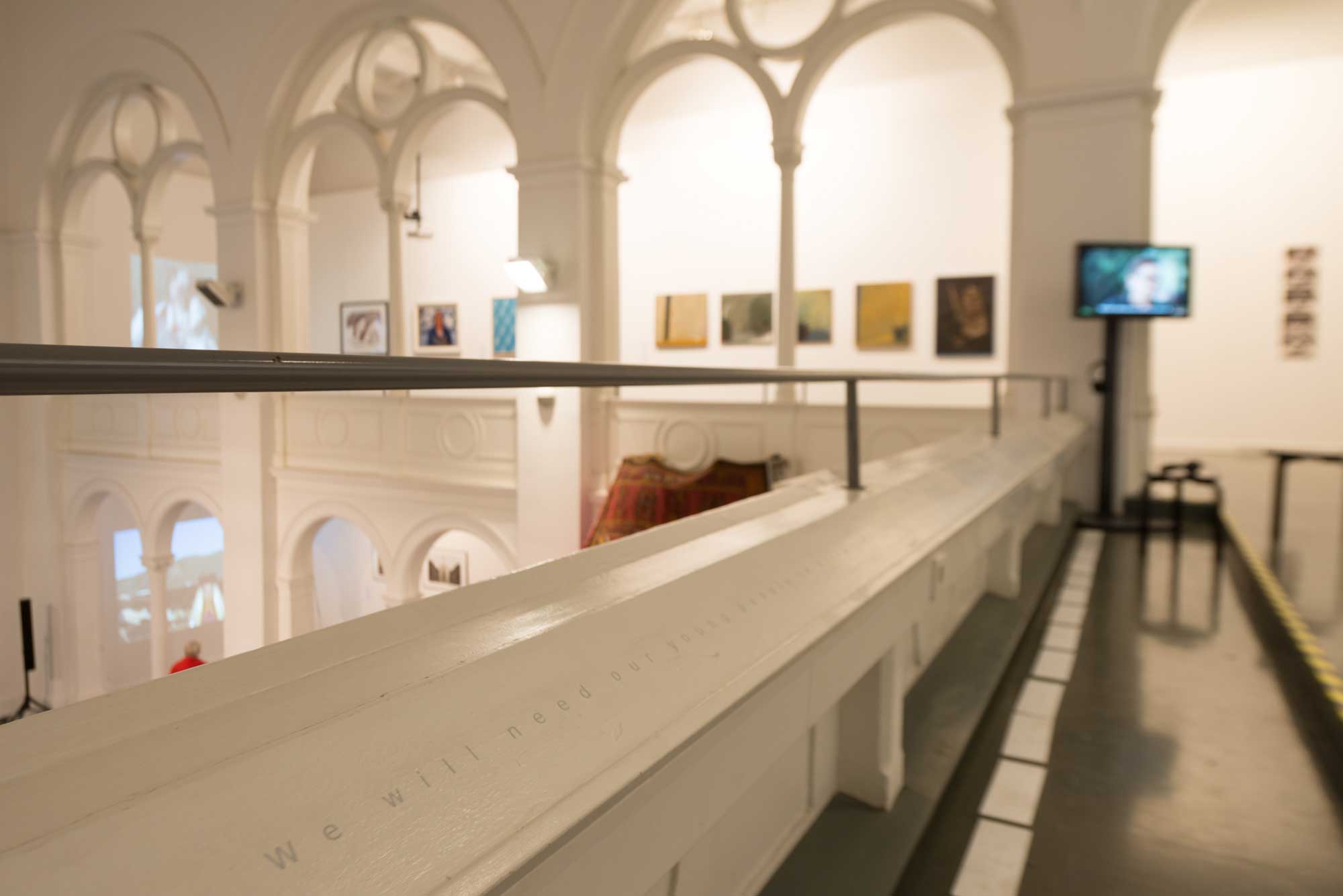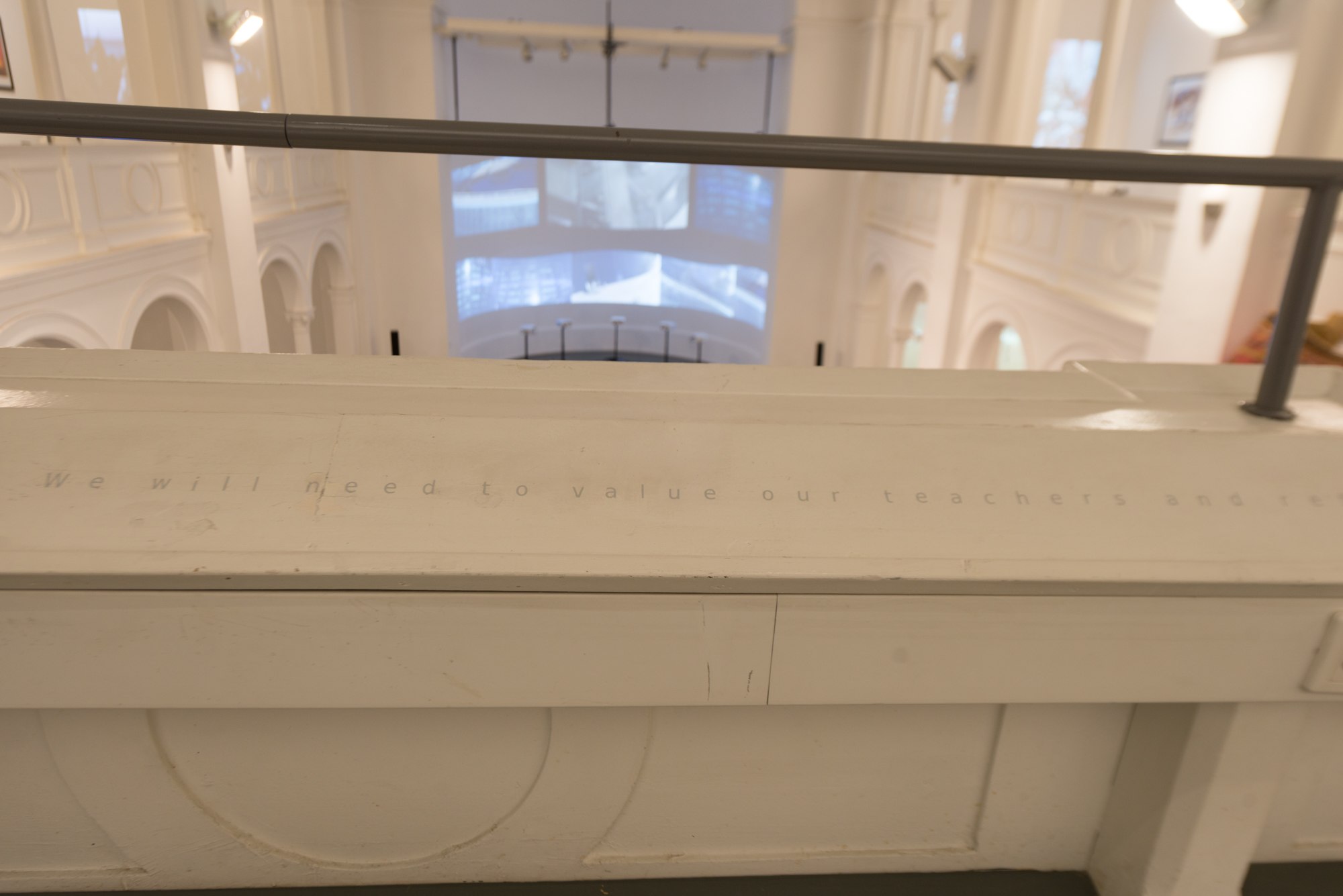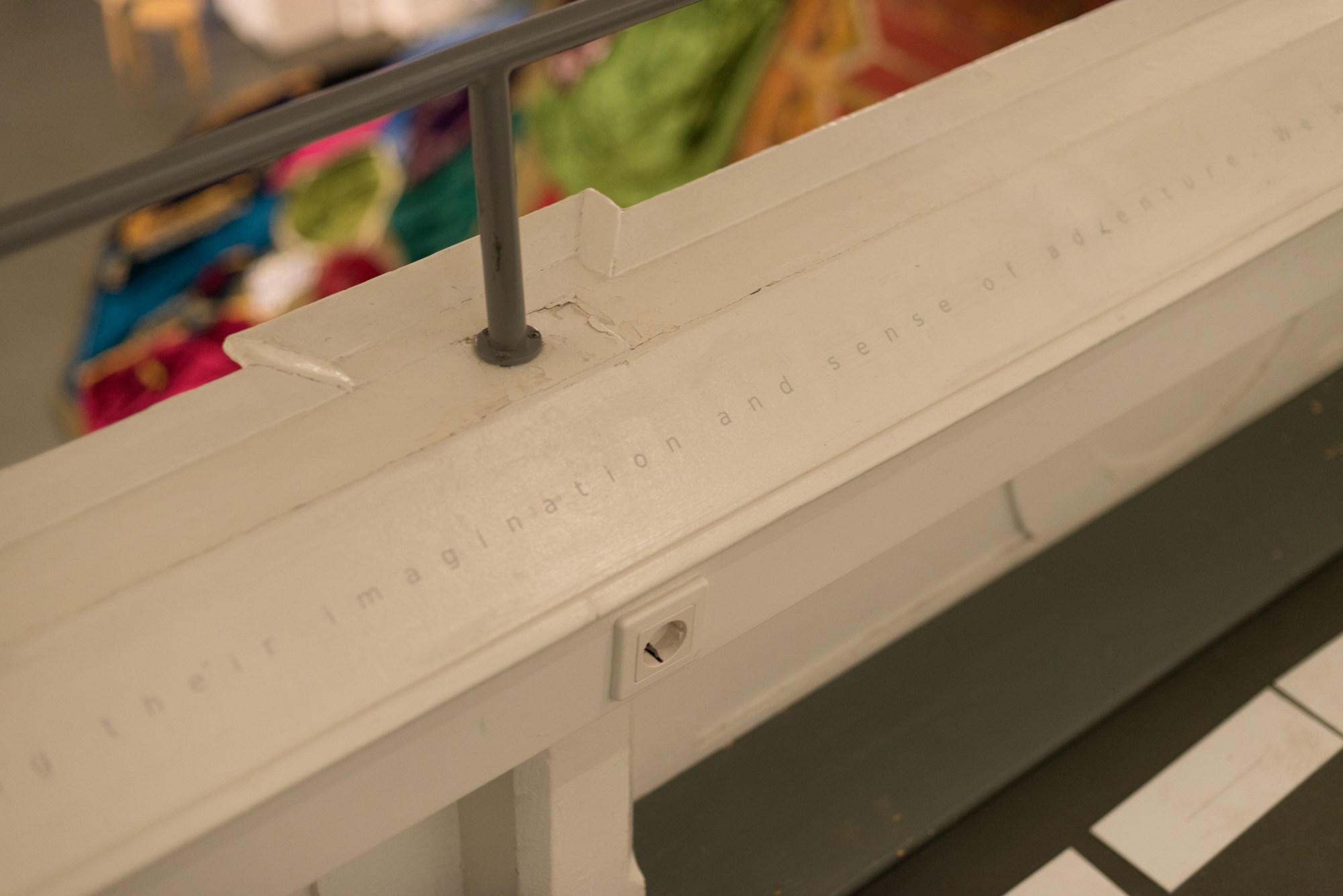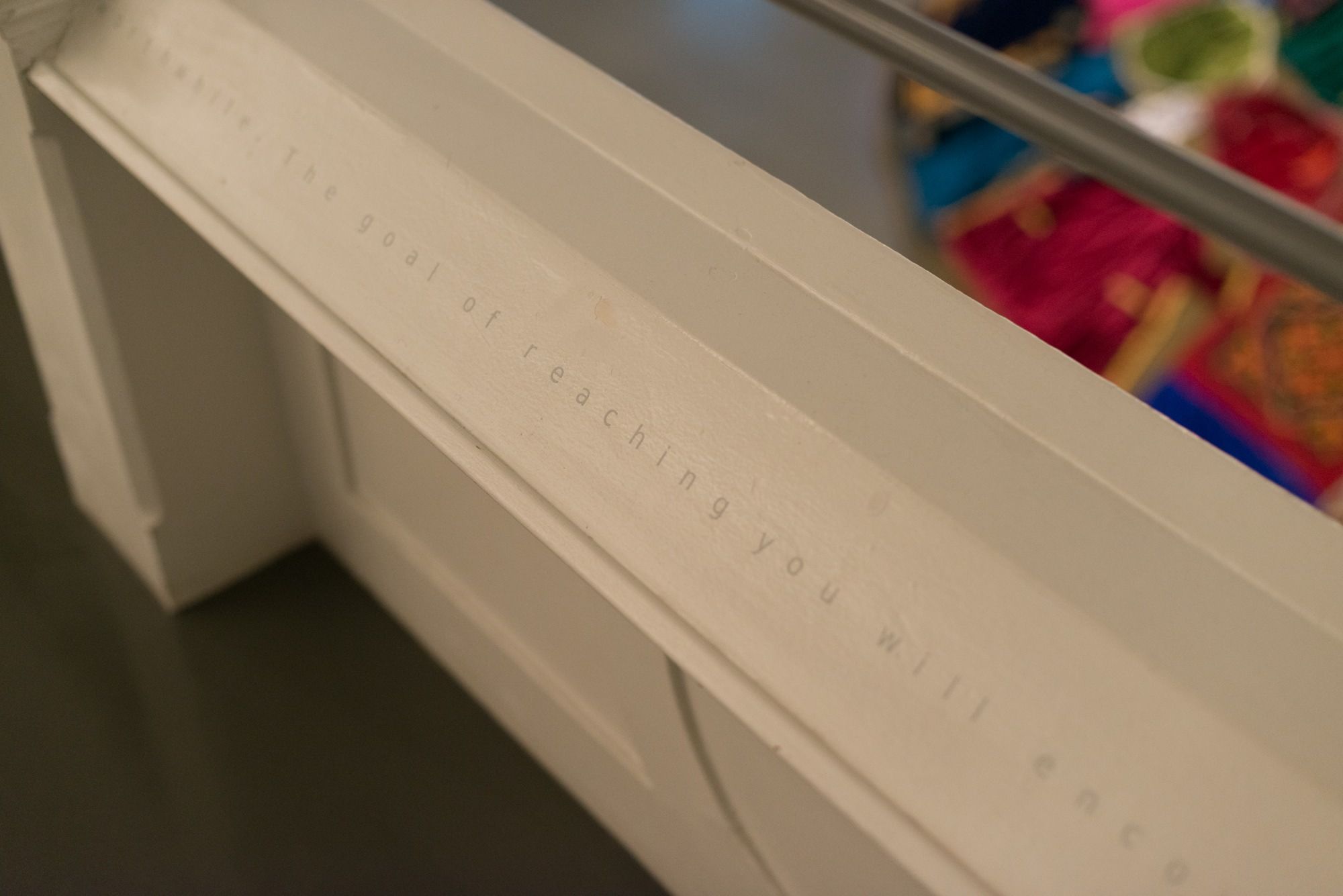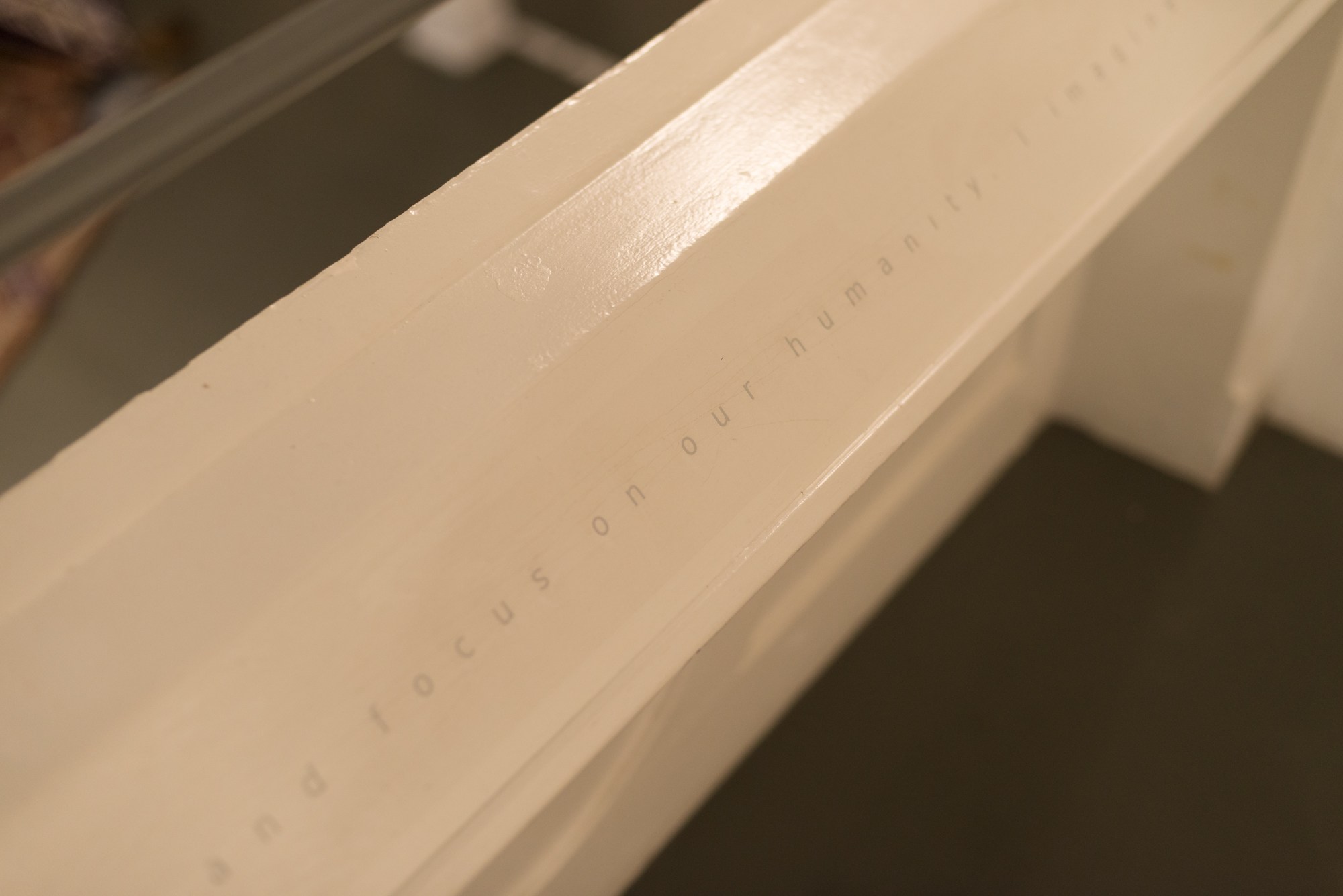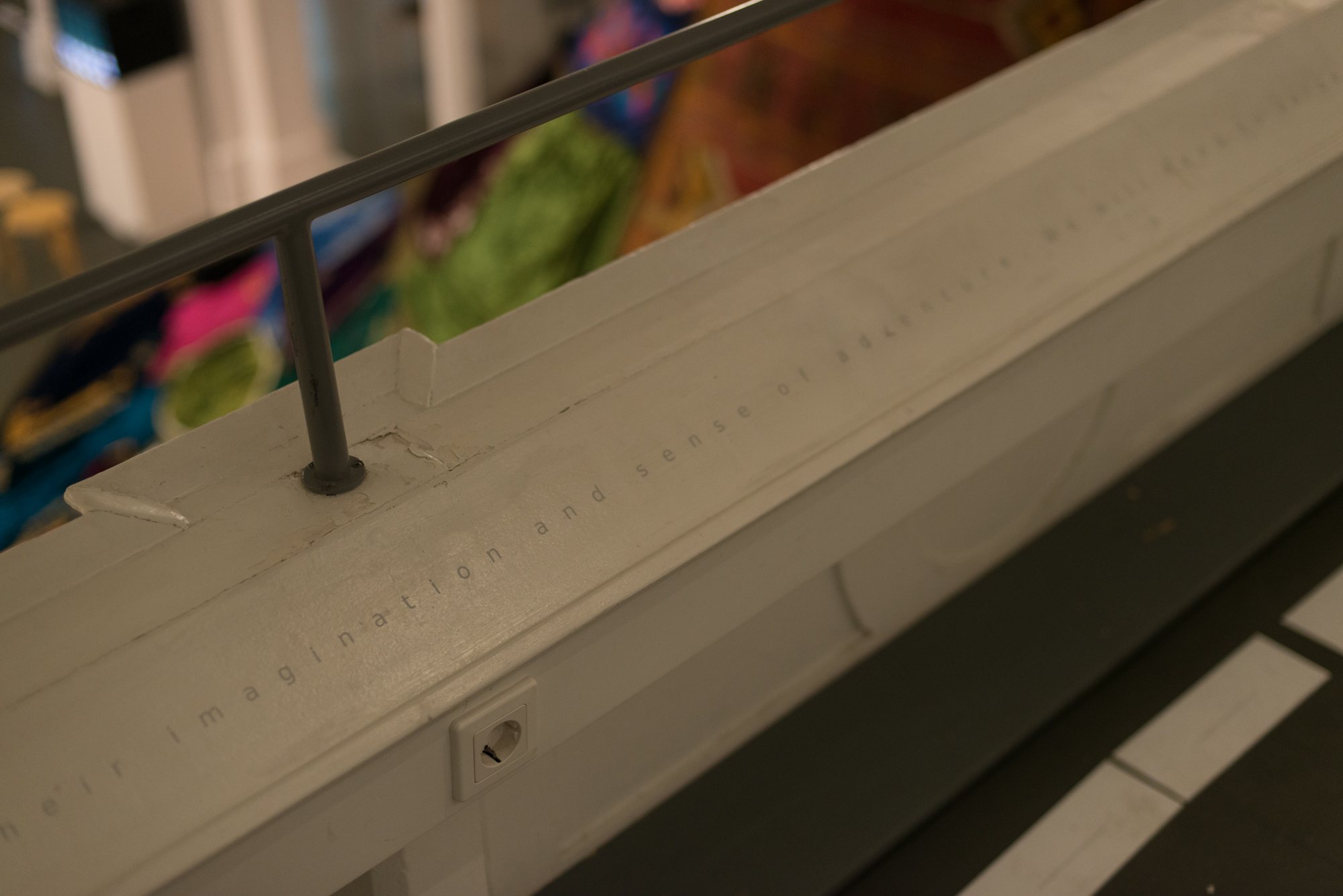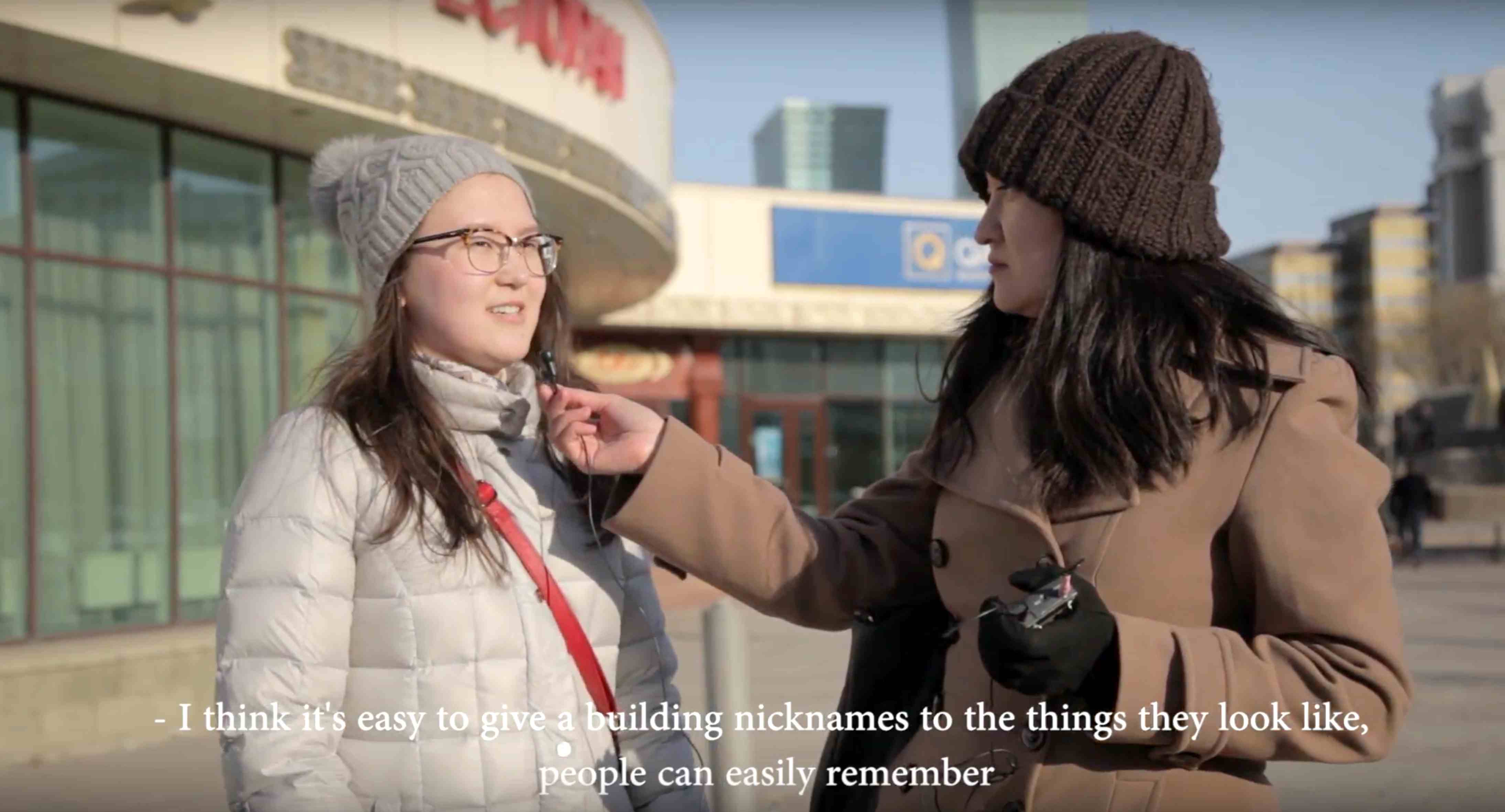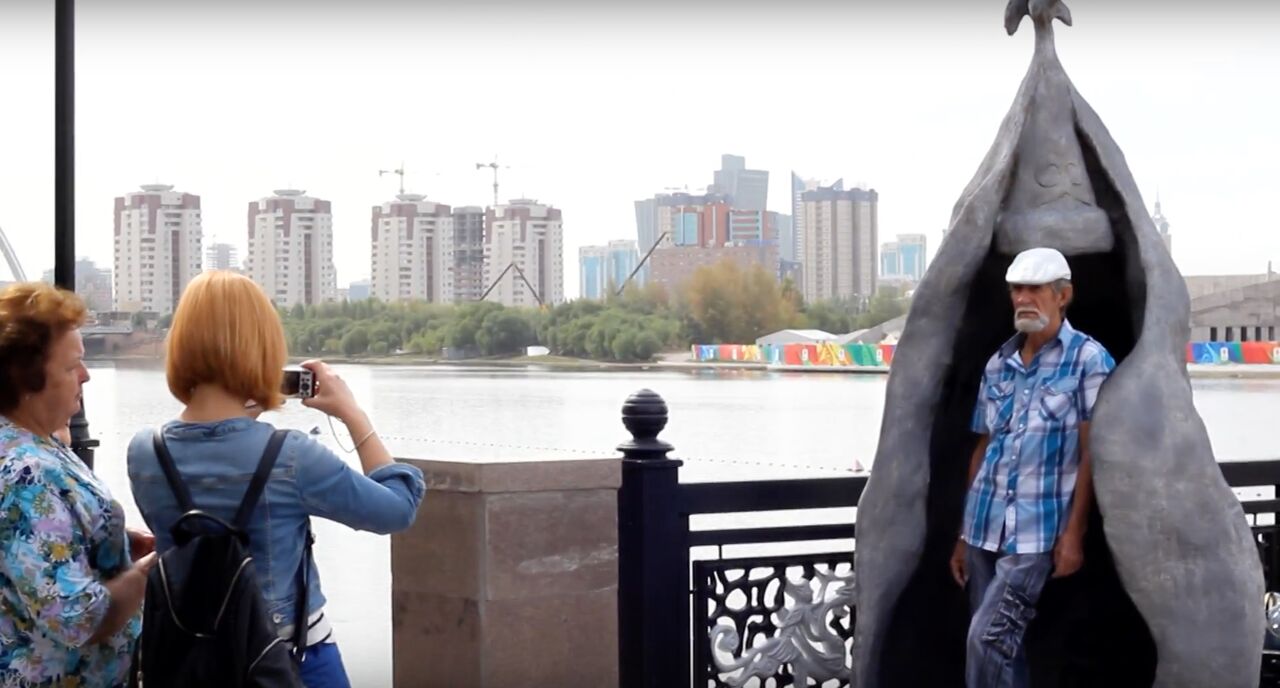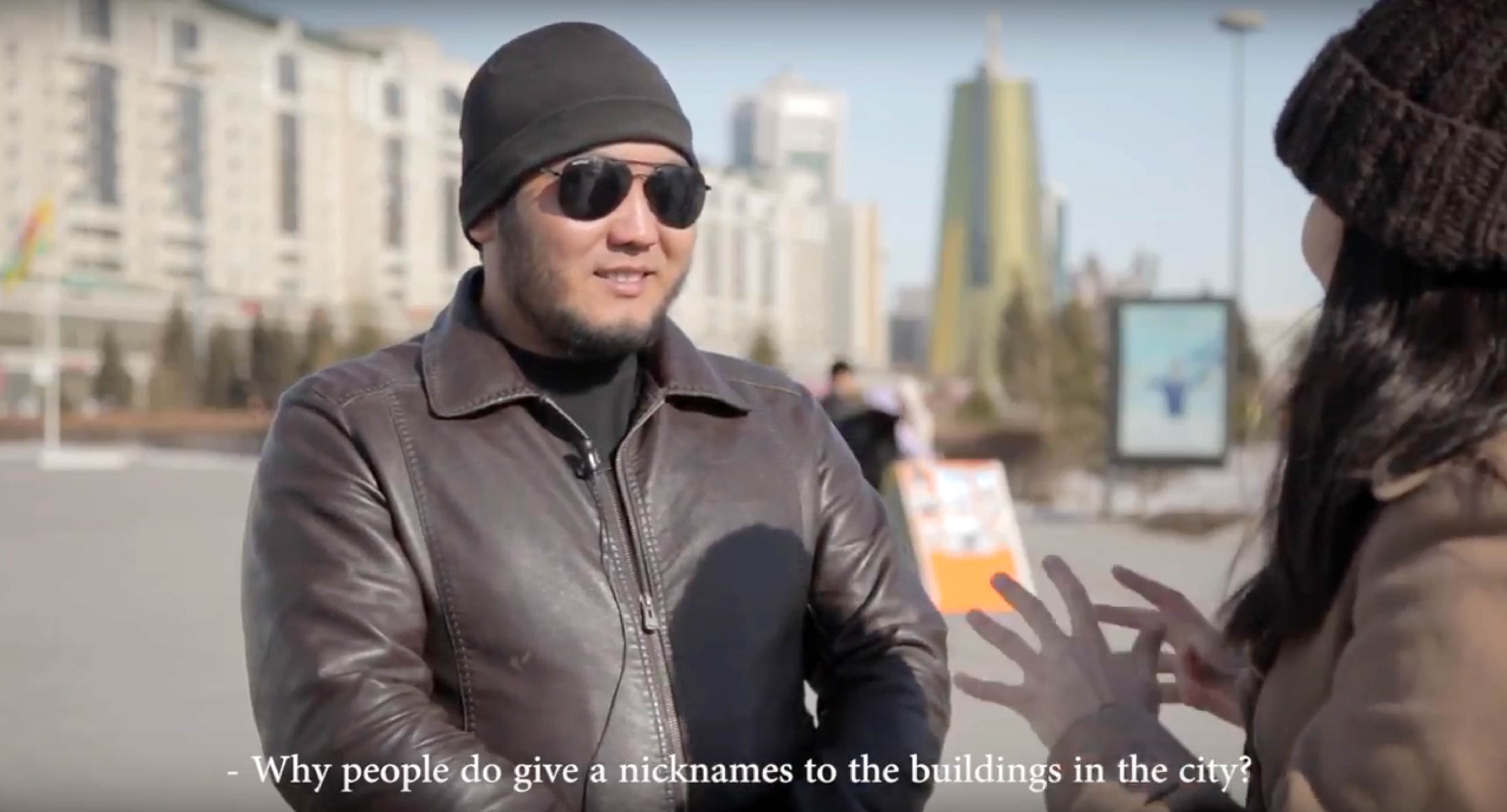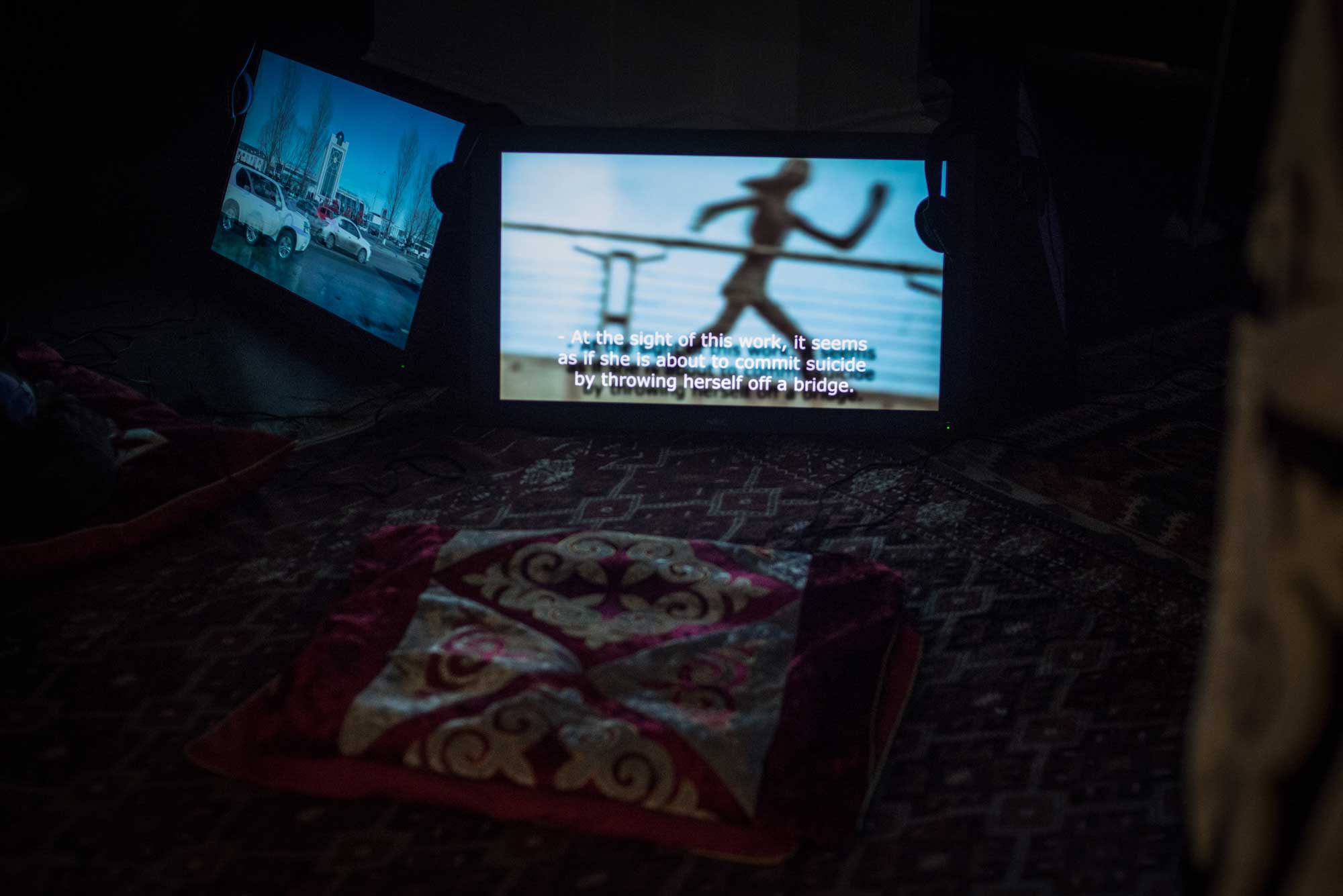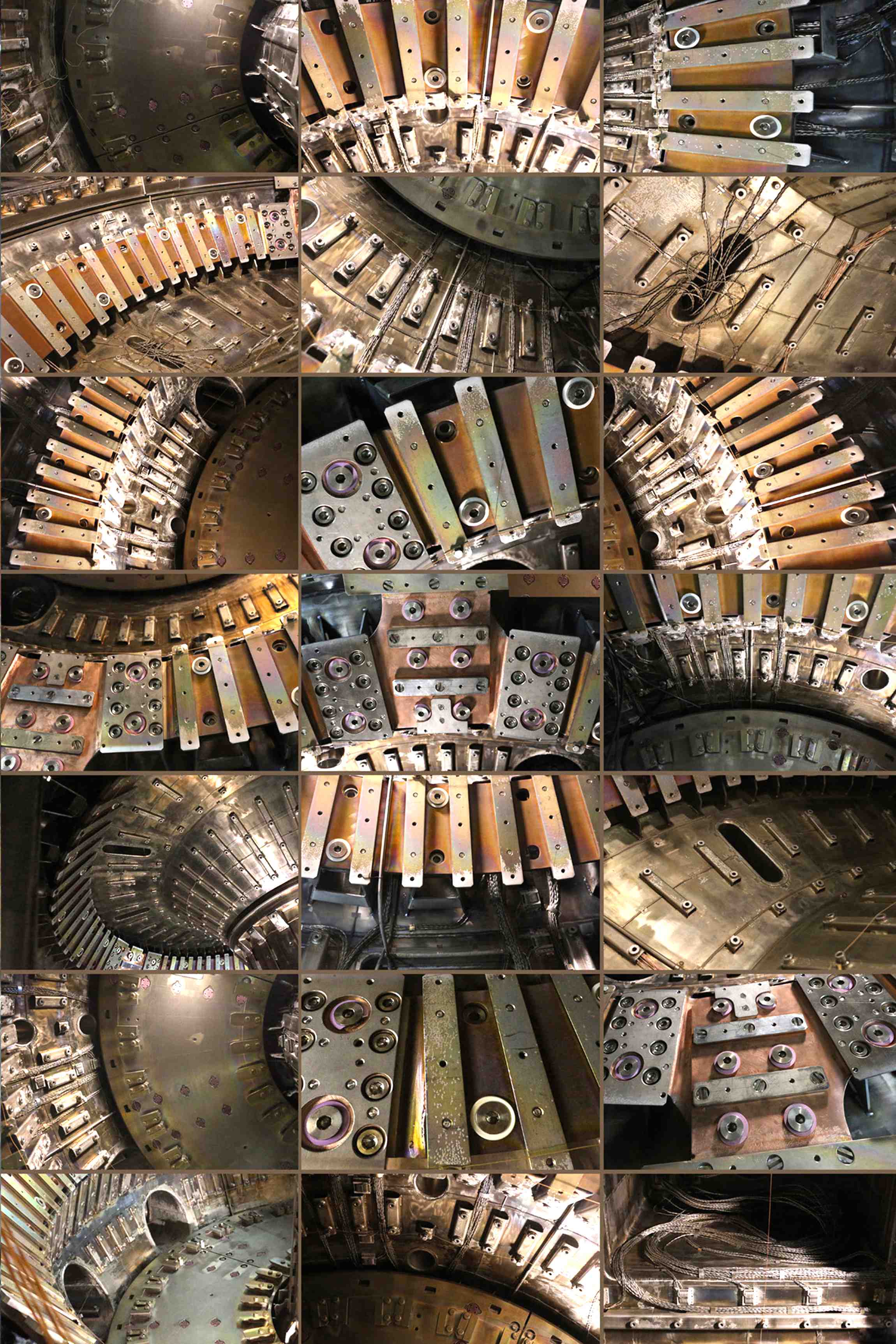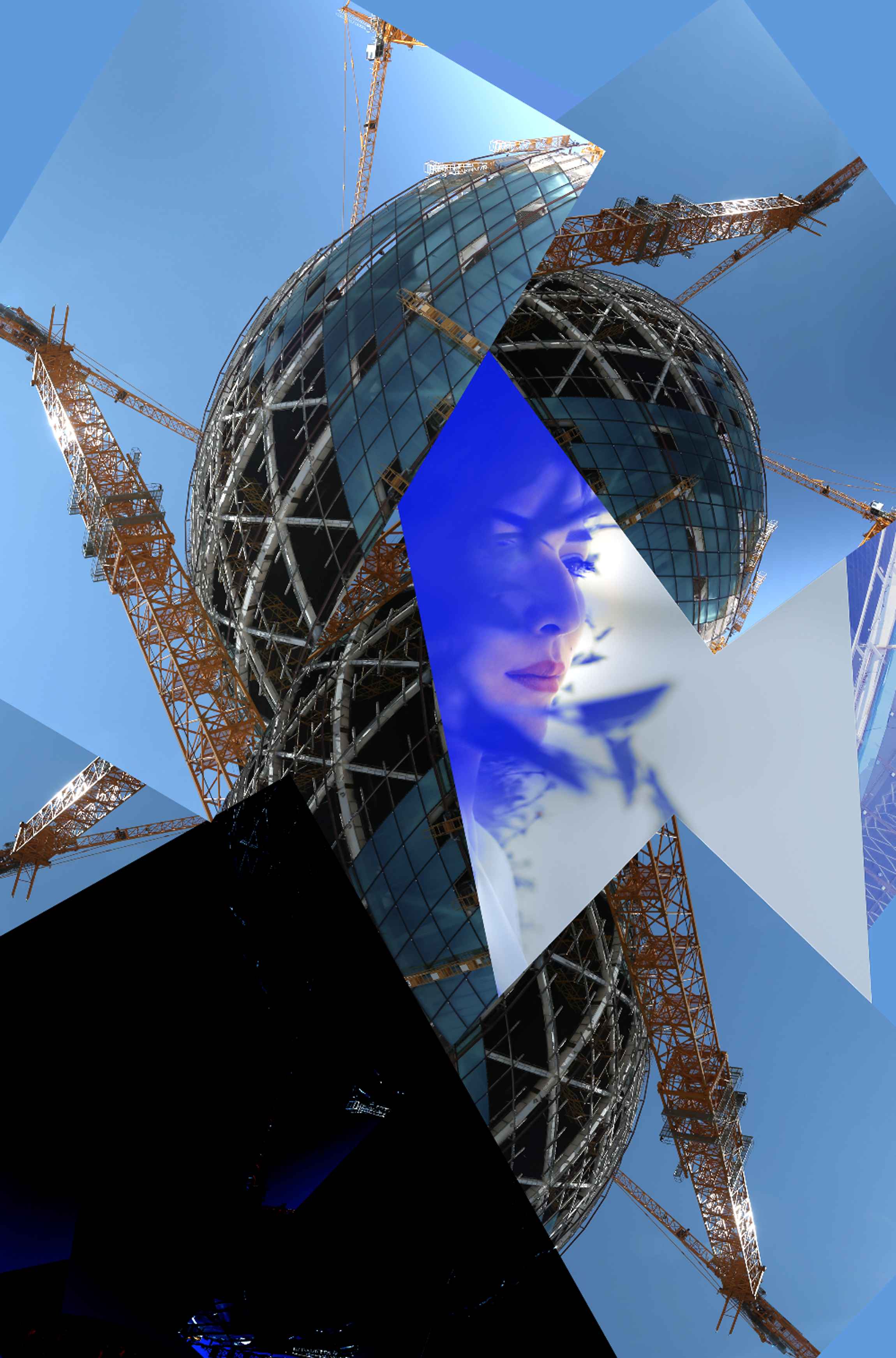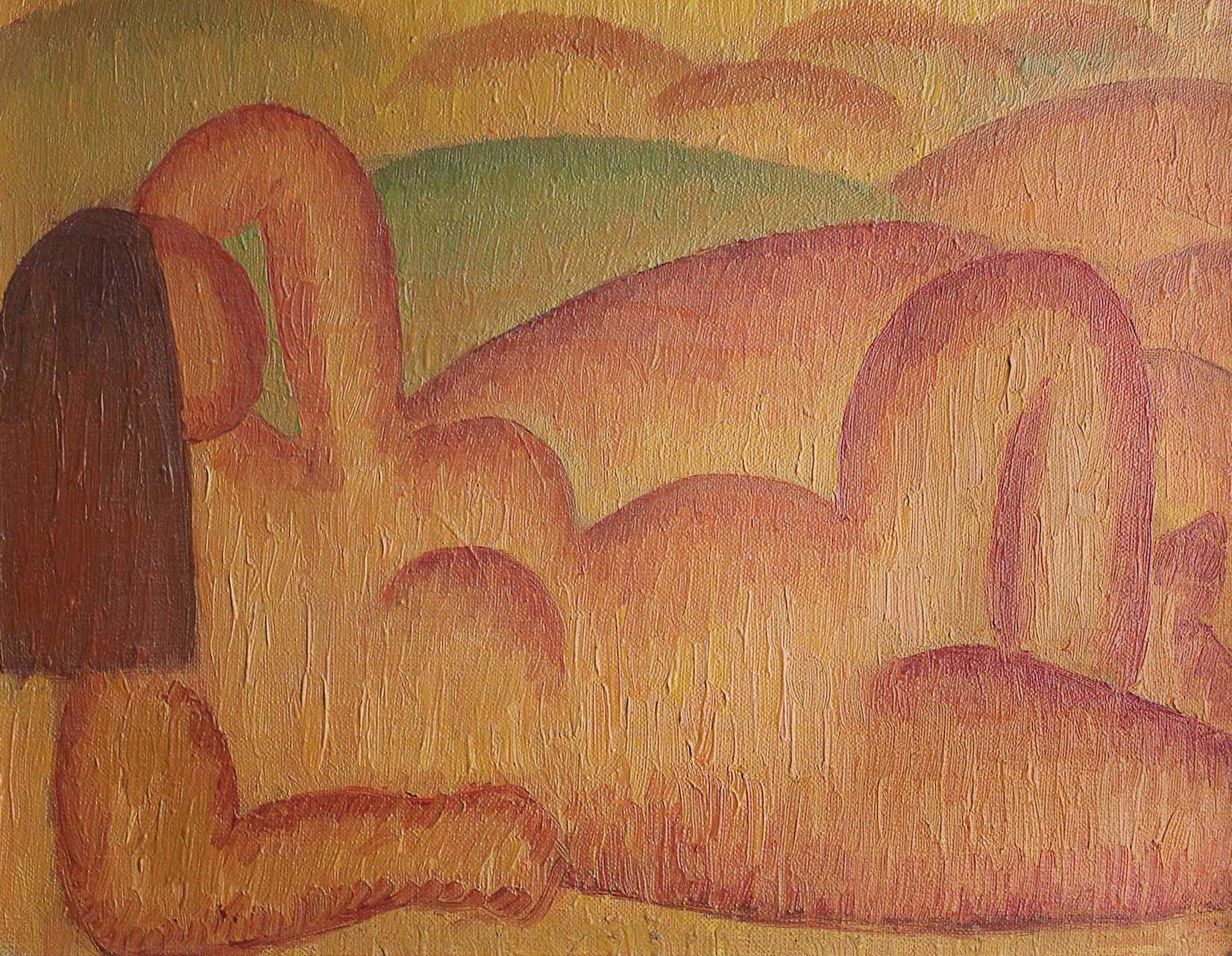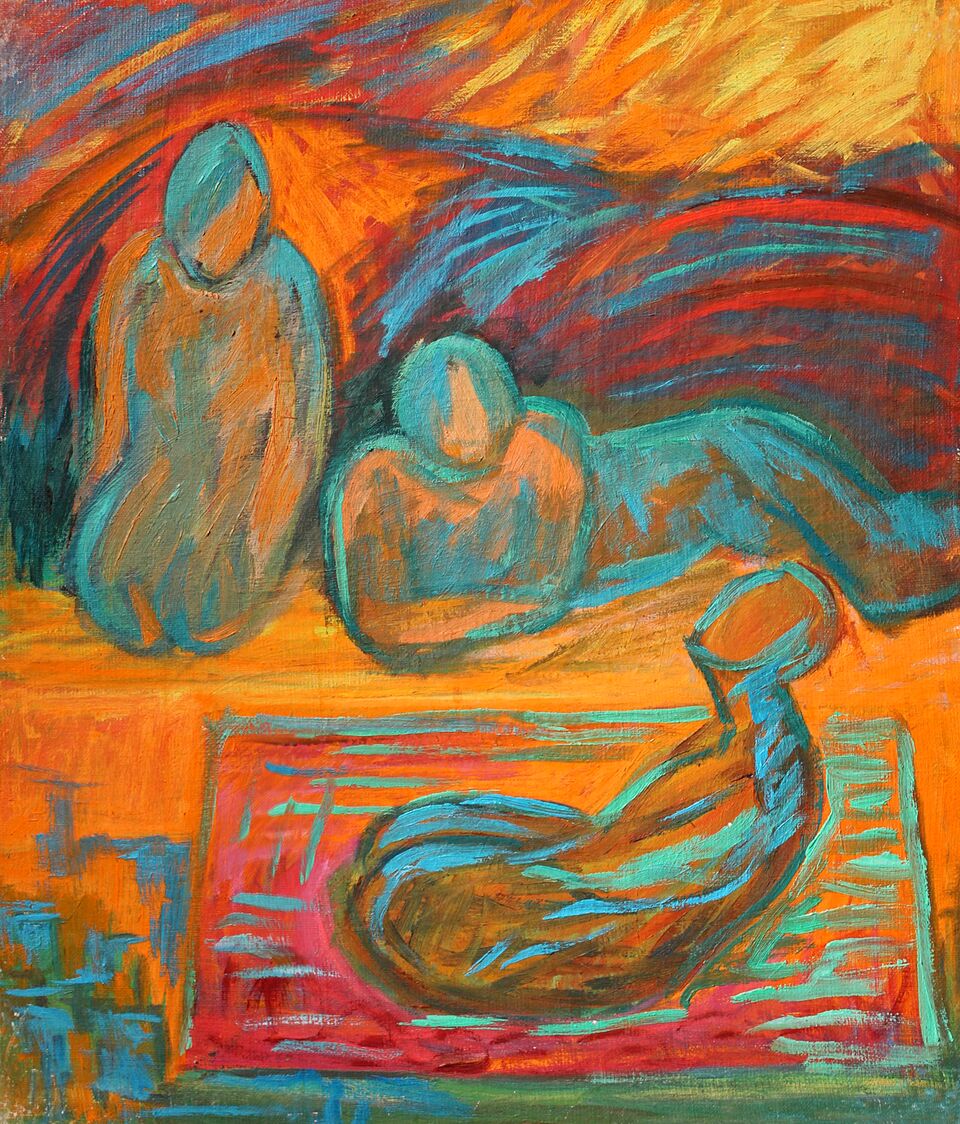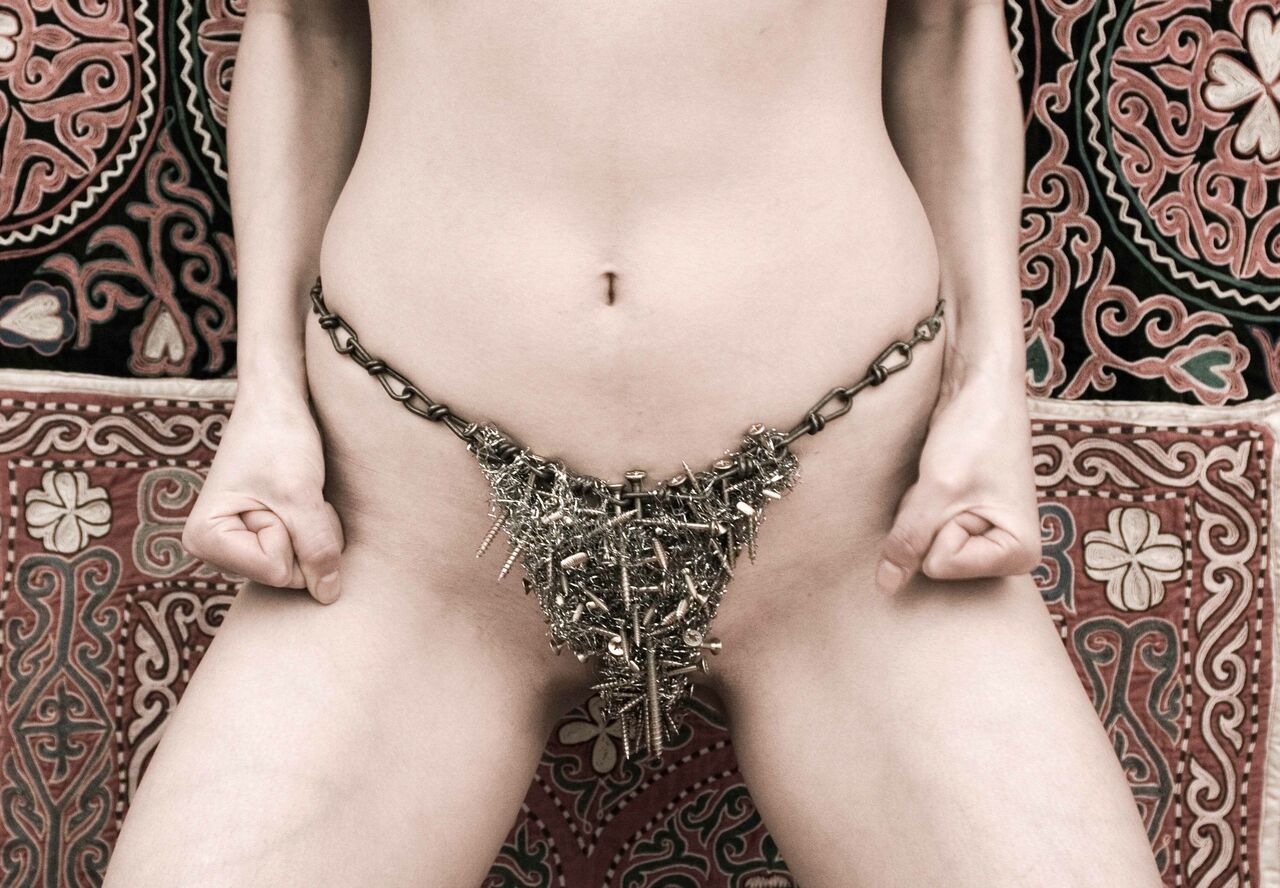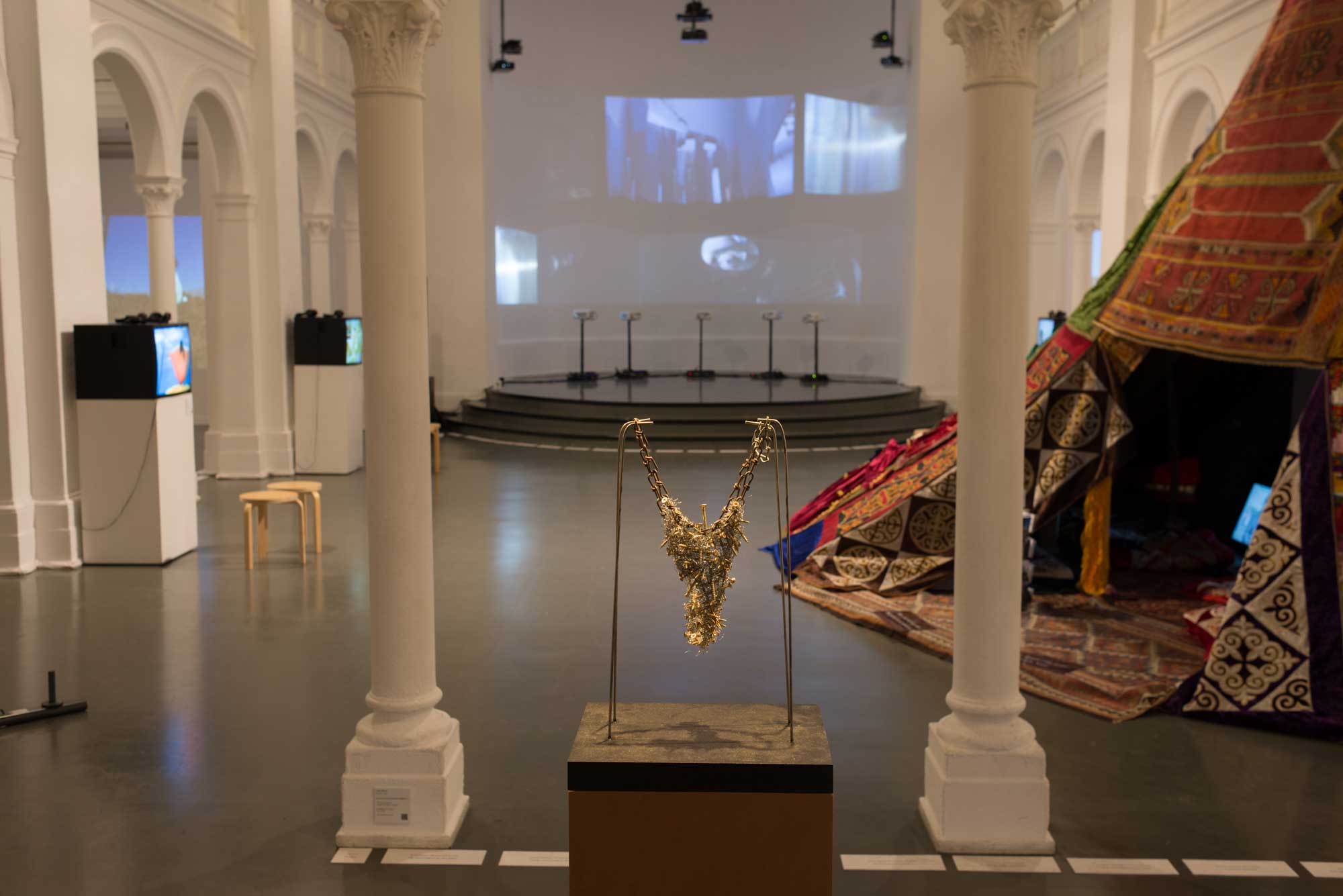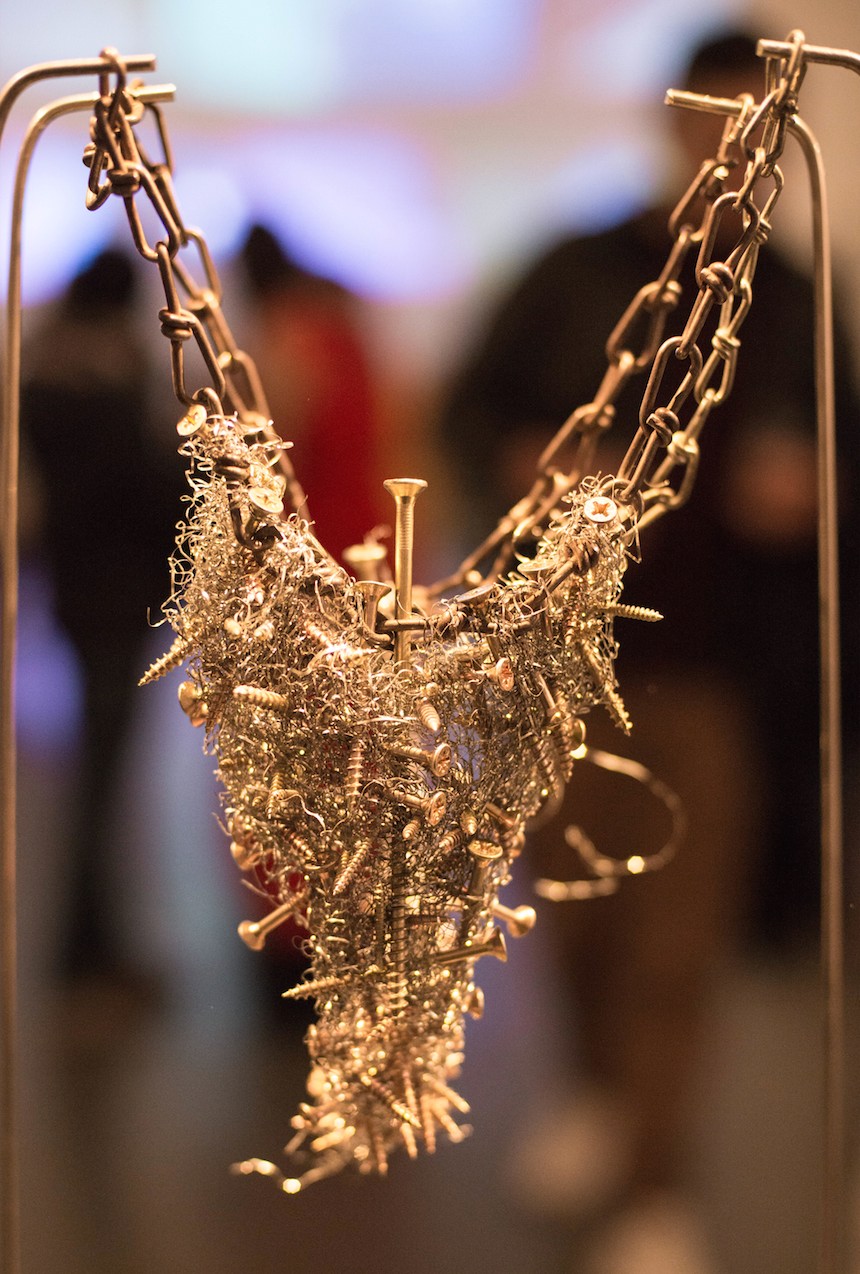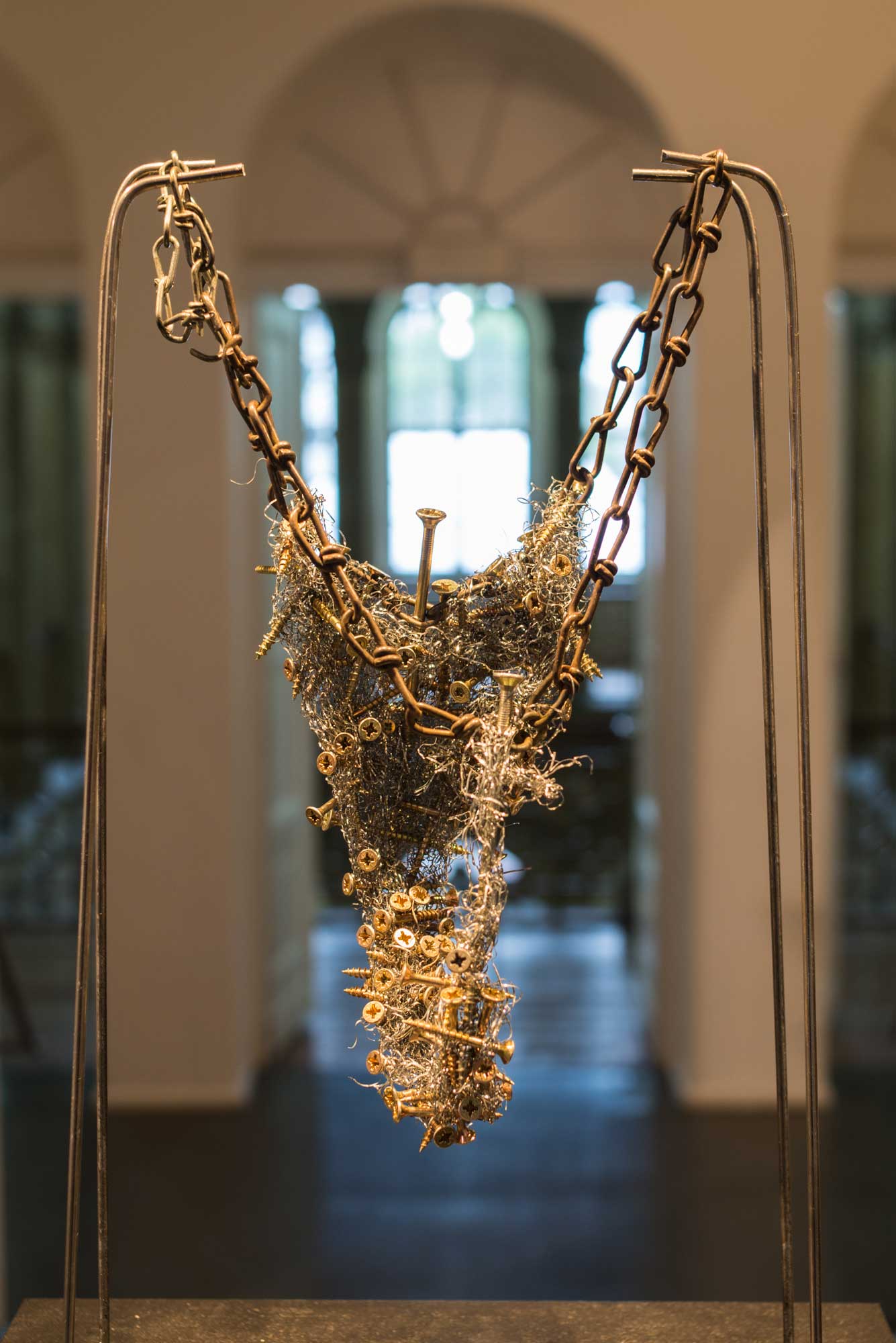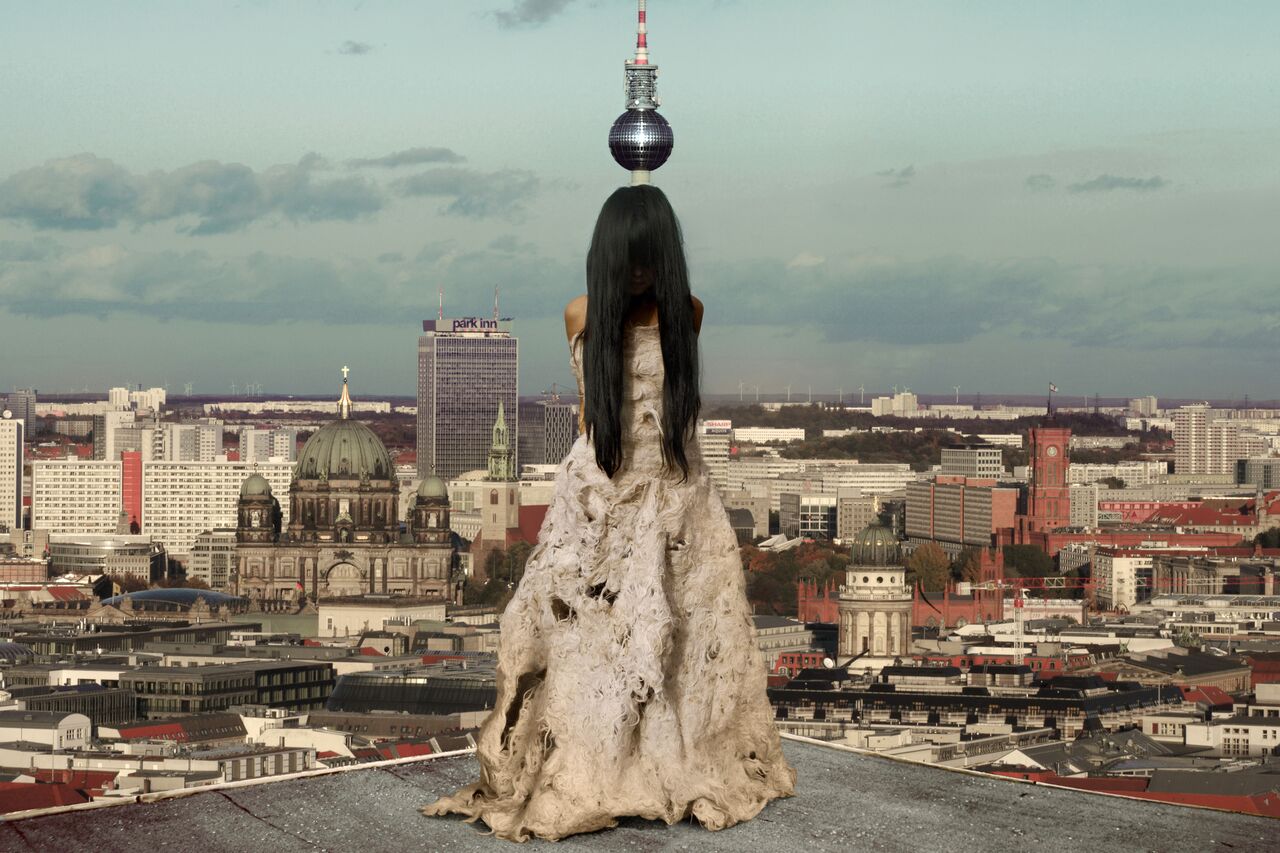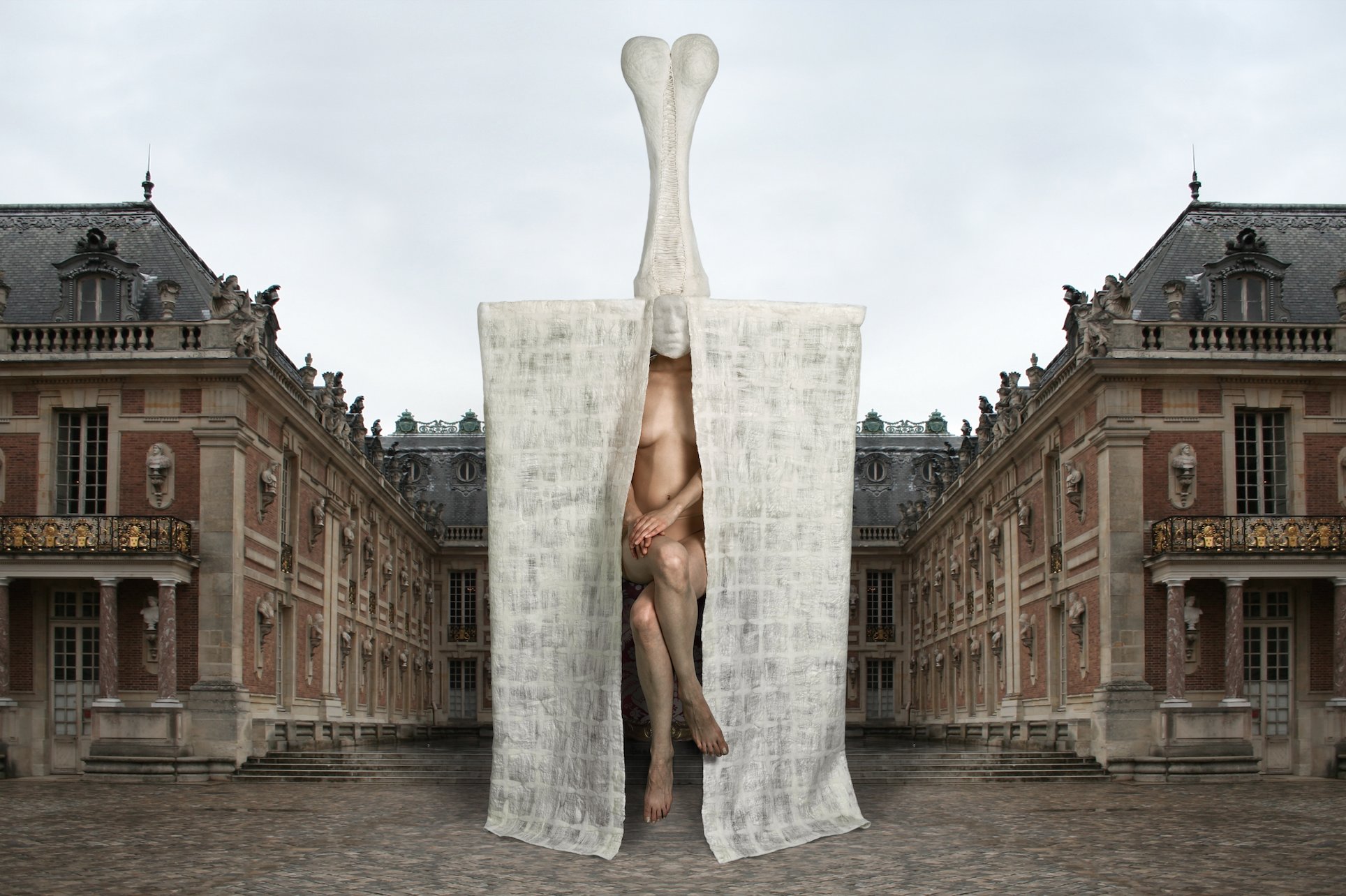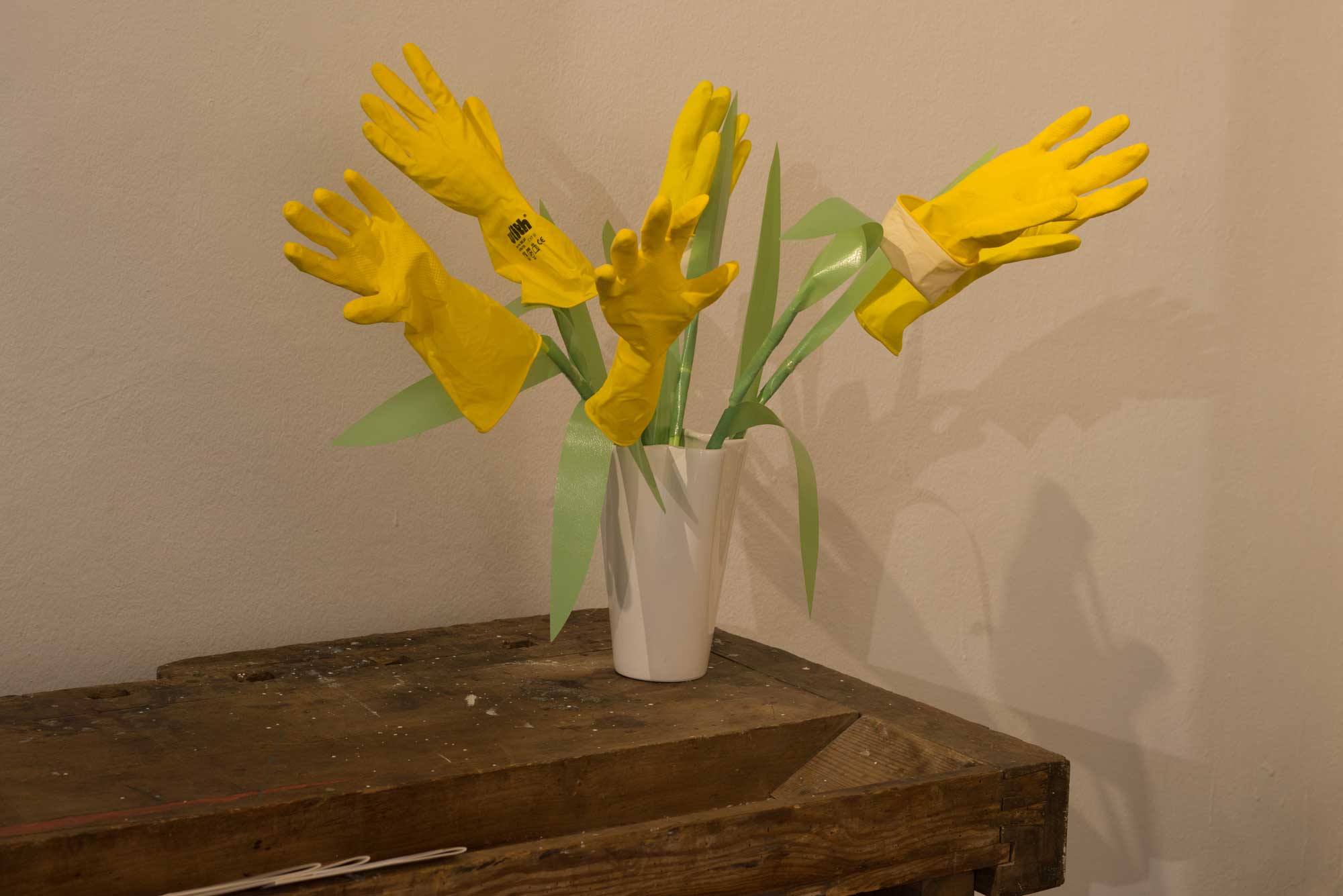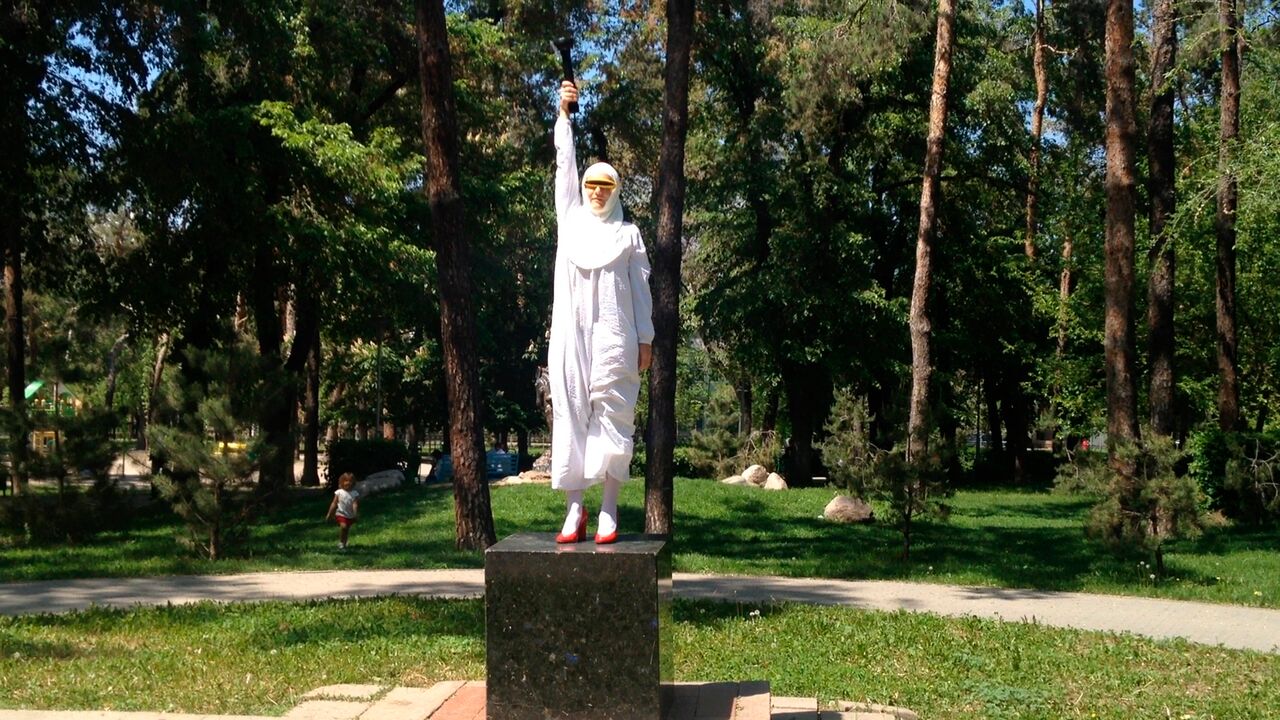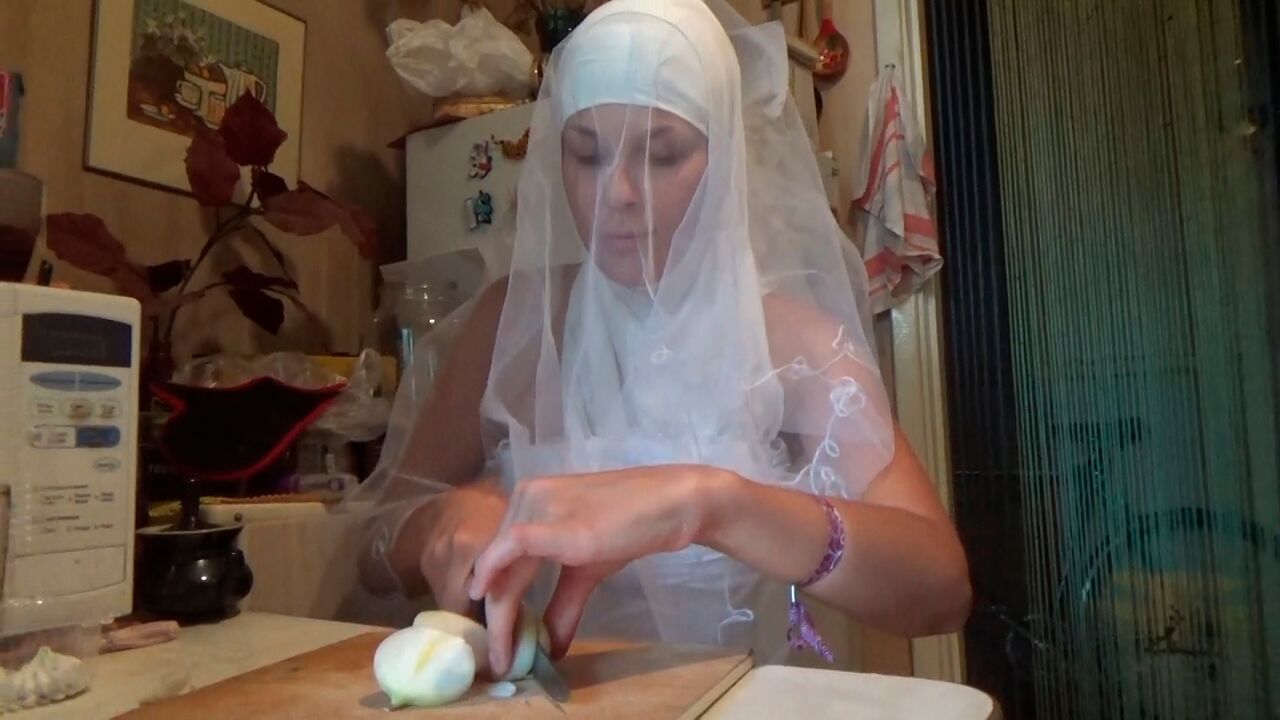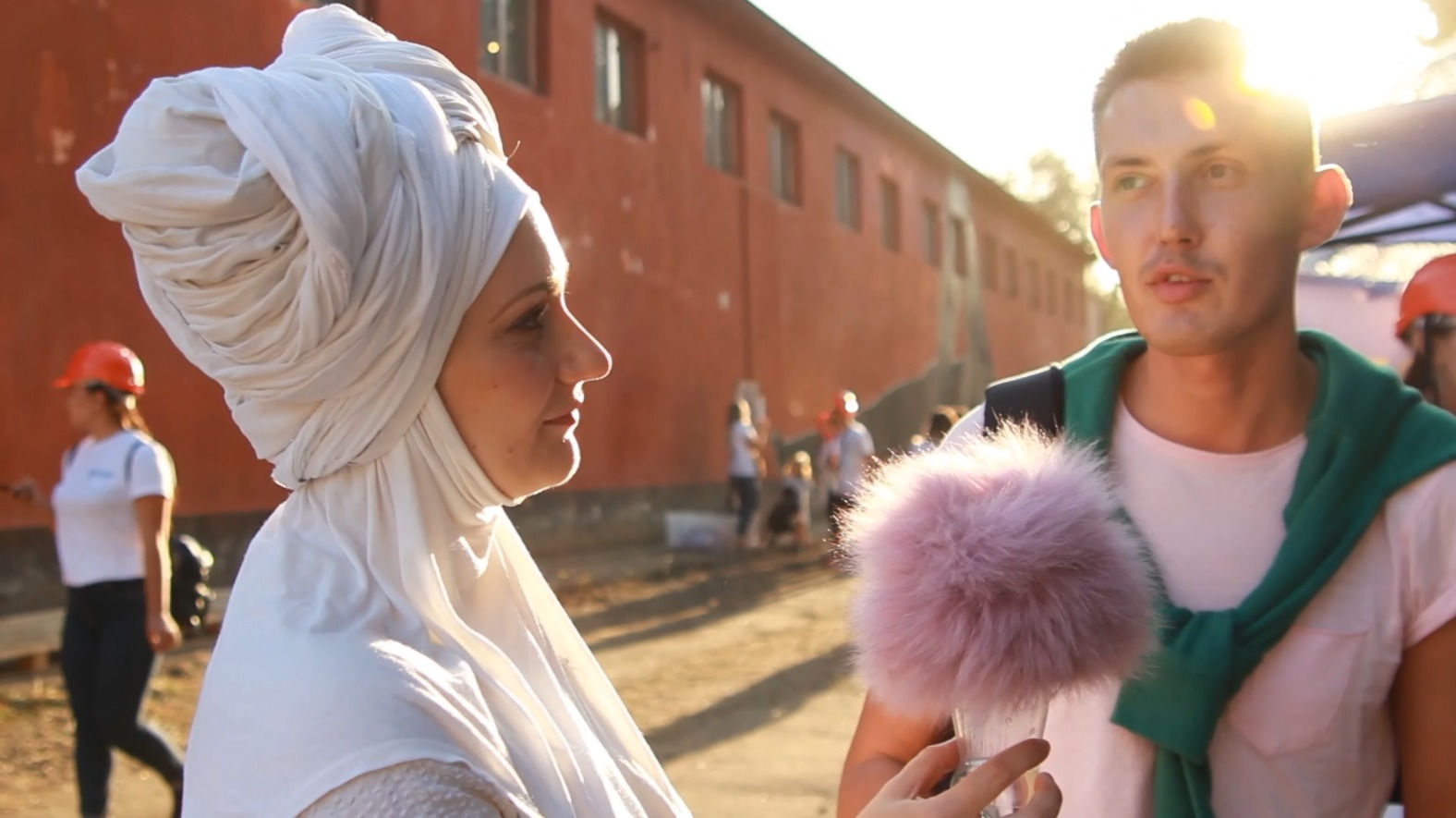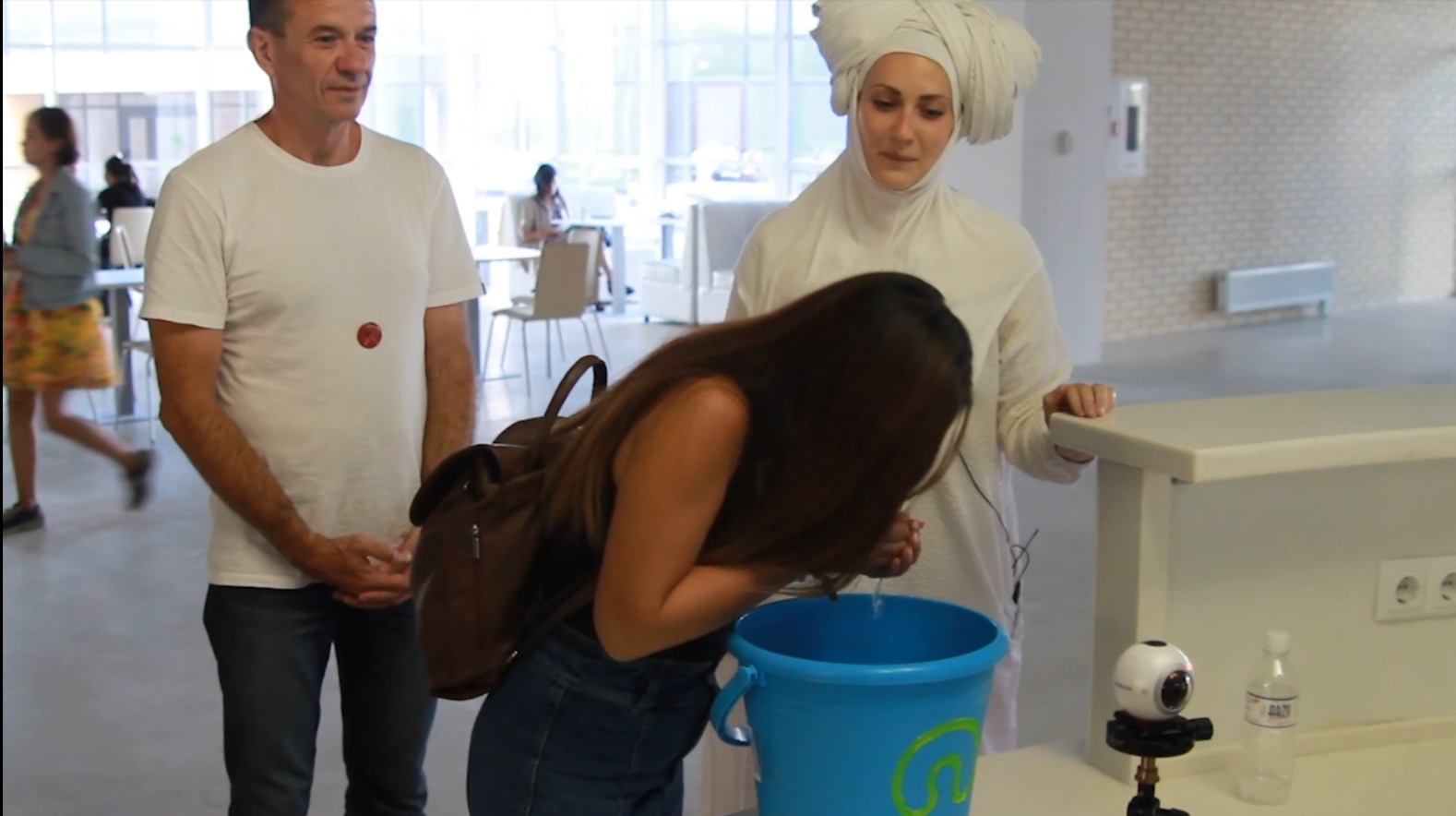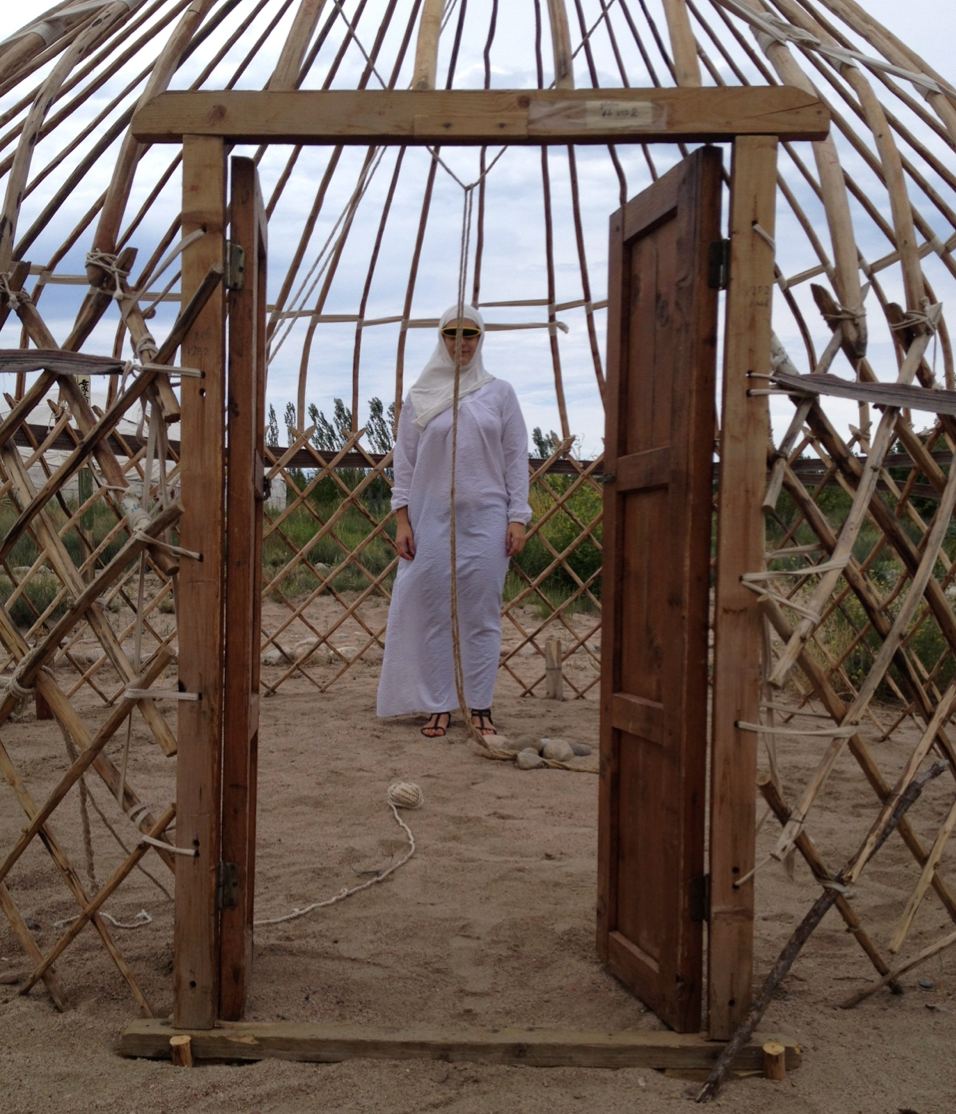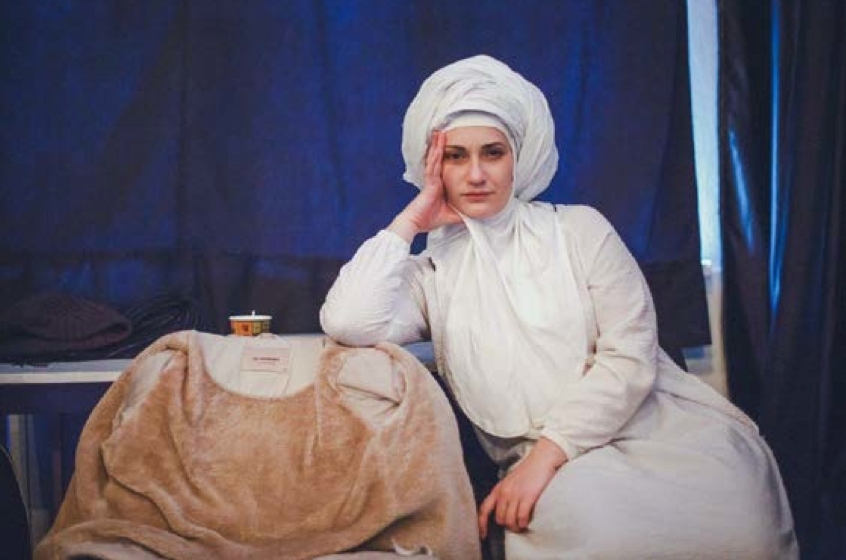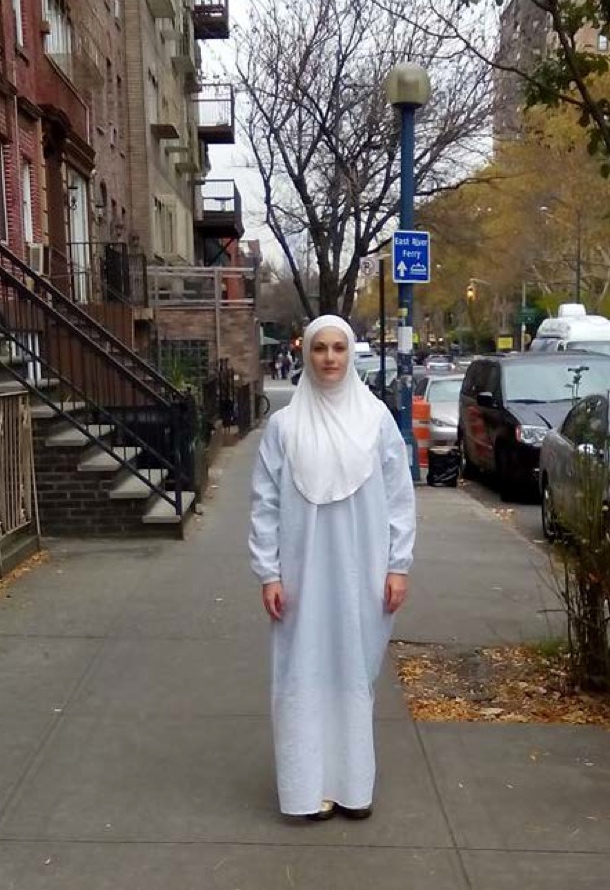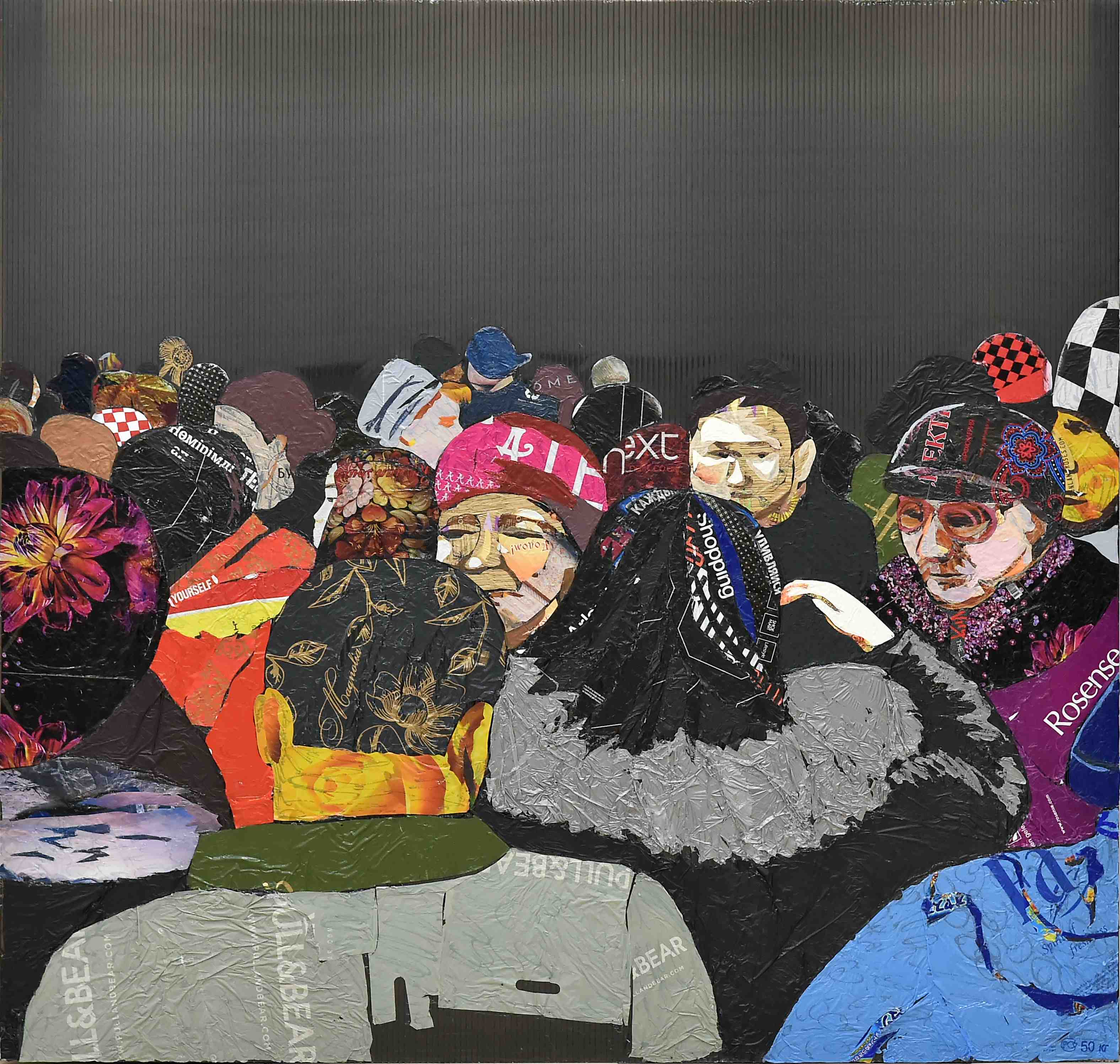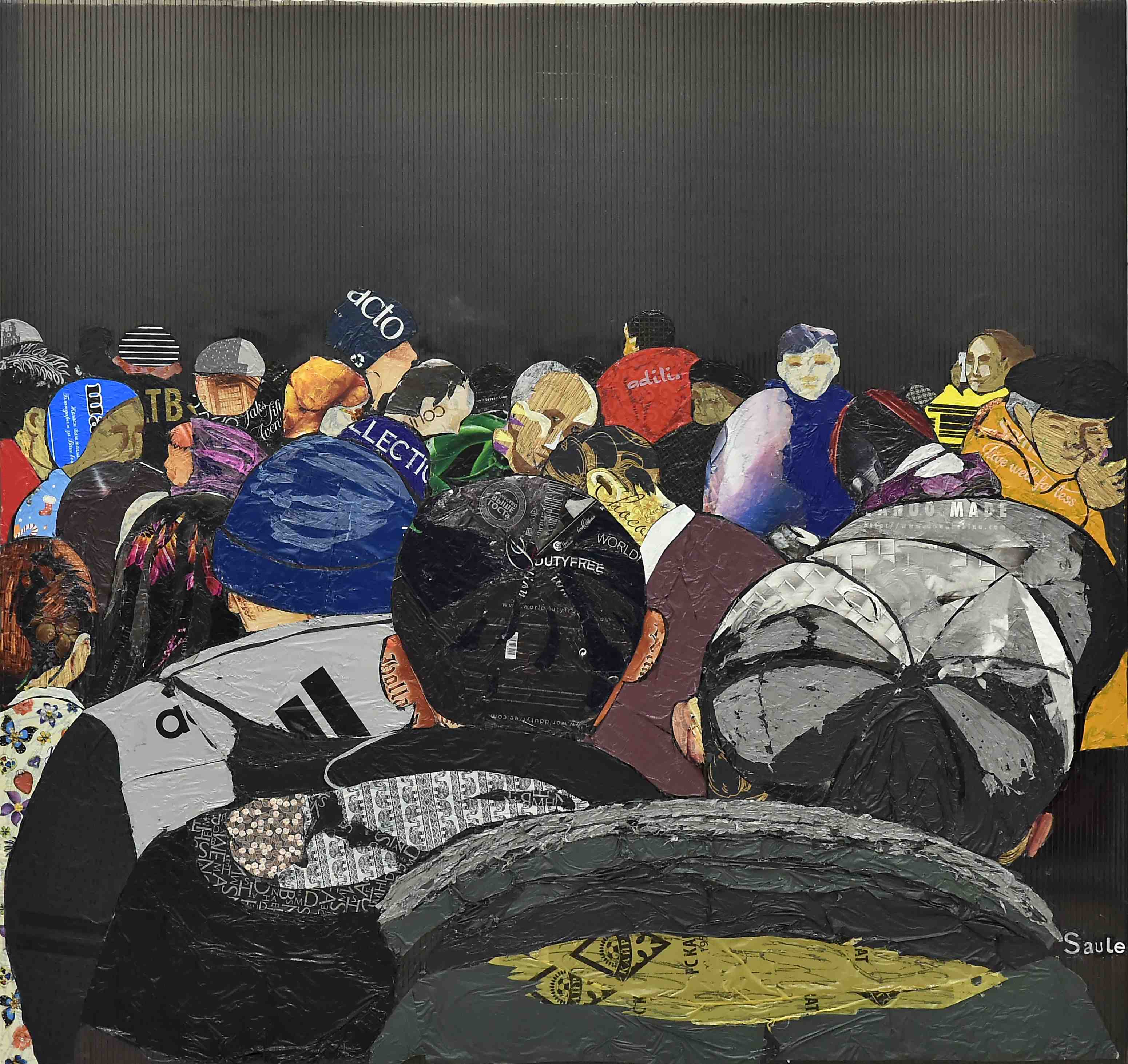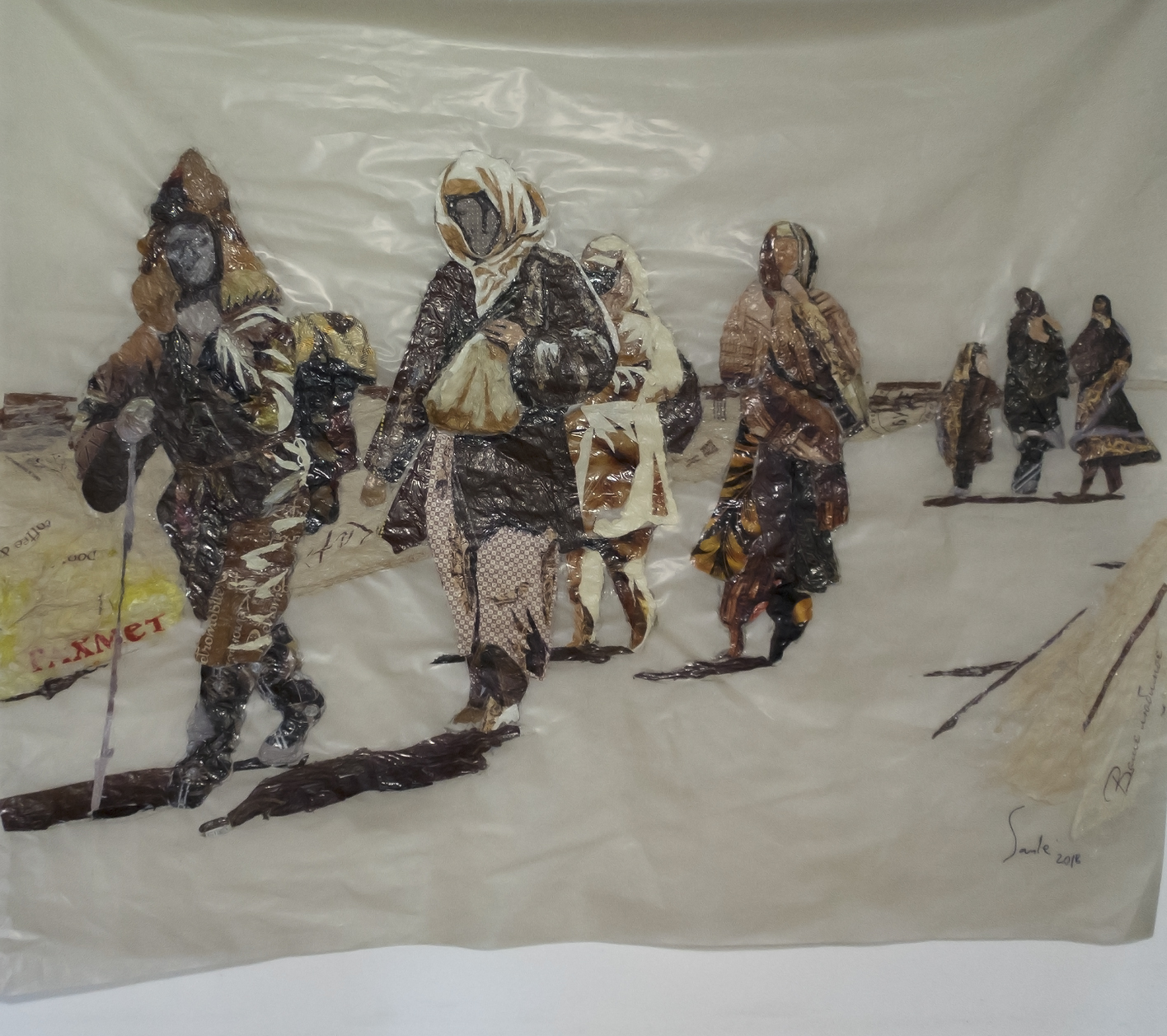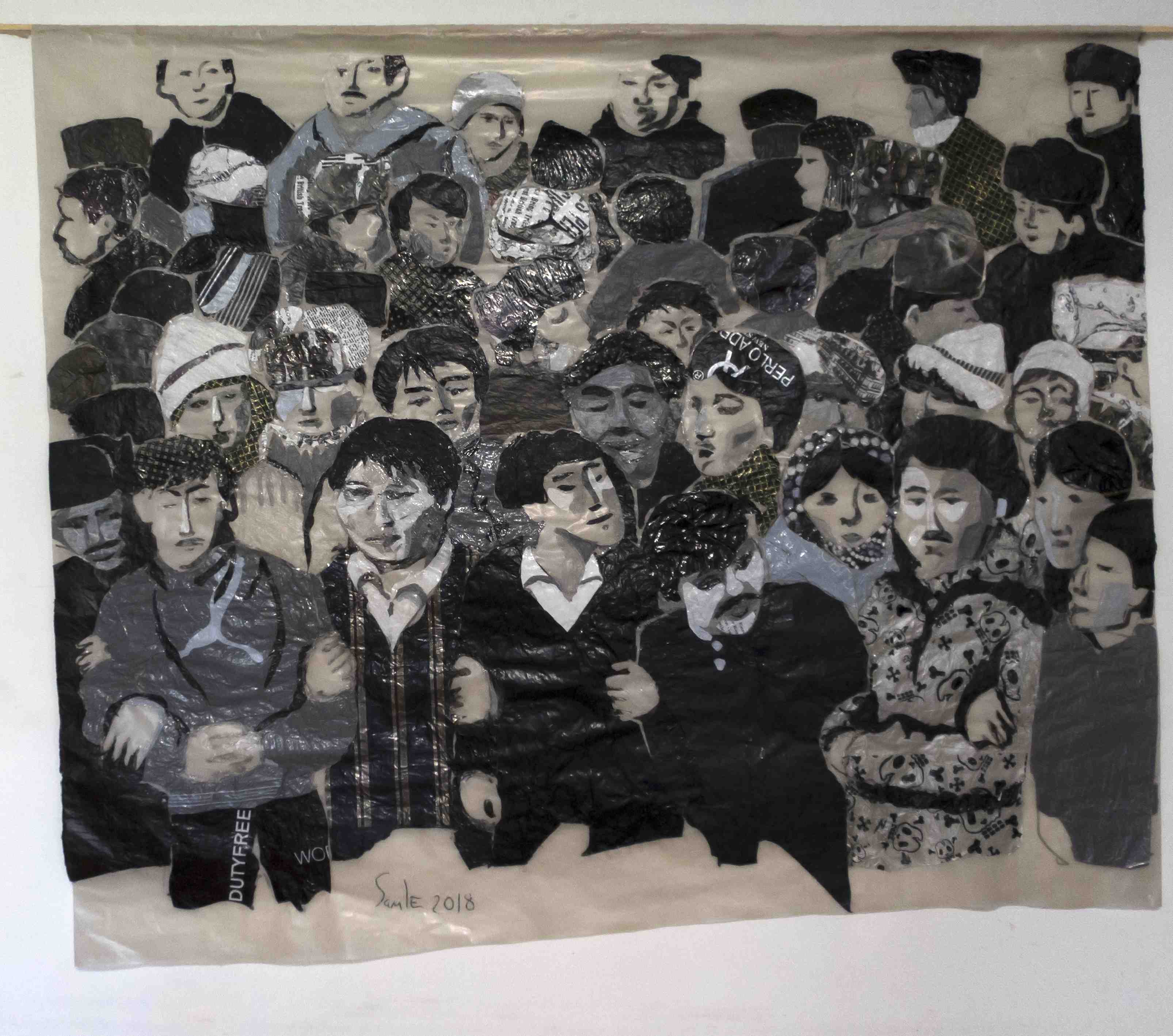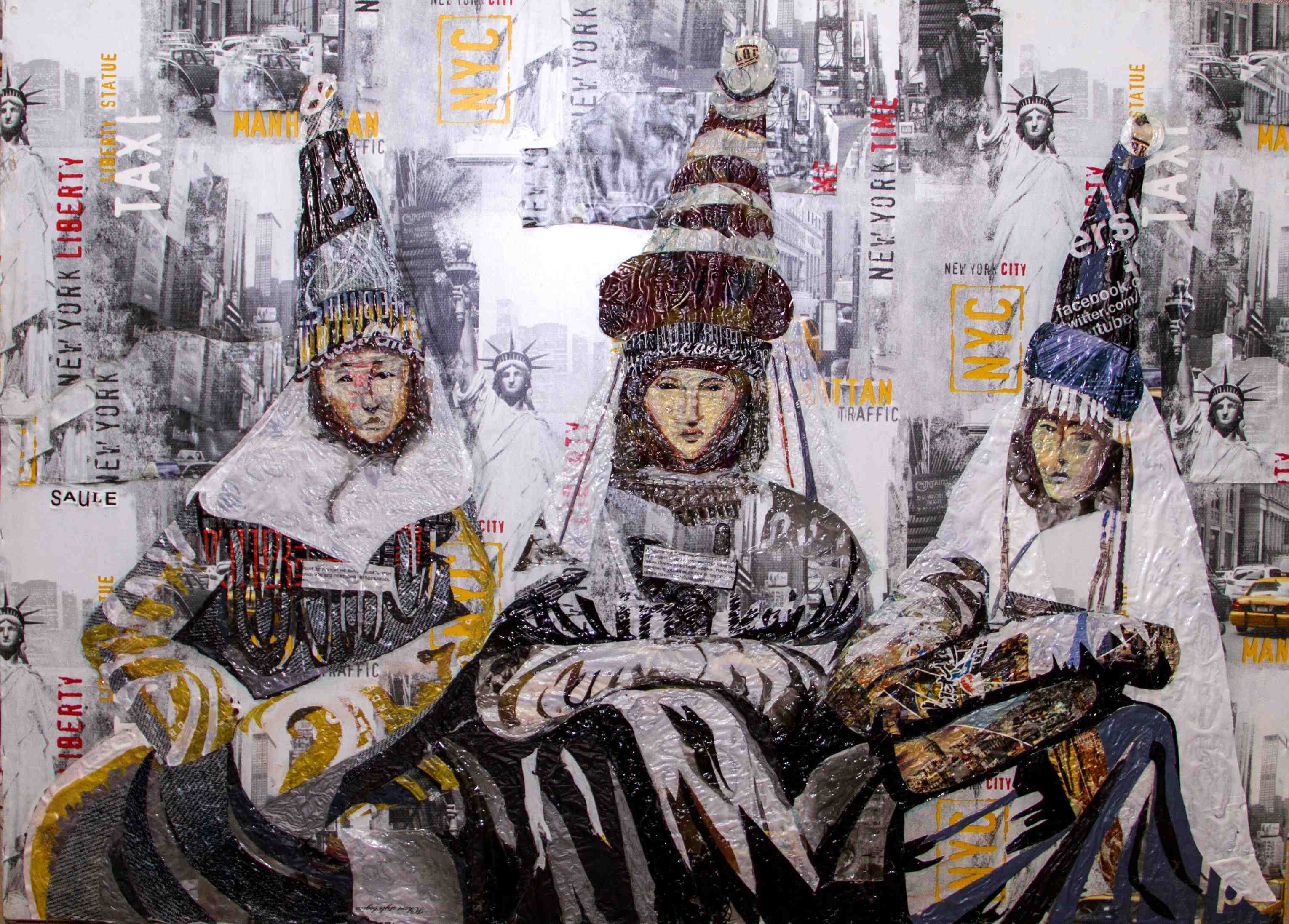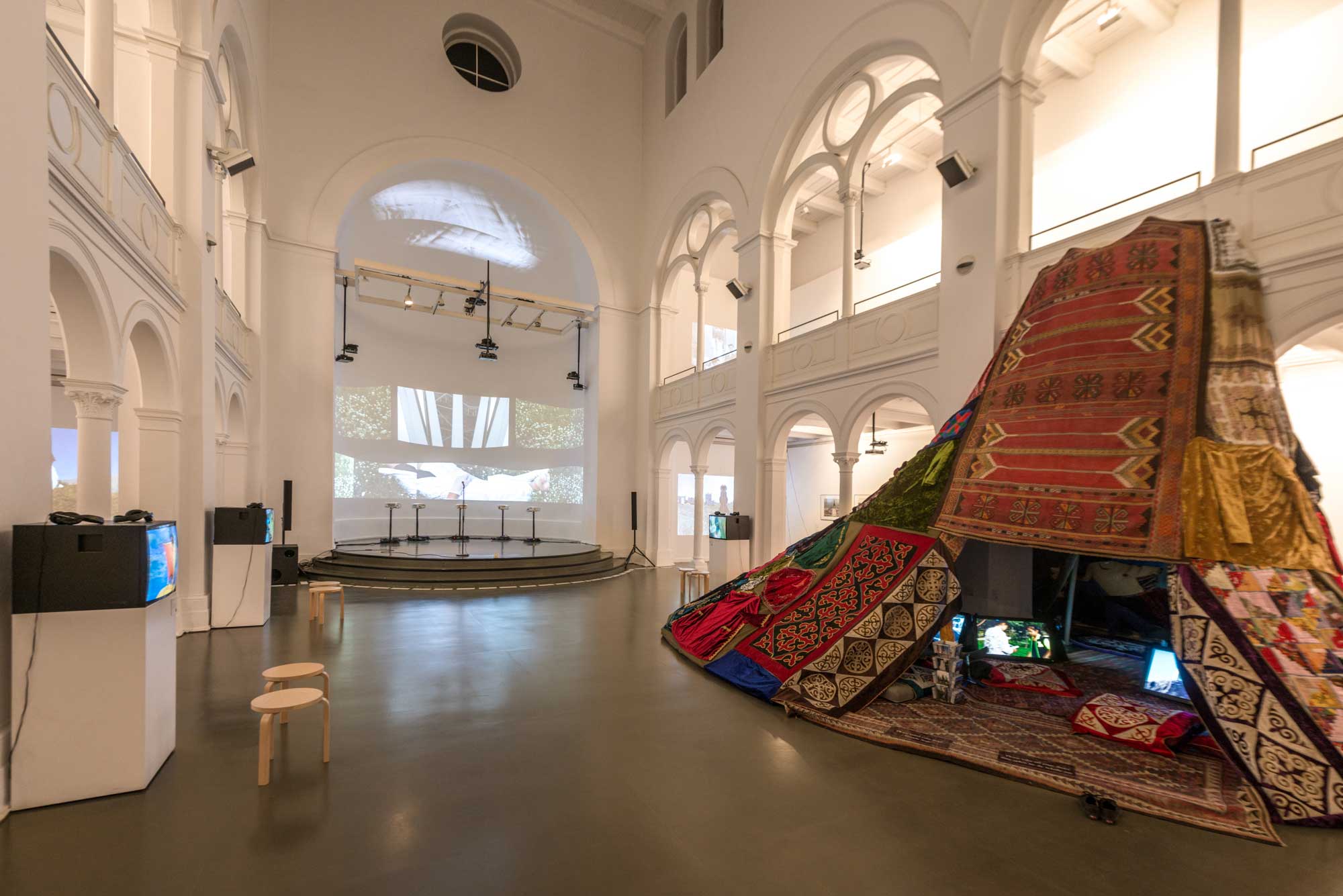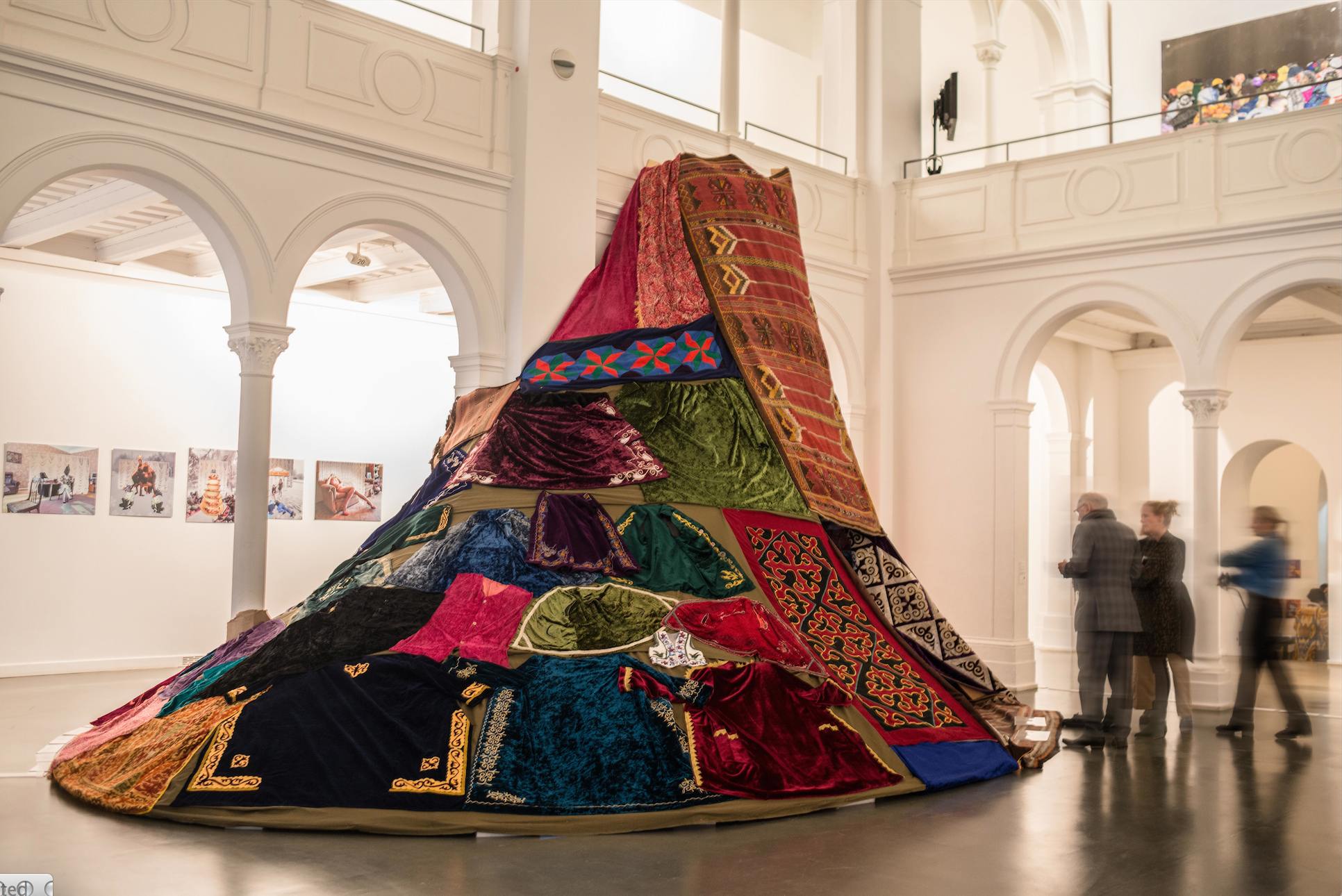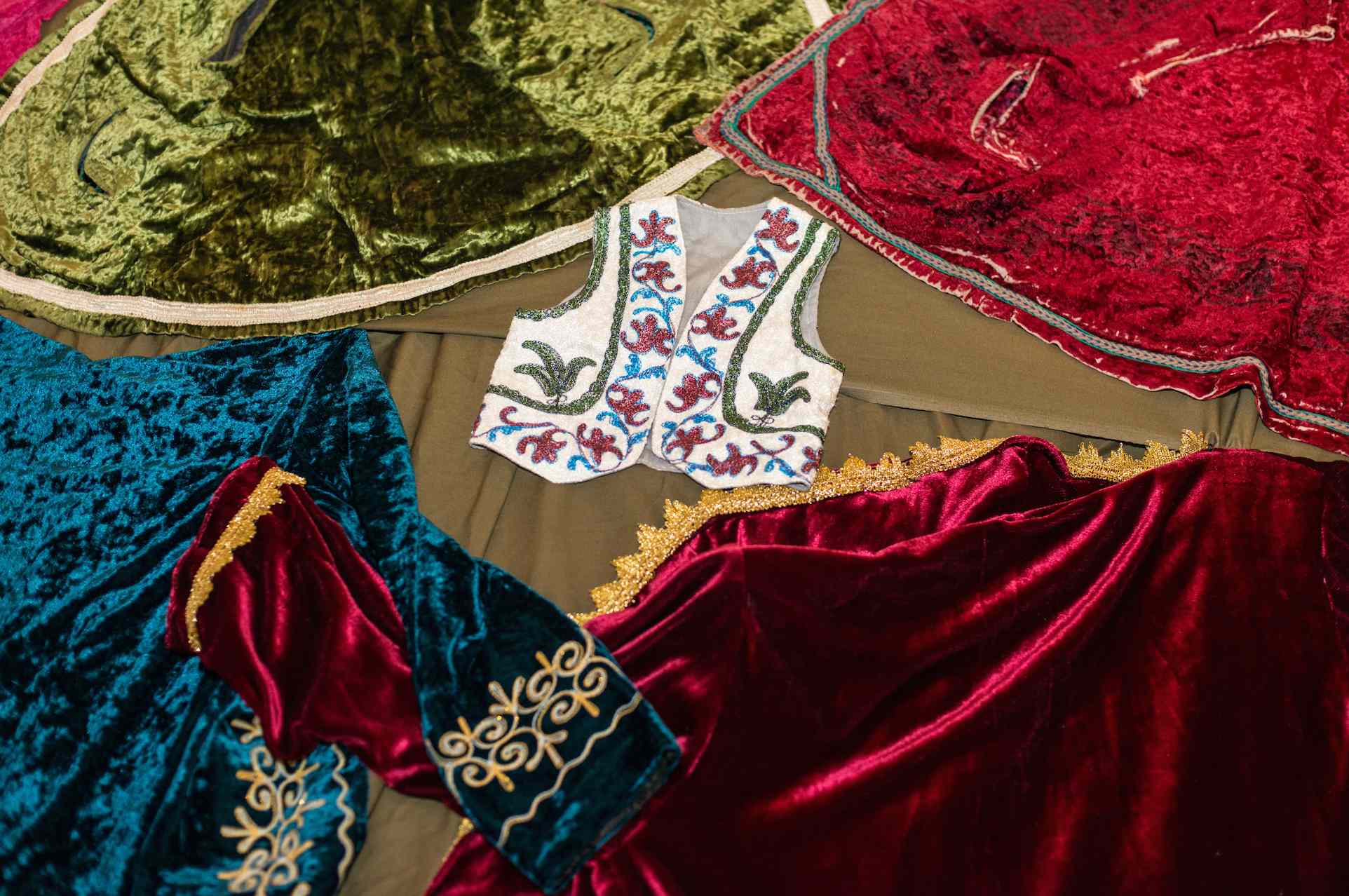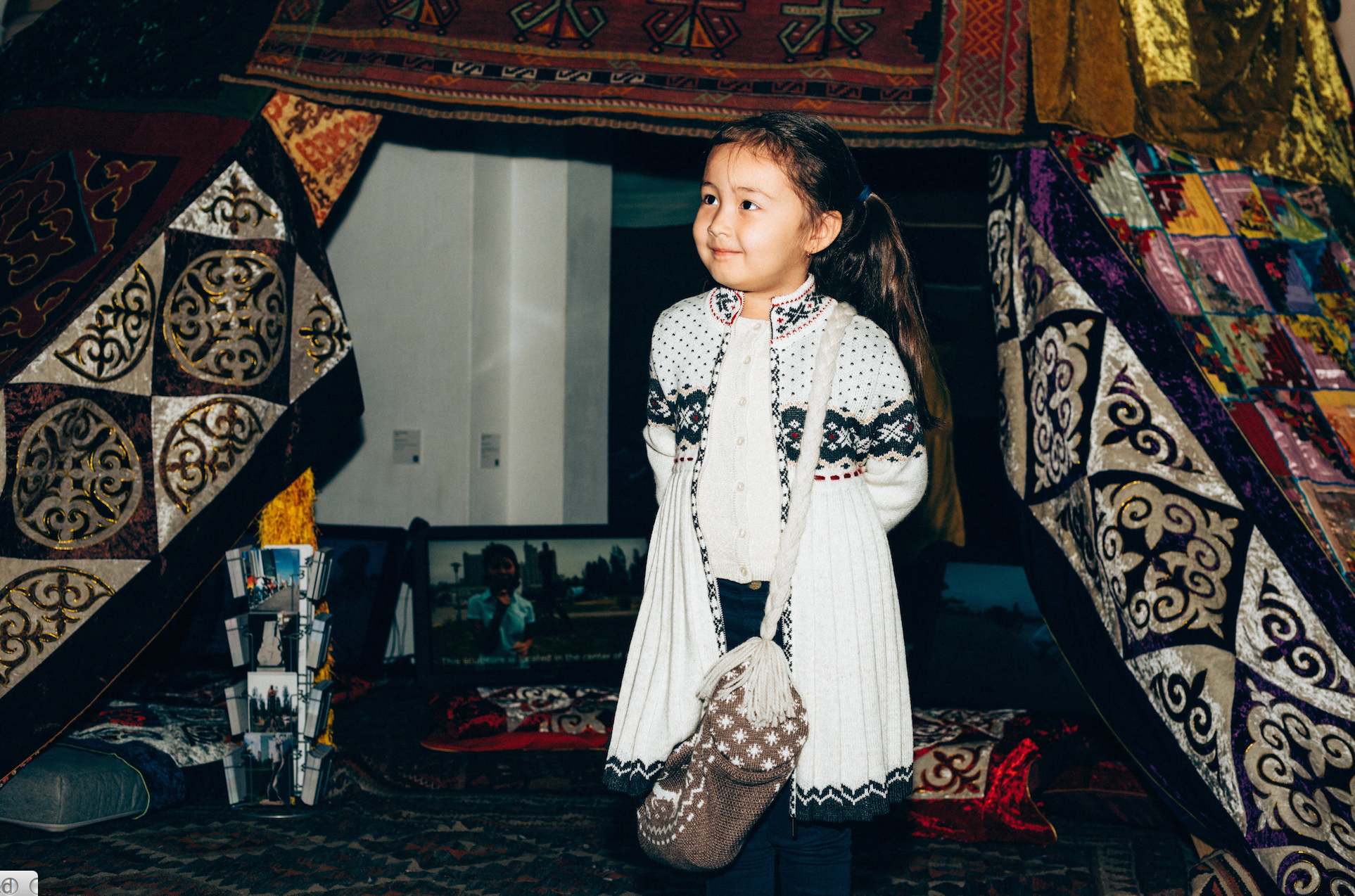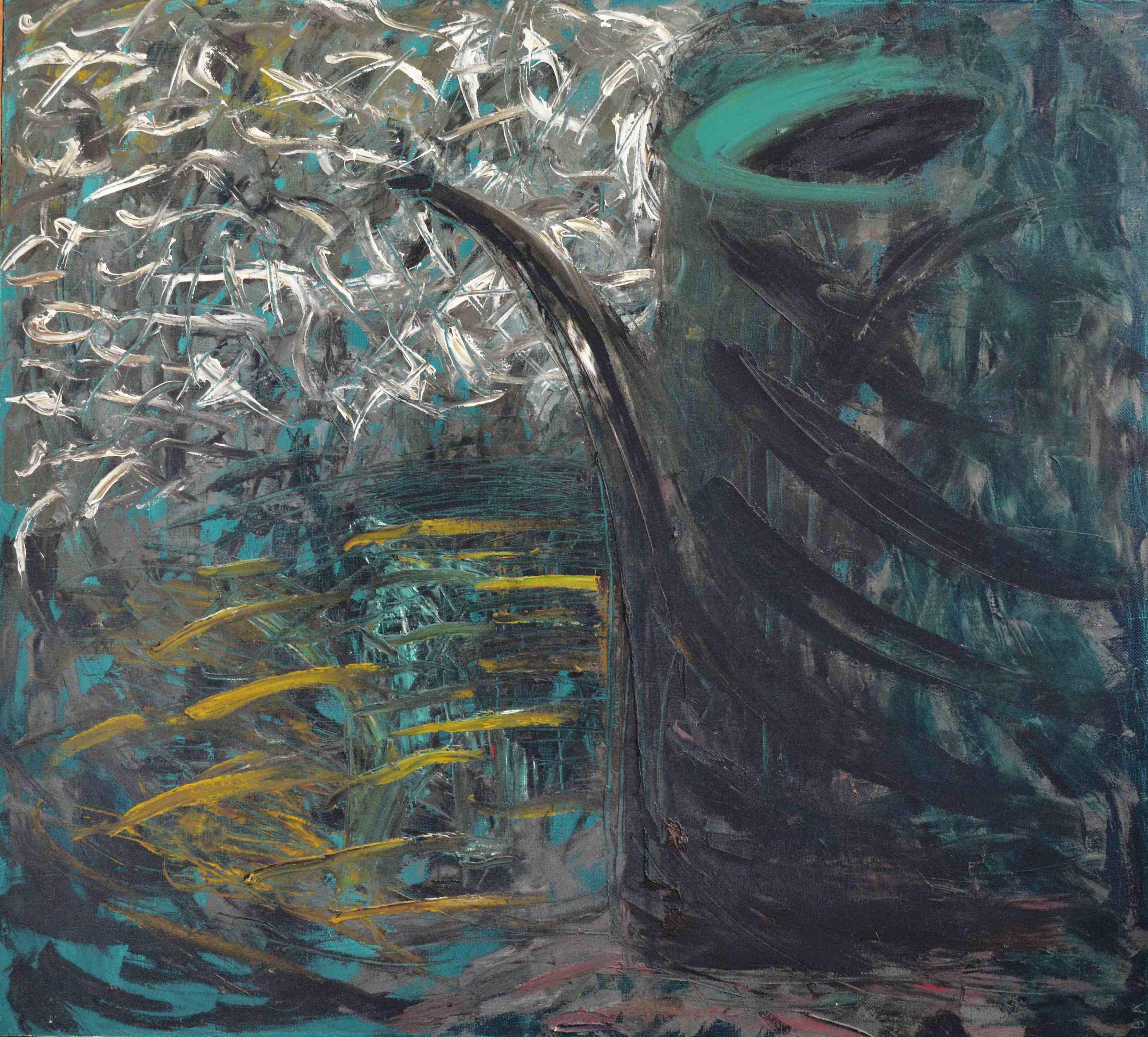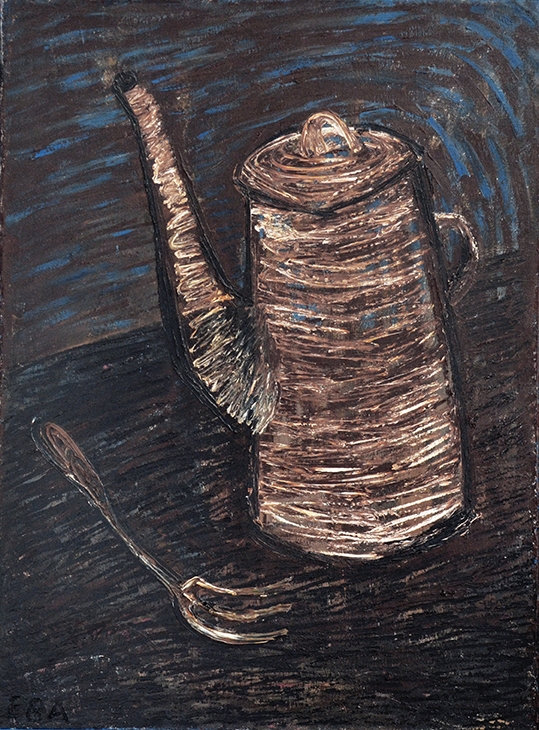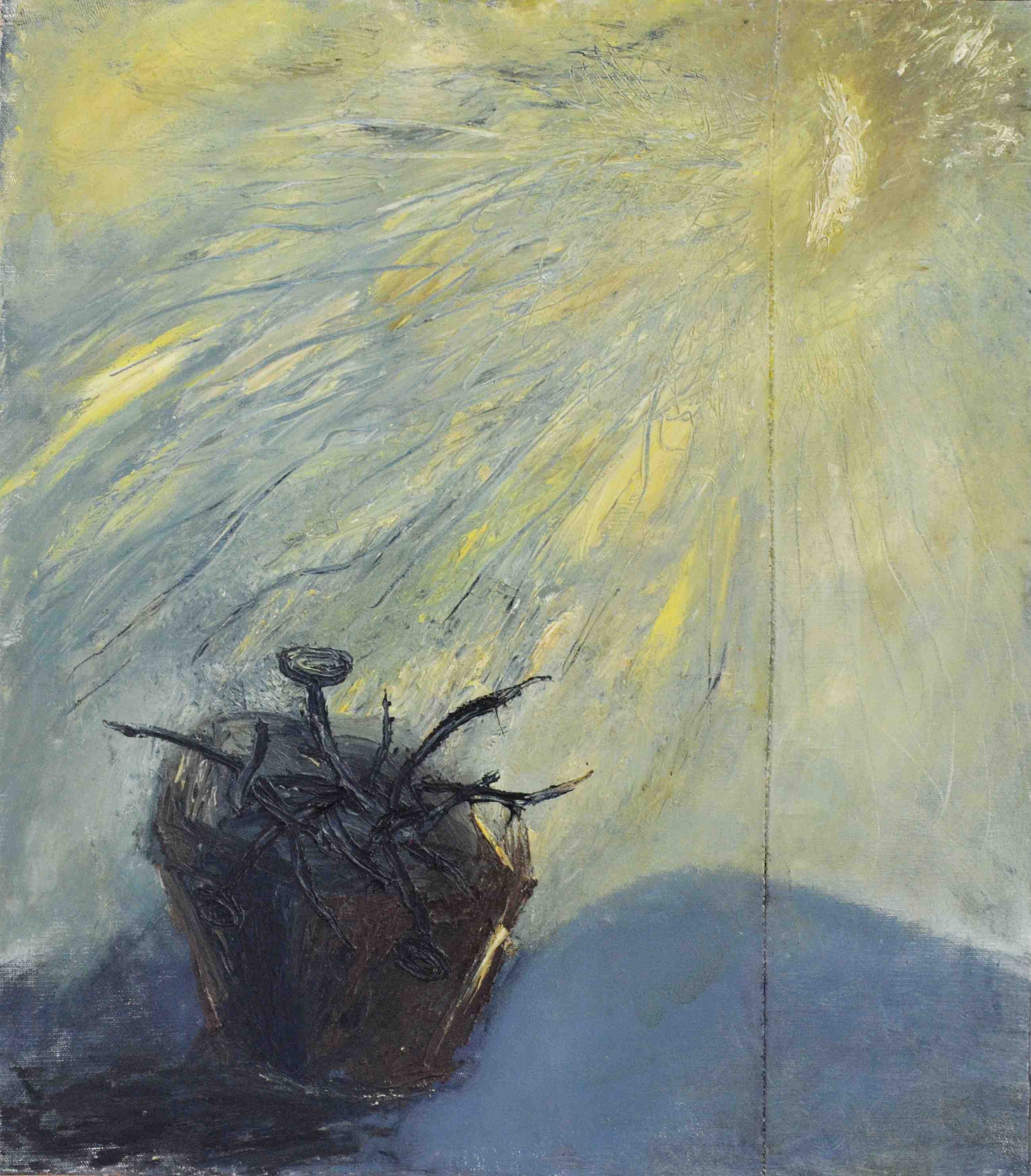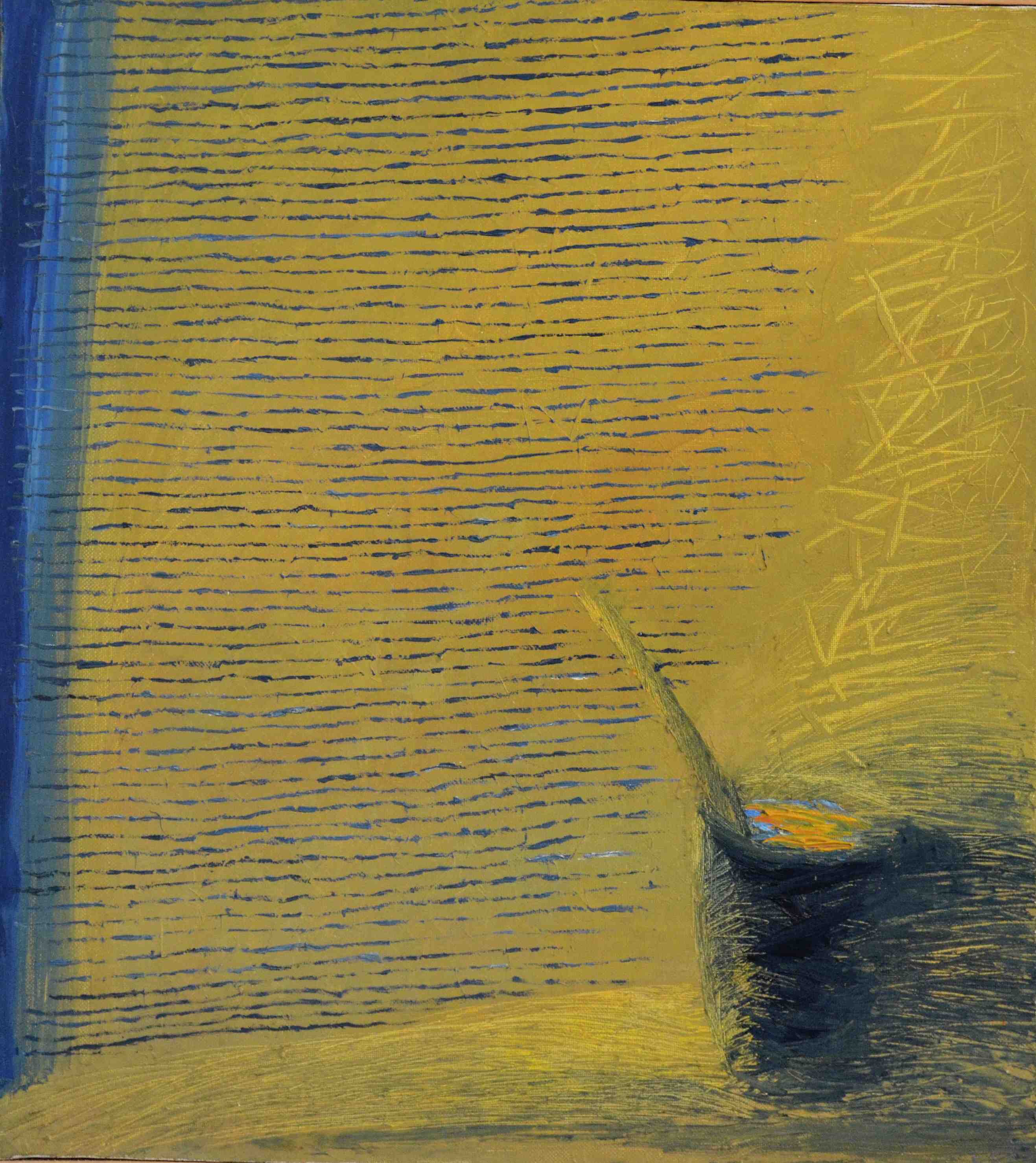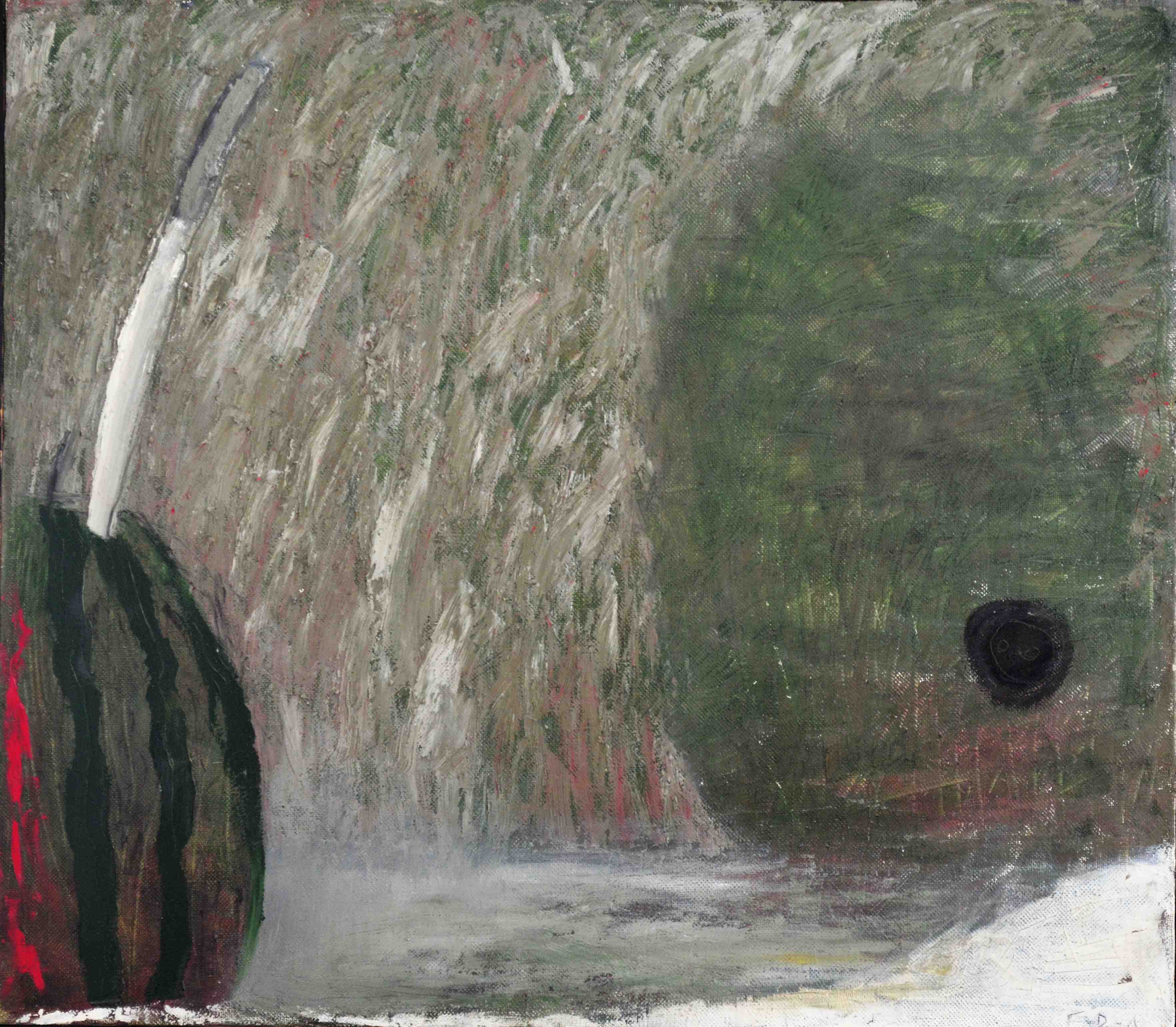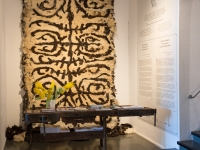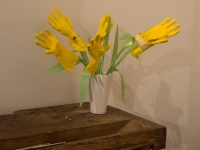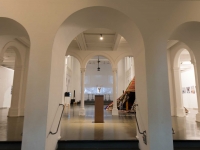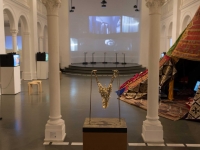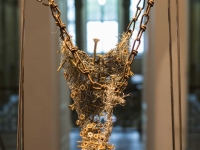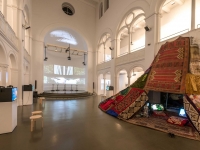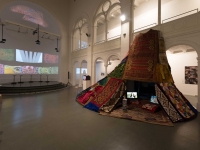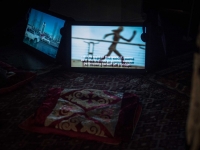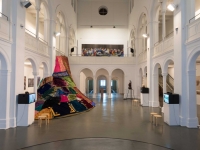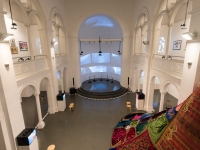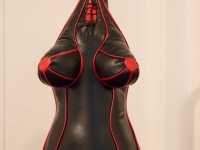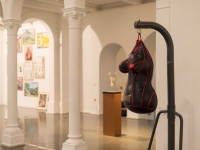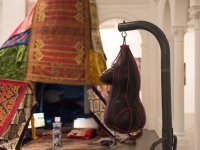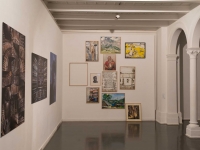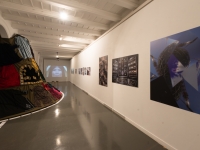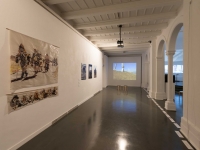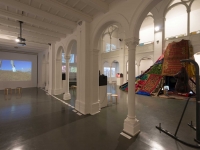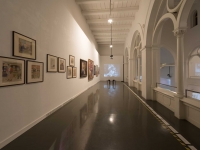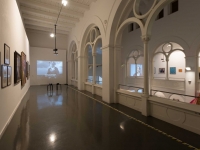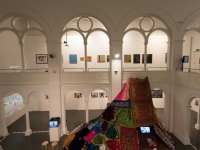Focus Kazakhstan Berlin
Exhibitions:
OPENING: 25 September at 19:00 – 22:00
SYMPOSIUM: 30 September at 15:00 – 18:00
EXHIBITION: 26 September – 20 October 2018
@ MOMENTUM Gallery,
& Studio 1, Kunstquartier Bethanien
Mariannenplatz 2, 10997 Berlin
Exhibition Opening Hours: Tuesday – Sunday, 12:00 – 7:00pm. Closed Mondays
BREAD & ROSES:
Four Generations of Kazakh Women Artists
Anar Aubakir, Lidya Blinova, Bakhyt Bubikanova, Ganiya Chagatayeva, Natalia Dyu, Vera Ermolaeva, Zoya Falkova, Aisha Galimbaeva, Tatiana Glebova, Gulfairus Ismailova, Kreolex Zentr (Maria Vilkovisky & Ruthie Jenrbekova), Gaisha Madanova, Aigerim Mazhitkhan, Almagul Menlibayeva, Gulnar Mirzagalikova, Gulnur Mukazhanova, Katya Nikonorova, Saule Suleimenova, Gulmaral Tatibayeva and Elena Vorobyeva
go to the info about the artists below ↓ ↓
@ Studio 1
Kunstquartier Bethanien
Mariannenplatz 2, Berlin
Focus Kazakhstan: Bread and Roses is an exhibition of four generations of Kazakh women artists organised by MOMENTUM in partnership with the National Museum of the Republic of Kazakhstan. This show comprises work in a wide-range of media by 20 artists created from 1945 to the present. Emerging Kazakh women artists are prefaced in the show by a group of eminent forerunners who have remained more or less invisible within the history of Soviet, Kazakh and world art. Against the tumult of Stalinist repression and its aftermath, the work of these women has forged a bridge between traditional Kazakh arts, crafts and ways of living, the Soviet avant-garde of the 1920s and ‘30s, socialist realism and a completely new approach to art making that emerged from the beginning of the 1980s. The works that these great grandmothers, grandmothers, mothers, and daughters of contemporary Kazakh art have produced reflect the melting-pot of ideas and influences between east and west arising from Kazakhstan’s history of tumultuous political and social change. Bread and Roses takes place in parallel to the Focus Kazakhstan Artist Residency Exhibition at the MOMENTUM Gallery, also in the Kunstquartier Bethanien.
Focus Kazakhstan
Artist Residency Exhibition
Saule Suleimenova, Beibit Asemkul, Anar Aubakir, Gulmaral Tatibayeva, Liliya Kim, Ykylas Shaikhiyev, Aigerim Ospanova
@ MOMENTUM Gallery
Kunstquartier Bethanien
Mariannenplatz 2, Berlin
Showing works by 7 artists created during their 2-month Artist Residencies at MOMENTUM, this exhibition is a reflection upon Berlin through Kazakh eyes. These works, produced during the artists’ first trips to Berlin, and for some their first trips abroad, encompass a cultural dialogue between their traditions and the condition of the contemporary nomad. Dealing with topics ranging from wartime histories to personal histories, today’s refugees and migrants to the nomadic migrations of the artists’ grandparents, the Focus Kazakhstan: Artist Residency Show exemplifies the talents of young artists never before seen in Berlin. Focus Kazakhstan: Berlin is a 6-month cooperation between MOMENTUM and the National Museum of the Republic of Kazakhstan resulting in two parallel exhibitions taking place at the Kunstquartier Bethanien on 25 September – 20 October 2018: Bread and Roses, Four Generations of Kazakh Women Artists and The Artist Residency Exhibition.
&
Artist Residency Program
A Cultural Exchange Partnership between
the National Museum of the Republic of Kazakhstan and MOMENTUM Berlin
Curated by:
Rachel Rits-Volloch, Director of MOMENTUM
David Elliott, Chief Curator & Vice Director of Redtory Museum of Contemporary Art, Guangzhou, China
Almagul Menlibayeva, Artist
Organized by:
The National Museum of the Republic of Kazakhstan
&
MOMENTUM Berlin
FOCUS KAZAKHSTAN BERLIN is a 6-month cooperation between the National Museum of the Republic of Kazakhstan and MOMENTUM Berlin, involving Artist Residencies for 7 young artists held from 1 June to 1 October 2018, and two parallel exhibitions be held on 25 September – 20 October 2018. Focus Kazakhstan Berlin: BREAD & ROSES and the Artist Residency Show, organised by Momentum Worldwide at the Kunstquartier Bethanien Art Center, are part of the Focus Kazakhstan initiative implemented by the National Museum of Kazakhstan in association with the Ministry of Culture and Sports of Kazakhstan within the framework of the program Ruhani Zhangyru. Focus Kazakhstan, a cultural initiative to bring contemporary art from Kazakhstan to an international audience, is comprised of four different exhibitions, each with varying artists and curators, taking place between June 2018 to March 2019 in Berlin, London, Jersey City (USA), and Suwon (Korea).
BREAD & ROSES: Four Generations of Kazakh Women Artists
The worker must have bread, but she must have roses too. (Rose Schneiderman, 1911)
Rose Schneiderman was a Polish-American labour union leader and women’s rights activist who never visited Kazakhstan. Her words are invoked here because they make a poetic case for an international equality of genders, based not only on suffrage and access to the bare necessities of life, but also for common rights to culture, work and a full life, well lived. This exhibition of the work of four generations of Kazakh women artists examines how such ideas and aspirations have developed there from the late 1930s to the present.
Since 1991, after the collapse of the Soviet Union, the Republic of Kazakhstan has transformed into a strategic command post at the crossroads of central Asia. From the earliest times, people, goods, ideas, religions and ideologies had flowed freely along the Silk Road. Now they begin to do so again. But the transition from nomadic steppe to bustling modern economy has been far from straightforward or happy.
From the beginning of Russian colonisation in the 19th century, Kazakhstan’s remoteness from the capital made it a suitable place for massive exile. In the soviet period, this role expanded dramatically with mass purges and the accompanying need for an ‘archipelago’ of gulags. This, with the disastrous famine that resulted from Stalin’s collectivisation of agriculture in 1932/33, is still commemorated by artists, and others, in Kazakhstan as an inhumane, barbarous episode.
Despite the suppression of national identity, the awakening of national imagination reached a head in December 1986 when mass demonstrations of Kazakh students flared in Almaty, quickly spreading throughout the country. The security forces arrested and killed a large but unconfirmed number of people. Reference to this is also made in art.
The exhibition focuses on how themes and motifs from Kazakh history and culture have combined with those of modernity in a present-day critique of colonial and patriarchal values.
Its first section examines the legacy of the classical Russian avant-garde, repressed by Stalin, as well as of folk art, its Kazakh doppelgänger. It is followed, during the 1950s and ‘60s, by the emergence of the first generation of Kazakh women artists to work within the system of socialist realism, acting and designing for film and theatre as well as making paintings.
The present is intimated by the reawakening of autonomous, non-official art in the 1960s, ‘70s and ‘80s by people who struggled to establish a new sense of identity out of the ruins of the past. The last section, from 2005 to the present, concentrates on the birth of a new generation of independently-minded contemporary artists, more concerned with the present than the past, working across many different media in the cities of Almaty, Karaganda and Astana, the new capital.
– David Elliott
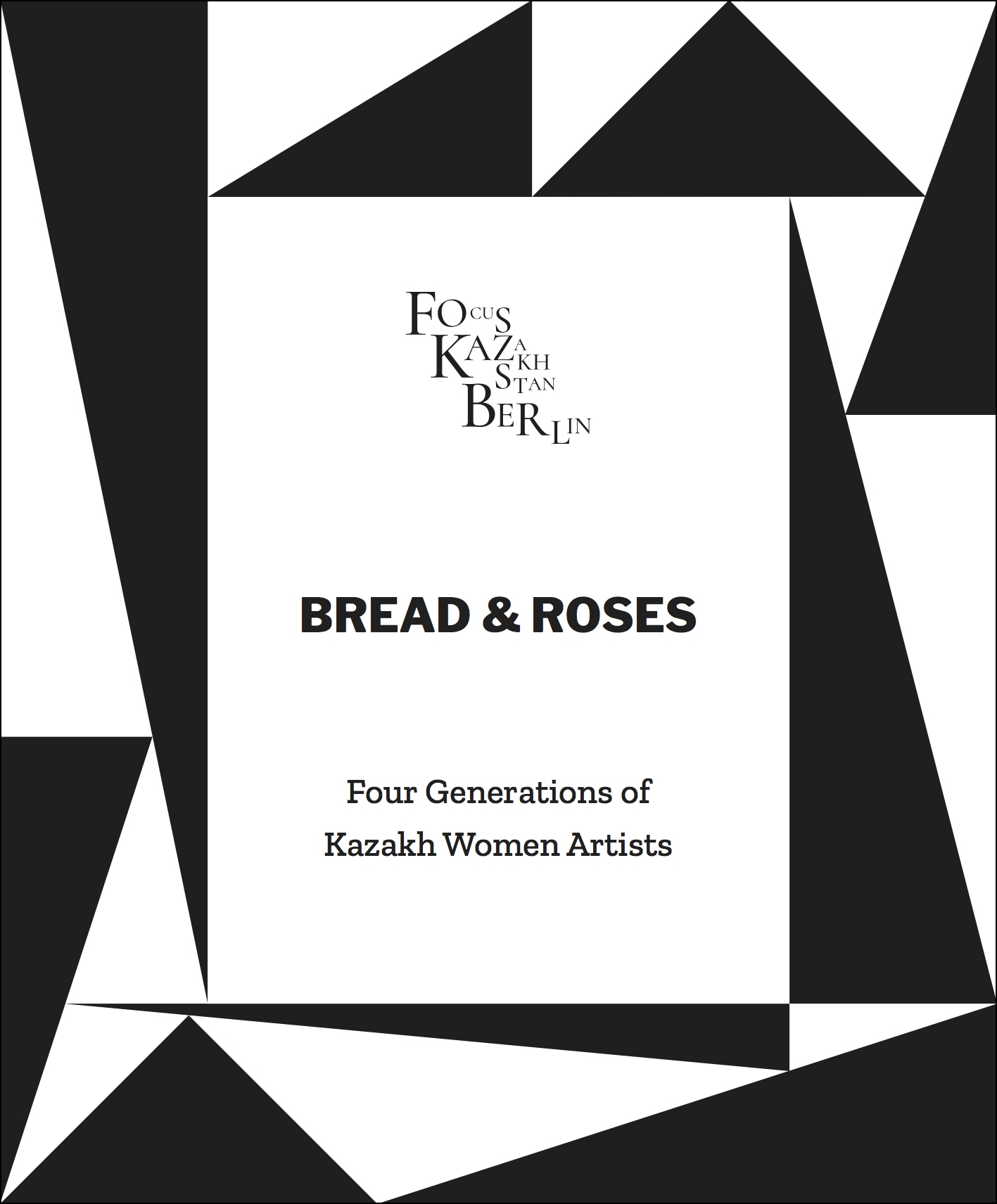
|
DOWNLOAD BREAD & ROSES CATALOGUE
|
 |
(click on the name to see the bio below)
|
PHOTO GALLERY OF BREAD & ROSES EXHIBITION
|
 |
|
Aubakir Anar
Born 1984 in Pavlodar, Kazakhstan. Lives and works in Astana, Kazakhstan
Anar Aubakir’s paintings, often shown in complex installations, emanate a disquieting poetic symbolism that, while referring to stories and relationships she has encountered in Kazakhstan, suggest a much broader reference. She completed an MA at the Kazakh National Academy of Arts in Almaty; in 2010 she won the best realist painting award in the Russian Art Week competition in St. Petersburg as well as the 1st painting prize in the Week of Kazakhstan Art competition in Almaty. Her work was awarded the Cholpan-Ata City Award in Kyrgyzstan in 2016. She is also the organizer of the first traveling exhibitions to have taken place since Kazakhstan became independent. From 2013 to 2017, she organized more than a dozen exhibitions, in which over 20 artists participated, which have travelled to Pavlodar, Semey, Aktobe, Atyrau, Kostanay, Karaganda, Temirtau, Kokshetau, Petropavlovsk, Ust-Kamenogorsk, Aktau and Astana. In each of the cities she conducted master classes in painting and interdisciplinary art. Solo exhibitions of her work have been held in Almaty (2010) and Astana (2015.) Her works are in museum collections in Kazakhstan and Tatarstan.
ARTIST STATEMENT: In 1976 my parents bought a house in Pavlodar in the north of Kazakhstan. Following family tradition, my mother and father, both being the oldest children, were responsible to their parents for their younger brothers and sisters. Our house became a common home for close relatives, as well as for distant relations who came to the city from nearby collective and state farms – and even for close family friends. In 2009 Marina and her son Timur appeared in our family. I often asked her and her son to pose for me as I could see that their interesting faces harboured uneasy stories. Marina frequently spoke about her happy previous life in Kabardino-Balkaria [in the north Caucasus] and planned to go back there as soon as possible. Marina first came to Kazakhstan in the spring of 1944, when the People’s Commissariat of Internal Affairs of the USSR decided to deport Balkars, of which she is one, from their homeland. An earlier famine had killed a large number of indigenous Kazakhs, and it was decided to recolonize these territories by people from other nationalities. Marina and her family found themselves in the Sherbaktinsky district of the Pavlodar region. Many who had been deported returned to their homeland after Stalin’s death, but the story of Marina and Timur was different. In 2010 Marina decided to take her son ‘home’, hoping that according to the traditions of her people, older relatives would help her son arrange his life. She sold all her belongings in the village and came to Pavlodar, where her son was working. Beside a friend of her mother, she knew no one and she settled in the house next to us. Timur had been born and raised in Kazakhstan and it was difficult for him to imagine living in another place, but Marina could not stay in a strange house for a long time – at one point she even lived in her son’s car. Then my parents invited her to our house. Marina’s plan collapsed when her son had a serious traffic accident and a criminal case was brought against him. This trial lasted over a year. During this time Marina lived in our house with her son. But her desire to leave became almost overwhelming. Step by step, Marina managed to remove all charges against her son. Finally she bought train tickets and they went to the station, but on the platform she had a heart attack. In the ambulance she died. Timur buried his mother in Pavlodar and stayed in Kazakhstan. Marina’s mother refused to participate in her funeral; her daughter’s plan for a joyful reunion with her family and new life in her home of Kabardino-Balkaria remained only a dream. Home includes paintings and other works that express the preservation of nomadic spiritual and moral values in the face of the ruinous heritage left by the Soviet Union. Even when exhausted by the systematic ethnocide in the 20th century, my native Kazakh people have managed to maintain their sense of humanity by opening their arms to many others who have been deprived of means of subsistence during their time of forced deportation. In Home I have composed a composite portrait of a traditional Kazakh family – one which always had a place for people in need. By doing this, I raise the question of whether the Kazakh people will succeed in transferring such high standards to future generations. – Anar Aubakir |
|
|
Lidya Blinova
(1948-1996) Born in Alma-Ata, Kazakh SSR. Lived and worked in Almaty.
Lidya Blinova’s parents both worked as architects, her grandfather was a priest and mystic. She graduated from the Architecture and Construction Institute in Almaty and her subsequent work encompassed architecture, art, poetry, sculpture, jewelry, book design, acting, and cinema. By inclination she was a radical. She jointly developed ideas with Rustam Khalfin, her partner, (who described her as his ‘Alter Ego’) whom she had first met in 1962, at the age of fourteen, in the graphic studio of Alma-Ata’s Palace of Pioneers. Khalfin’s idea of the pulota – a keyhole into a fragmented world of space, time, and image – originated with Blinova. Formed by the simple gesture of folding a fist and looking through the hole in its middle, it created what she described as the ‘ultimate plastic object,’ replete, at the same time, with fullness and emptiness. At the end of the 1960s, Blinova’s earliest work was wooden sculpture made in the studio of Isaak Itkind, a primitivist and friend of Mark Chagall who had been imprisoned in Kazakhstan. She also encountered Pavel Zaltsman, a close associate of avant-garde painter Pavel Filonov in Leningrad, who had been interned in Karlag and, after his release in the mid-1950s, worked as an artist, art teacher and designer in the film industry. From the 1970s, she both organized and was a participant in non-official art exhibitions held in private apartments in Almaty that showed autonomous works by pupils of Vladimir Sterligov. (See also bio of Tatiana Glebova.) Both Blinova and Khalfin refused to work in any official capacity in order to concentrate on their own different forms of creative activity; Blinova often supported herself by producing and selling small sculptural forms as jewelry. In 1986, she worked as Production Designer on director Sergei Bodrov’s first film The Non-Professionals and, the following year, as costume designer for Sergei Solovyov’s film The Stray, White and The Speckled (1985). She also made puppet shows for children. Bringing together many different strands of interest that included shamanism, linguistics, structuralism, psychology and tantrism, she encouraged a conceptual approach in both her own work and that of her friends while also being aware of the emotional and sensual imperative of art. In 1995 she designed a series of catalogues on contemporary Kazakh artists for the Soros Foundation in Almaty, made Finger Ornaments, her conceptual photo-series of different mudras, and presented her installation Poem for a Cat at the Kokserek Gallery which also published the text of the work. In 2011 her work was posthumously represented in the exhibition Between the Past and the Future: Minus 20. The Archeology of Relevance at the Kasteyev Art Museum in Almaty.
LIDYA BLINOVA (1948-1996) Lidya Blinova, Untitled Sculpture [Self Portrait] (1966-69) wood, 85x70x70cm Courtesy of the Said Dzhienbayev Collection Lidya Blinova, Finger Ornaments (1995) series of 10 photographs, B/W, PVC backing, 29x201cm Courtesy of the artist’s estate Lidya Blinova, Poetry for Cats (1995) installation: text on paper, size variable Courtesy of the artist’s estate Lidya Blinova, Lidya Blinova: Pulota (2018) video, single-channel, HD, sound, 17’,16:9. Directed by Saule Suleimenova (b. 1970) Courtesy of the National Museum of the Republic of Kazakhstan, Astana, and Ruhani Zhangyru Prologue The wind whipped the atmosphere. And everything sublunar under the moon After buzzing out the day like combs, The overgrown gardens were bothered But what did we see? A tizzy swept over the old garden. 1. The learned pussycat, dismayed and aggrieved, And the pussycat in the coach? For every piece of iron in the womblike contraption Oh, the running in place, the maundering 2. Oh, the trellised mirrors of old aporias! 3. Madness’s abyss beckoned to the pussycat. The straps and traces were lost in a blink, 4. It is a pity their important chat 5. Then the breeze blew in our direction, “Listen, I’ve seen your face before. “With a gaze now joyful, now sad, you kept watch “Take courage, take courage, you have friends, Then the moon, which burned like copper, 6. The moon summoned a wave to its side. 7. Wisps of phosphoric foam sputtered. 8. By morning, the sea tour was over. 9. The tide rolled out, and towards the sea And then a prickly eyelid opened a bit The golden bark hastened to take 10. ………………………………………… ………………………………………… The incident was settled with sanity The heavy door cut off, like a tail, She climbed a steep cascade, The End The Warlock For a hundred coins and a bottle of hooch There were twelve rooms, besides the boudoir, What of it? The old ennui And in the oracle of ancient days, – Lidya Blinova |
|
|
Bakhyt Bubikanova
Born 1985 in Aktobe, Kazakhstan. Lives and works in Astana, Kazakhstan.
Bakhyt Bubikanova graduated from the painting and sculpture department of the Kazakh National Academy of Arts in Almaty in 2008. With a mixed-media practice encompassing video, performance, photography, drawing, painting, collage, and installation, she has been actively exhibiting her work since 2005. Since 2010, she has been teaching in the Kasteyev School of Fine Arts and Design. In 2014, she was given the First President’s Award for merits in the field of Kazakh contemporary art. Her selected solo exhibitions include: Homo, Almaty (2010); The Казахелiанский Superethnos, Atmosphere Art Space, Almaty (2014). Recent group exhibitions include: The Nomads, Artwin Gallery, Moscow, Russia (2015); Shymkent Art Days, Shymkent, Kazakhstan (2016); Elsewhere, Floodlight Foundation, London (2017); Suns and Neons above Kazakhstan, Yarat Contemporary Art Center, Baku, Azerbaijan (2017); Painting Resistance, Aspan Gallery, Almaty (2017); Postcolonial Art of Asia, GEDOK Karlsruhe, Karlsruhe Germany (2018); Art Dubai, UAE (2018). Intrenational Biennales include: A Time for Dreams, the Fourth International Moscow Biennale for Young Art, Moscow (2014).
ARTIST STATEMENT:
Bakhyt Bubikanova, Sebastian (2013), video, 2’5” This is the story about the life of Saint Sebastian, who was bound and pierced with arrows for his faith – but remained alive. In the current situation, any public political statement, one that often includes the artist’s body, is akin to the history of Sebastian. It is doubtful whether anyone will shoot you with arrows nowadays, but artists still have to punish themselves to prove and declare what they believe. And so this work is more like a biography of an ordinary person who harnesses themselves and waits.
Bakhyt Bubikanova, New Year’s Post Cards (2014), series of 5 photomontages I started my search in contemporary art from working on postcards using collage. These 2015 New Year’s cards (in the Chinese calendar this was the Year of the “Goat”) was made as a proposal for distribution via the internet. The format of collage is very suitable for our country, as it reflects how we collect fragmentary information: classical Roman columns with curtains; girls and boys who base their style of dress and behaviour on what they see on the internet and TV; a traditional Kazakh feast on a Soviet New Year’s Eve, (with the Red Star of the USSR instead of the star of Bethlehem); rituals of blessing (Bata) and the cult of sacrifice with bowls of meat and qazi (sausage-like food): an eclecticism of styles and symbols that, at the same time represents, one unique picture of identity: Eurasian collaboration.
Bakhyt Bubikanova, Boztorgay (2018), video, 6’10” In the video I sit on a decorative hill, against the backdrop of pyramids. I am listening to music, crying out in time with the melody of the hit song ‘Boztorgay’, written by Kenen Azirbayev and performed by Meirambek Bespaev, that became popular in the ‘90s. In my childhood, I heard it many times on a cassette tape recorder at home. It was my father’s favorite song and tells the sad story of an orphan. For me this song is a symbol of the Kazakh country. The modern culture of Kazakhstan is riven through with tragedies: wars, famine, repressions. We can observe this in the colour of our paintings, in our music, theatre and cinema, even in our tradition of zhoktau (song lamentations). – Bakhyt Bubikanova |
|
|
Ganiya Chagatayeva Born 1956 in Alma-Ata, Kazakhstan. Lives and works in Almaty, Kazakhstan
Ganiya Chagatayeva graduated from the department of Graphic Design in the Moscow Art and Industry Academy (former Stroganov Academy) and taught at the Zhurgenov Kazakh National Academy of Arts. She participated in the seminars of Vyacheslav Koleichuk, a post-constructivist sound and kinetic artist and Aleksandr Lavrentiev, a designer and grandson of Aleksander Rodchenko, which were held with the assistance of VNIUE Moscow (Moscow Technological University). She is a member of the Union of Artists and the Union of Designers. Chagatayeva works at the junction of painting and graphics, also making objects and installations, and teaching.
ARTIST STATEMENT:
Eastern wisdom says: Our world is a stream of metaphors and symbols in a pattern. Behind the boundaries of the visible world lies a clear divine order. In nature, everything is structured and subordinated to one’s own laws of harmony and rhythm. The laws of rhythm are the breath of the universe, resonating through art. The rhythmic formation of the inner environment of human perception is the desire to look beyond the visible. I search for my own understanding in the world and for a universal beginning that may be found in pre-figurative states. This is a conceptual experiment in the style of abstract expressionism. Overcoming the plane of the horizon, by opening inner perspective, and reflecting on the laws of harmony and rhythm, the highest order may be found hidden in the crystallization of symbolic thinking behind the visible chaos of nature. This makes it possible to create new spatial rhythms and images by finding new forms.
Ganiya Chagatayeva, House (2005), video performance, 4’40” Ganiya Chagatayeva, Transforming Object, Bird I-III (2005), series of 3 photographs
The southern shore resembled an almost uninhabited island, above which stood the dilapidated remains of a military facility. The building – a monster, like a vampire, dug into the body of Lake Issyk-Kul [in Kyrgyzstan]. The squares of the concrete beams divided the room into blocks and pools. Like blood vessels, huge rusty pipes intertwined the space. On the walls hung “stalactites” from bird dung and on the floor – fallen off plaster similar to an egg shell. In the huge openings of the windows the watery surface of Issyk-Kul pulsated like blue satin splinters. In an uninhabited, abandoned room – a tied dog … Such a sight looked as absurd as the empty pools on the shore of the lake. Subsequently, I included this dog in the credits of the film under the name “Stalker”. Throughout the whole area there was amazingly sparse vegetation and only the poisonous ephedra bush splendidly dissolved in its bright red berries. Near the building grew a curved, dried out tree, I gave it a new name – “Ephedrevo” and decorated it with green leaves from the ephedra. A dried tree, a black dog, cellars, catacombs, labyrinths… On the second floor, there was a ledge inside a room, possibly the remains of a balcony. At this point I started to make my first huge “Nest” object. It symbolized the “heart” of the building, it animated the space, and returned life to it. All the coast was neatly furnished with large porous rocks. They had smooth curved forms, and like sculptures they rose against a background of bright, small stones. The idea behind the video-performance was – to paraphrase a common metaphor – turning a pupa into a butterfly. In the film, the action had to move in the reverse order – the butterfly’s transition to the pupa-cocoon, and then from the cocoon-net to the likeness of a worm. The trapper hunts for the Bird – his double, which lives in the heart of the destroyed building. Bird tracks are lost in the sky, returning as a cloud. The sculptural basis of the action is the square (the bird) and the circle that limits it (the net). A catcher with a net can follow the bird to the shore, looking for it inside the building. In an act of transformation, the bird disappears among the coastal rocks. The net symbolizes a cocoon, stasis, a cage, our ego. Having been caught in the cocoon-net, the Bird tears it up, as the image of a pathetic, helpless creature, creeping out like a worm. The idea of the duality of consciousness is expressed in the images of the Hunter and the Bird in one person. The artist Vyacheslav Akhunov, afterwards, beautifully depicted his moment of birth from the cocoon-net. “Nest”, “Ephedrevo”, “The Fallen Cloud”, “Footprints”, photographs – my independent art objects entered the video performance and merged into the drama of the film. The sunny days seemed to have been ordered for our symposium and ended with this ‘graduation work’. The house saw us off with empty blue eye sockets, then the berries of the “Ephedrevo” dropped. Inside the house, in a large nest, the dog “Stalker” slept. – Ganiya Chagatayeva |
|
|
Natalya Dyu Born 1976 in Karaganda, Kazakhstan. Lives and works in Almaty, Kazakhstan
Natalya Dyu studied Fine Arts at the Buketov Karaganda State University, in the faculty of mechanical drawing. Selected exhibitions include: BALAGAN!!! Contemporary art from the Former Soviet Union and Other Mythical Places, MOMENTUM, Berlin (2015); Between Heaven and Earth. Contemporary Art from the Centre of Asia, Calvert 22, London (2011); East of Nowhere. Contemporary Art from Post-Soviet Central Asia, Fondazione 107, Turin, Italy (2009). International Biennales include: the 2nd International Antakya Biennial, Antakya, Turkey (2010); Qui Vive?, 2nd Moscow International Biennale for Young Art, Moscow Museum of Modern Art, Russia (2010); What Keeps Mankind Alive?, 11th International Istanbul Biennial, Turkey (2009); So Close Yet So Far Away, 2nd International Incheon Women Artists’ Biennale, Incheon Art Platform, Korean-Chinese Cultural Center Gallery, Korea (2009); M’ARTIAN FIELDS: Collaboration, curated by Irina Yashkova, 3rd Moscow Biennale of Contemporary Art, M’ARS Centre for Contemporary Arts, Moscow, Russia (2009); Muzikstan, Central Asian Pavilion, 52nd Venice Biennale, Venice, Italy (2008).
Natalya Dyu,I Love Naomi and Naomi Loves Fruits (2001), video, 4’27” In I Love Naomi and Naomi Loves Fruits (2001) the artist is filmed in pink pyjamas sitting on the toilet, a place to dream, where she obsessively soliloquizes a fantasy about her life and that of the supermodel, Naomi Campbell. Her comparative daydream both highlights and temporarily obliterates what is an unbridgeable void between the aspirations of neo-liberal consumerism and reality.
Natalya Dyu, So Naive, So Fluffy… (2009), video, 4’54” In So Naïve, So Fluffy (2009), the artist plays the part of a young girl dreaming on her bed, writing out names and words onto labels that she then sticks onto the backs of a flock of small chickens that chaotically and noisily run through her bedroom. The labels fall off, creating unreadable messages on her bedsheet, punctuated by the shit of the birds. |
|
|
Vera Ermolaeva (1893-1937) Born in Petrovsk, Russian Empire. Murdered in Dolinka Camp, KARLAG, Karaganda, Kazakh SSR.
Artist, designer, and illustrator Vera Ermolaeva came from a wealthy, noble family and, at the age of 10, was crippled by a fall from a horse; from this time she could walk only with crutches. She went to different schools in Paris, Lausanne and St Petersburg, graduating from the Princess A.A. Oblenskaya Academy in 1910. From 1911 to 1914, she studied at the private art school of painter Mikhail Bernstein, travelled to Paris and began to move in advanced Cubo-Futurist circles in Petrograd. In 1916, she became a member of Bezkrovnoe ubiitsvo (‘Bloodless Murder’), a group of futurist artists, and designed the sets and costumes for Ilya Zdanevich’s play Yanko 1. She also became interested in icons, folk art, broadsheets (lubki) and painted shop signs, amassing a large collection of the latter that she donated to the Petrograd City Museum where, for a time, she worked. In 1917 she joined the artists’ collectives Svoboda iskusstvu (‘Freedom for Art’) and Iskusstvo i Revoliutsia (‘Art and Revolution’) and met the writers Maxim Gorky and Vladimir Mayakovsky. In 1918 she became a founder member of the Segodnya (‘Today’) publication house and began to illustrate books, including three works by Natan Vengrov and ‘Pioneers’, a Russian translation of a poem by Walt Whitman. In 1919 she was sent to Vitebsk to work as a teacher in the People’s Art School, which Mark Chagall had founded and invited Kazimir Malevich to teach there. His flat, abstract style of Suprematism strongly influenced Ermolaeva’s work and took over the school, creating a rift between his approach and that of Chagall. In 1920 she made set designs for the opera Pobeda nad solntsem (‘Victory over the Sun’ 1913), by Mikhail Matyushin and Aleksei Kruchenykh for which Malevich had made the original designs – particularly the ‘Black Square’ backdrop – that later he claimed to be the origin of Suprematism. Together with Malevich and his students, she formed UNOVIS (The Creators of the New Art) – a research laboratory for studying the development of art, colour, spirituality and artistic form in the revolutionary climate of the Soviet Union in the early 1920s. Following her return to Petrograd/Leningrad in 1923, she directed the Colour Laboratory in GINKhUK (the State Institute of Artistic Culture) of which Malevich was both the General Director and Head of the Department of Painting Culture. GINKhUK was closed by the State in 1926, after it had been criticised in the Press for being ‘a State-supported monastery’ and Malevich had been arrested and interrogated for three months. During the late 1920s Ermolaeva also closely associated with the Oberiuty (The Association for Real Art), a group of advanced writers and performance artists, including Daniil Kharms and Aleksandr Vvedensky, both later suppressed, with whom she collaborated by illustrating their books. From 1925, working with the DetGIz (the Children’s Division of the State Publishing House), where she met Tatiana Glebova [see below], she explored new ideas and formats for children’s books. In 1929, with former members of UNOVIS, she formed a new group that elaborated Malevich’s synthesis of abstraction and realism in the light of the dramatic changes that were then taking place throughout the country during the First Five Year Plan. Desolation in the countryside was a recurrent theme and, in her illustrations for Cervantes’s Don Quixote and Goethe’s Reynard the Fox, she shifted her focus towards books for adults.
VERA ERMOLAEVA |
|
|
Zoya Falkova Born 1982 in Alma-Ata, Kazakhstan. Lives and works in Almaty, Kazakhstan.
Zoya Falkova graduated with a Masters degree in Architecture from the School of Architecture and Civil Engineering, Almaty, in 2004. She has participated in many contemporary art exhibitions and festivals in the former Soviet Union and Europe, including the unofficial pavilion of Kazakhstan at the 57th Biennale of Venice (2017). Also in 2017, she was nominated for the Singapore Asia Pacific Breweries Foundation Art Prize. Recent solo exhibitions include: PLAYINGTHEWOMAN, Esentai Gallery, Almaty, Kazakhstan (2017); Disappearing Peninsula/Southern Siberia, Kyiv, Ukraine (2018). Falkova’s area of interest is the study and deconstruction of colonial and post-colonial practices, both gendered, political, and ecological. She works in installation, sculpture, media art, photography, painting, and drawing, and also creates poetic texts.
ARTIST STATEMENT:
Zoya Falkova, EVERMUST (2017), object: artificial leather, filler, chain ‘The punching bag in the form of a woman’s torso is both a female portrait and the expression of a social climate in which violence is not only considered the norm but may even be a sign of love.’ – Zoya Falkova |
|
|
Aisha Galimbaeva (1917–2008): Born in the Kazakh SSR. Lived and worked in Kazakhstan.
Aisha Galimbaeva is one of the most important pioneers of women’s art in Kazakhstan. She was a Laureate of the State Prize of the Kazakh SSR (1972) and was also awarded the Order of the Red Banner of Labour and the Order of the Badge of Honour. A painter, production designer for film and theatre, and educator, she is noted for her colourful and realistic depictions of the changing social and psychological position of women in Kazakhstan during the mid-20th century. By the age of 17, she had received a diploma from the N.V. Gogol Art College in Almaty; she graduated from the Alma-Ata Art College in 1943 and worked at the Аll-Union State Institute of Cinematography in Moscow and the MosFilm Studios that, from 1941 to 1943, was evacuated to Alma-Ata as a result of the war, where film director Sergei Eisenstein directed the first part of his epic Ivan The Terrible. After the war, she became a professor at the Alma-Ata Art institute and the Graphics and Art department of the Kazakh Abai State Pedagogical Institute. In the 1950s she was a designer on The Daughter of the Steppes (1954), A Poem About Love (1954) and other films, working closely with Pavel Zaltsman, an avant-garde artist who was an associate of Pavel Filonov, one of the charismatic leaders of the Leningrad art scene. In her paintings, costume and set designs, she recuperated and made popular again traditional dress, decorations and modes of life that had virtually disappeared. Although she worked in the official genre of socialist realism, when she painted factories, the landscape or collective farms in the countryside, it was through a Kazakh rather than Soviet prism. Two of her portraits of farm brigade leaders from the 1980s shown in this exhibition combine the almost disappearing official style with an unbridled modernist romanticism. From 1951 she was a member of the Artists’ Union of Kazakhstan, USSR. She died in Almaty in 2008.
AISHA GALIMBAEVA (1917 – 2008) Aisha Galimbaeva, Portrait of Work Brigade Leader, M. Abenova (1984) Aisha Galimbaeva, Portrait of the Leader of the Shepherds’ Brigade in the Ulguli State Collective Farm (Sovkhoz), Zhanalyksky district, Kazina (1985) AISHA: The Works of Aisha Galimbaeva (2018) Courtesy of the National Museum of the Republic of Kazakhstan, Astana, Ruhani Zhangyru, and Kazakhfilm Film poster for The Daughter of the Steppes (1954), designer unknown |
|
|
Gulfairus Ismailova (1929-2013) Born in the Kazakh SSR. Lived, and worked in Almaty, Kazakhstan.
Considered one of Kazakhstan’s ‘mothers of contemporary art’, painter, actor, film and theatre director, and production designer for film, theatre, and opera, Gulfairus Ismailova first studied at the Almaty Art College in 1944, and then at the Leningrad Institute of Painting, Sculpture and Architecture (1950 – 1956). She is one of the first Kazakh artists to adapt the rules of Soviet Socialist Realism to take into account the history, national traditions and reality of Kazakhstan. Initially acclaimed as a star in Yefim Aron’s film Botagoz (1957), her influence also extended across painting, theatre design, and education and she became simultaneously a member of the Soviet unions for cinematographers, theatre workers and artists. She worked with Pavel Zaltsman, an avant-garde artist and designer from Leningrad who had worked closely with Filonov, an association that had a strong impact on her work as an artist. In the early 1970s, Ismailova became the chief designer of the Kazakh State Opera and Ballet Theatre, where she worked for 16 years. During her lifetime, she participated in major exhibitions in Kazakhstan, Russia, GDR, UK, Yugoslavia, Italy, Spain, Japan, and France. Her works are held in museum collections throughout Kazakhstan. She was awarded the Tarlan Award for Contribution to Art (2002); the honour of the People’s Artist of Kazakhstan (1987); Honoured Artist of Kazakhstan (1985); the Order of Friendship of Peoples; the Order of the Badge of Honour (1959) and the Order of Parasat.
Gulfairus Ismailova, Costume design for Er-Targyn, an opera-ballet by E. Brusilovsky based on an ancient Kazakh heroic epic (1967) Gulfairus Ismailova, Costume design for Kyz Zhibek, a folk ballet by E. Brusilovsky (1967) Gulfairus Ismailova, Costume designs for Kozy Korpesh and Bayan-Sulu, a folk ballet by E. Brusilovsky (1971) GULFAIRUS: Gulfairus Ishmailova and Soviet National Cinematography (2018) Courtesy of the National Museum of the Republic of Kazakhstan, Astana, Ruhani Zhangyru, and Kazakhfilm Film poster for Botagoz (1957) designer unknown |
|
|
KREOLEX ZENTR (Maria Vilkovisky, Ruthie Jenrbekova)
Maria Vilkovisky, born 1971 & Ruthie Jenrbekova, born 1973, in Alma-Ata, Kazakh SSSR. Live and work in Almaty, Kazakhstan and Vienna, Austria. Maria Vilkovisky is a poet, musician, performer, curator, and an employee of Kreolex Zentr, working together with her partner artist Ruth Jenrbekova. With a practice focusing on poetry, experimental sound & vocal, performance, music, writing, queer and feminist theory, Vilkovisky studied at the Kazakh National Kurmangazy Conservatory, Almaty (1991-1996), the Musagethes Literary School for Writers (2008), and the Moscow Curatorial Summer School (2013). Ruthie Jenrbekova has since 1997 has been involved in various artistic and curatorial activities as a performance artist, educator, film-maker, graphic designer, writer, and employee of Kreolex Zentr, working together with her partner artist Maria Vilkovisky. Currently working on her PhD in Practice at the Academy of Fine Arts, Vienna, Austria, Jenrbekova also completed the Moscow Curatorial Summer School (2013), the Musagethes Literary School for Writers (2008), Almaty, and an MA in Urban Ecology at the Biological faculty of Kazakh State University (1995). Her practice focuses on Arts-based research methodologies, performance art, experimental audio and video, comparative anthropology, new materialisms, and feminist ontologies. Selected exhibitions include: Escapism Training Program, group exhibition, Fabrika CCI, Moscow (2018); Human Rights: 20 Years After, group exhibition, Artmeken gallery, Almaty (2017); In Edenia, a City of the Future, exhibition, Yermilov Center, Kharkiv, Ukraine (2017); Suns and Neons above Kazakhstan, group exhibition, YARAT Contemporary Art Space, Baku, Azerbaijan (2017). Symbiosis, international artistic and research exhibition, Almaty Botanical Garden (2016); A – Art, F – Feminism, An Actual Dictionary, group exhibition and conference, DAR Institute, Moscow (2015). Selected joint artistic and curatorial projects include: Inhuman Rights Watch & Listen, sound installation, Artmeken gallery, Almaty (2017); Superformance. Typology of Actions, interactive staged performance, shown at SIGs Space, Almaty (2017); Intermedia 5, interactive theatricalized presentation, Bishkek (2016), Intermedia 3, interactive theatricalized presentation of Central Asian Mental Map, Rosa’s House of Culture, Saint Petersburg, in the framework of The Chto Delat School for Engaged Art (2016). Key conferences include: Queering Paradigms VIII. Fucking Solidarity: queering concepts on/from a Post-Soviet perspective, international conference, Department for English and American Studies, University of Vienna (2017); Body discourses / Body politix conference, Humboldt University Berlin, [presentation Self-Exoticism in Contemporary Art & Media in Kazakhstan] (2015); The Concepts of the Soviet in Central Asia symposium, SHTAB, Bishkek [presentation Creolization in Central Asia: Outlines for Social Compositionism] (2105).
ARTIST STATEMENT: This video as an example of how our organization functions. Being a conceptual project in the genre of imaginary institutions, Kreolex Zentr tries to retain many identities, which we realise may produce some difficulties in understanding our work. What sense does it make to call ourselves a phantom cultural institution? While not seeking to clarify this question univocally, we, nevertheless, wish to provide lucid explanations of what we do. Our productions seem often simple and amateur; they stretch across a wide range of different formats and means of expression in order to gain a certain educational momentum. This short video was commissioned by the Kreolex HQ for promotional purposes and is meant to make our performances accessible to even wider audiences. – Kreolex Zentr |
|
|
GAISHA MADANOVA
Gaisha Madanova: Born 1987 in Alma-Ata, Kazakh SSSR. Lives and works in Munich, Germany, and Almaty, Kazakhstan.
Gaisha Madanova graduated from the Faculty of Architecture of the Almaty College of Construction and Management in 2009. In 2018 she graduated from the Munich Academy of Fine Arts (in the Sculpture class of Prof. Hermann Pitz). In her artistic practice she uses different media and techniques – such as silkscreen print, nitro-frottage, video, photo, installations – basing her work on the investigation of questions that reveal the relationship between artificial and natural existence. Topics like ‘watching and being watched’, ‘the body as an expression of the inner self’ or ‘the strategies of transformations and displacement’ can be seen as links through different series of her works. Madanova is also engaged in curatorial practice, including projects such as: DIYALOG: New Energies, OMV section at the VIENNAFAIR; the contemporary art educational program VIDEO[ARTiFACT], Klaus vom Bruch; special project mikro[smART]raiony, Refunc group, ARTBATFEST, Almaty; video-art program Internal Storage – Not Enough Space?, Garage Museum of Contemporary Art, Moscow. Since 2012 Madanova has also been involved in different projects organized by Goethe-Institut in Kazakhstan. Since 2007 Madanova has been a founding member of the international art collective Artpologist (Art+Antropology), since 2014 she has been a member of the Munich-based art collective Roundabout, and since 2016 co-founder of Kazakhstan-based art communication platform ARTCOM. She is also the founder and editor-in-chief of the first conceptual art magazine in Kazakhstan: ALUAN – Exhibition On Paper.
ARTIST STATEMENT:
Gaisha Madanova, Beam Me to the Presence (2017) This work was first made for UTOPIUM, a group exhibition produced by the Julian Rosefeldt project class for the library of the Akademie der Bildenden Künste in Munich in 2017. – Gaisha Madanova
Installation Text: |
|
|
GULNUR MUKAZHANOVA
Born 1984 in Semipalatinsk, Kazakhstan. Lives and works in Berlin, Germany.
Gulnur Mukazhanova graduated from the Kazakh National Academy of Arts in Almaty (2006), and the Weissensee Art Academy in Berlin, Germany (2013). Her interdisciplinary practice encompasses textile art, photography, video, installation, and sculpture. Mukazhanova’s art is a confrontation of two different cultures but also a dialogue between them. From her Central Asian roots she keeps a strong physical relation to traditional materials that are not only used for their aesthetics but have a symbolic and historic meaning. While living in Germany she has come to confront questions of feminism, globalization, and ethnology. Mukazhanova has participated in international Biennales such as: A Time for Dreams, IV Moscow International Biennale of Young Art, Moscow, (2014); and the Krasnoyarsk Biennale, Russia (2015). Her solo exhibitions include: Artwin Gallery, Moscow, Russia (2016); Iron Women, Almaty, Tengri-Umai Gallery (2010); Wertlösigkeit der Tradition, Kazakhstan-German Society, Berlin (2010). Her work is held in international private collections: Fondazione 107, Turin, Italy; Krasnoyarsk Museum, Russia; La Metive, Moutier-d’Àhun, France. Selected recent group exhibitions include: All the World´s Collage, Aspan Gallery, Almaty, Kazakhstan (2018); Astana Art Show, TSE Art Destination Gallery, Astana, Kazakhstan (2018); Focus Kazakhstan: Post-nomadic Mind, Wapping Hydraulic Power Station, London (2018); Cosmoscow, international contemporary art fair, Moscow, Russia (2018); Interlocal, in association with Blue Container on the New Silk Road, Duisburg, Germany (2018); Time & Astana: After Future, National Museum, Astana, Kazakhstan (2017); The Story Retells, Daegu Art Factory Daegu, South Korea (2017); Expo 2017: Future Energy, Astana, Kazakhstan (2017); Metamorphoses, Pörnbach Contemporary, Pörnbach, Germany (2016); Did you know… ?, Wild Project Gallery, Luxembourg (2016); Cosmoscow, Moscow, Russia (2015); Dissemination, Stadtgalerie Brixen, Brixen (Bressanone), South Tyrol (2014); Nomads, Artwin Gallery, Moscow (2014); Synekdoche, Freies Museum, Berlin, Germany (2013).
ARTIST STATEMENT: In these works, the artist undertakes a personal research of identity using two different media – photography and objects made of metal. She explores a woman’s body in the conflict zones of sensuality and ideology – at the intersections of personal and social environment, of ethnic vs. global culture, of modernity vs. tradition. Significations of sexuality translated by the photos move between the accessible and the prohibited, between the carnal and the sacred. Gulnur Mukazhanova, Mankurts in the Megapolis (2011-12) The title Mankurts in the Megapolis reflects this loss, as well as the fact that we have forgotten our origins. In Central Asia, the concept of mankurtism describes the loss of national roots, traditional values and culture. Previously it referred to slaves, called mankurts, who completely lost the memory of their past life under duress. Today, this term is used to describe people who have, consciously or unconsciously, adopted other cultural values. This loss of memory concerns the displacement of manners, morals and even language; a not uncommon phenomenon in the time of globalization. The symbolic form of the wedding gown is understood worldwide. In earlier times, when each culture had its own original form of bridal gown, it displayed an immense wealth of material, ritual and cultural diversity. Since the beginning of the 20th century the white bridal fashion has been established almost all over the world, and many people now regard it as their own deeply rooted tradition. The new set of values that characterize contemporary life in Kazakhstan have become so embedded, that it seems almost impossible to connect them with ancient nomadic traditions. Perhaps, because we are no longer nomadic, this no longer makes sense. I should like to know, what we, as a new generation, should keep and discard. If we want to keep certain traditions, we must be able to believe in them, and not just imitate their form. This is often seen in the new designs for saukele [traditional Kazakh wedding head dresses], where originally meaningful symbols have become little more than primitive forms of ornamentation. The least we can do is to appreciate the meaning and the wisdom of the traditions which have been passed down to us from our ancestors. Reflecting upon this, I wonder whether it makes any sense at all to worry, or if it would be better to live simply in the flow of events without thinking about them? However, I think that if we wish to meet this process of change with dignity, without being just one of the herd, we have to be prepared to examine both our thoughts and our emotions. Only in this way will we get to know who we are. |
|
The title FOCUS KAZAKHSTAN was initially coined by MOMENTUM and was subsequently extended to cover all four international exhibitions taking place in 2018 within the framework of the Ruhanyi Zhangru initiative of the Ministry of Culture and Sport of the Republic of Kazakhstan: “Modern Kazakh Culture in the Global World”. FOCUS KAZAKHSTAN takes place in Berlin (MOMENTUM), London, Seoul, and New York.
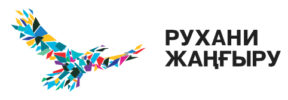
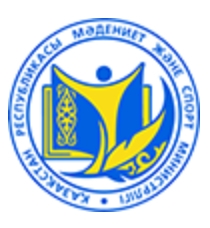
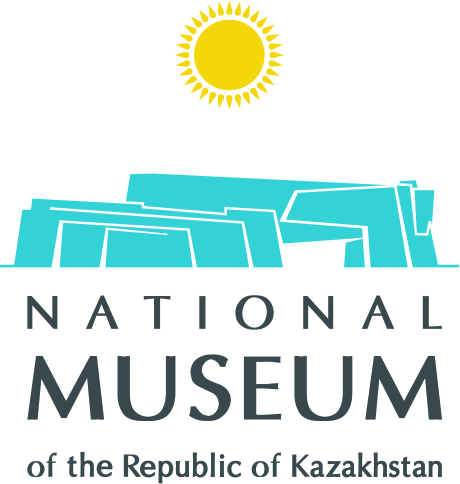
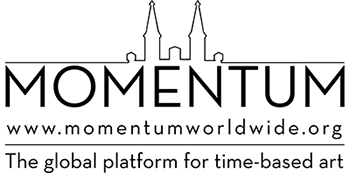


 Back to Homepage
Back to Homepage

